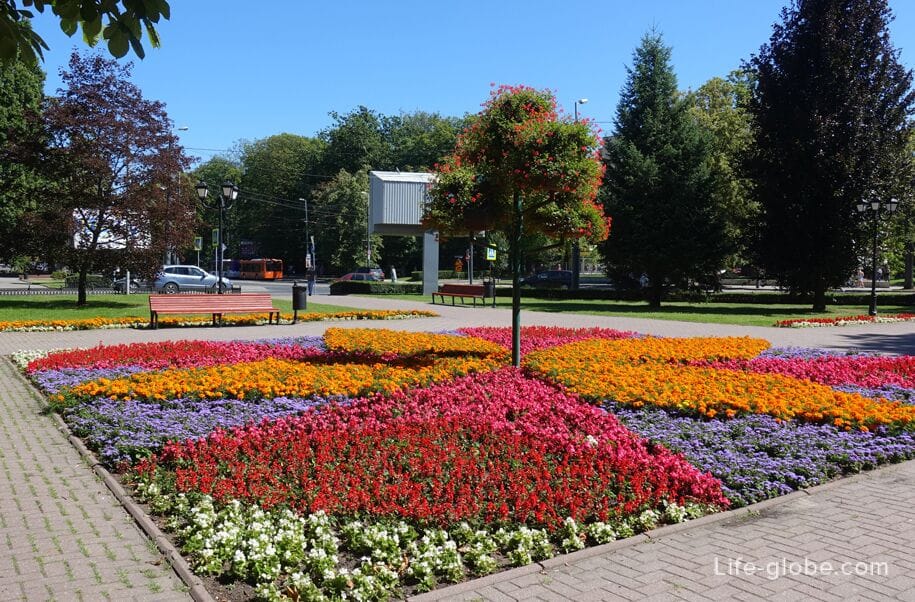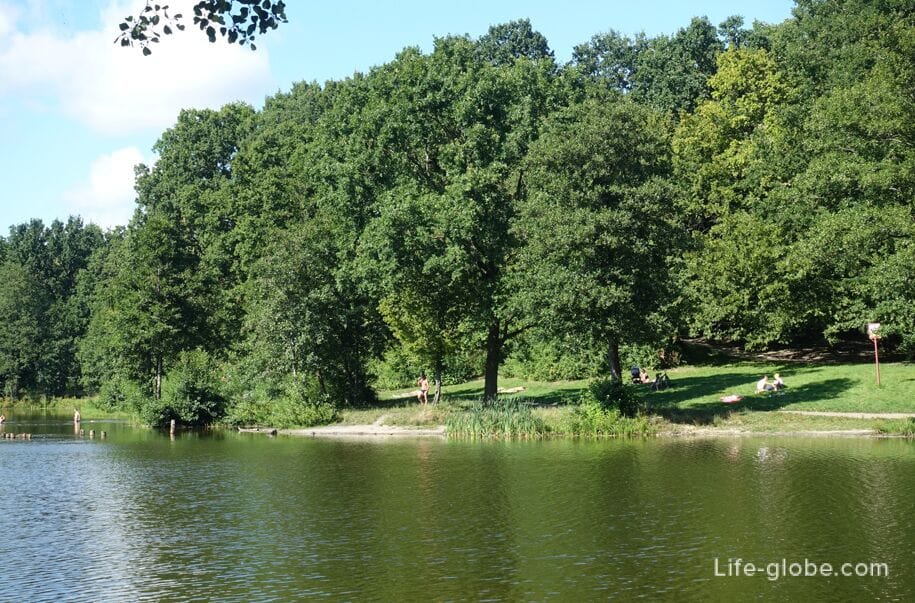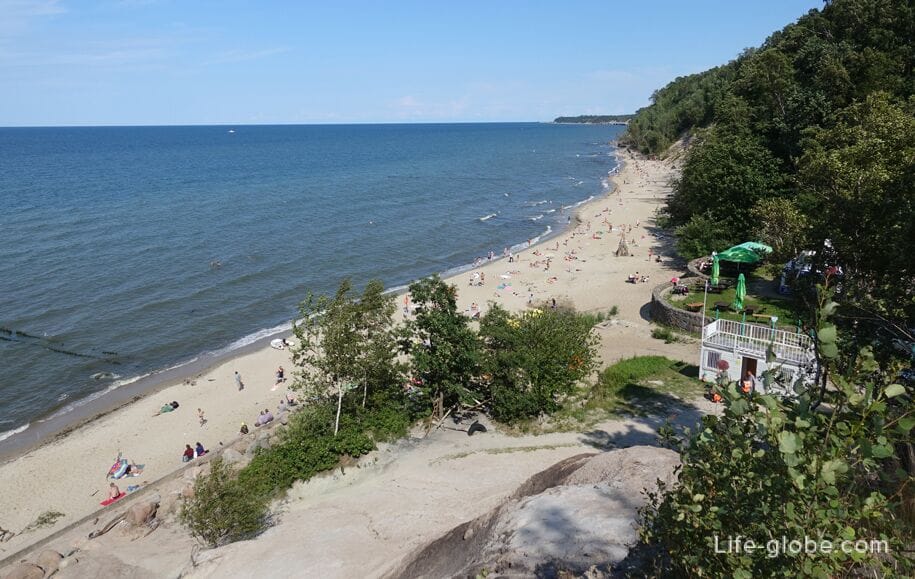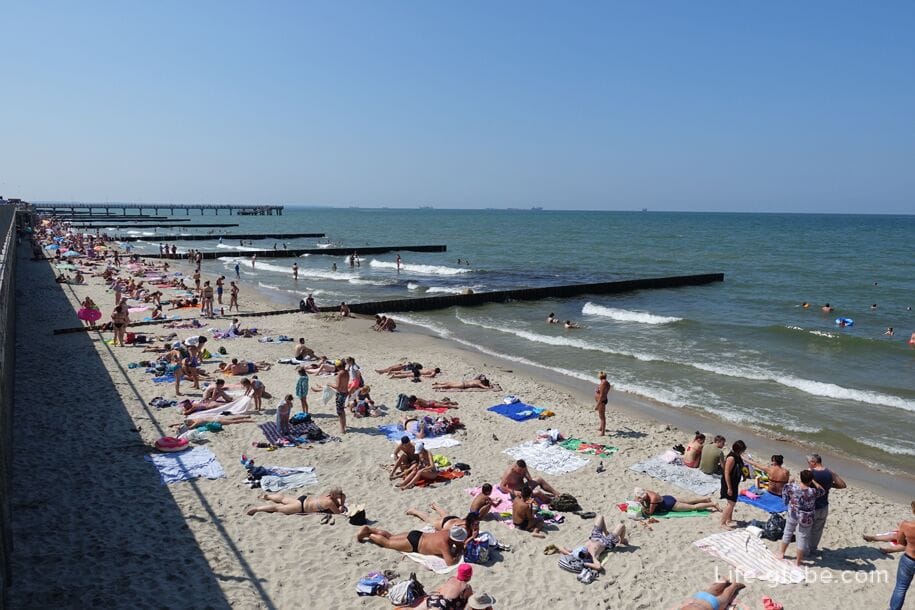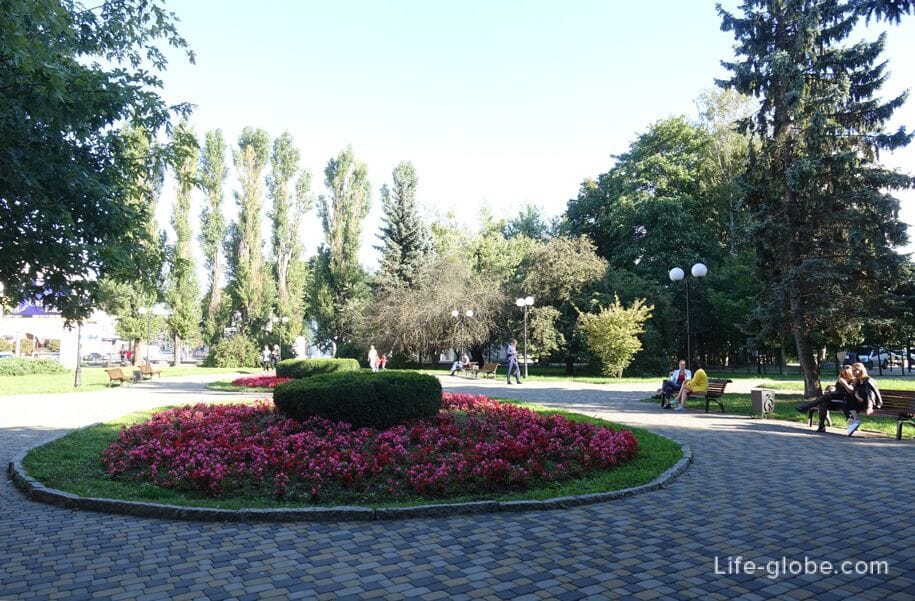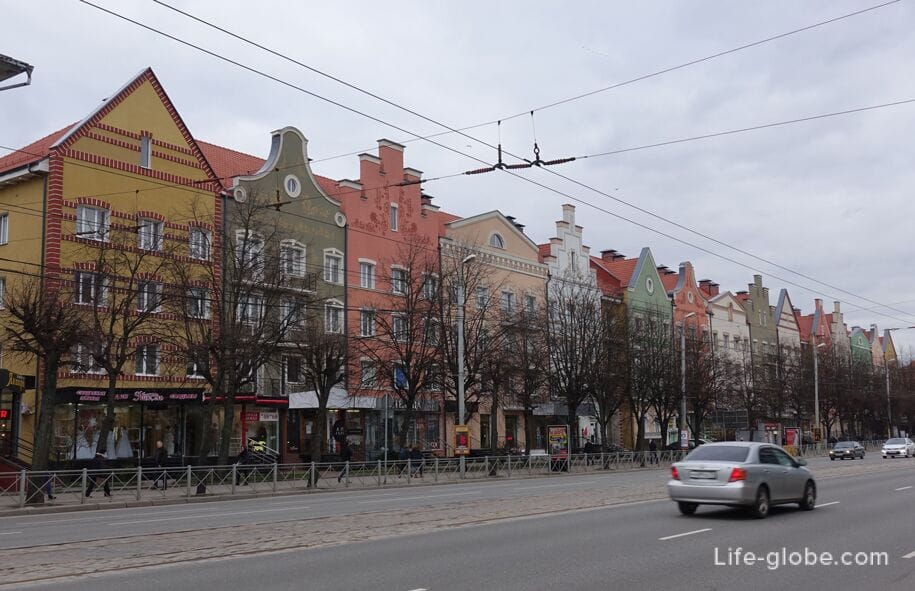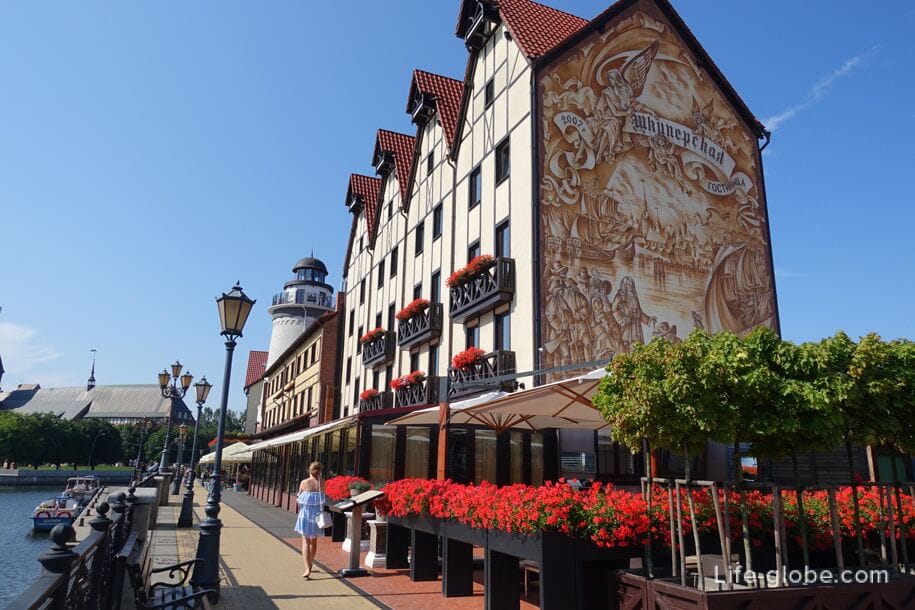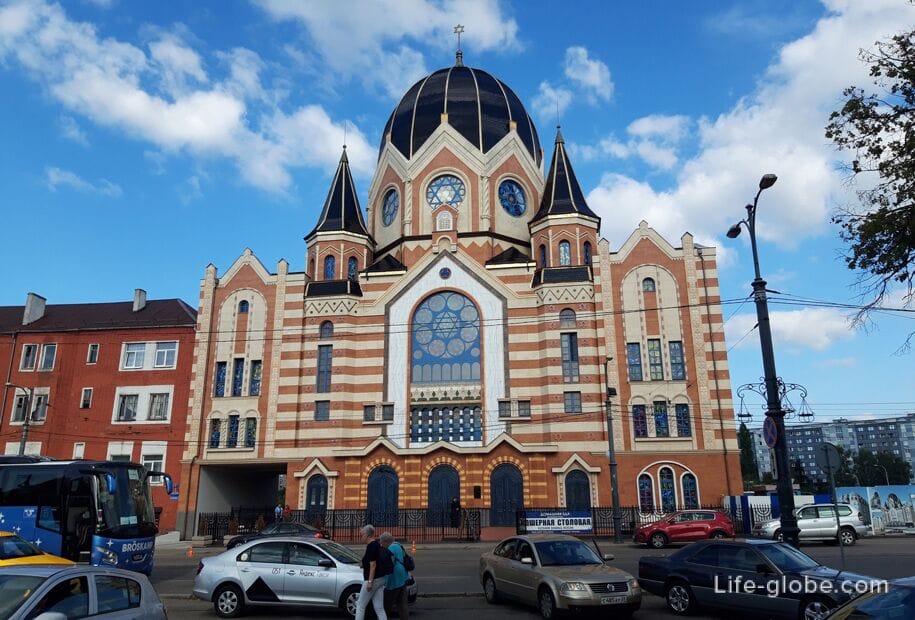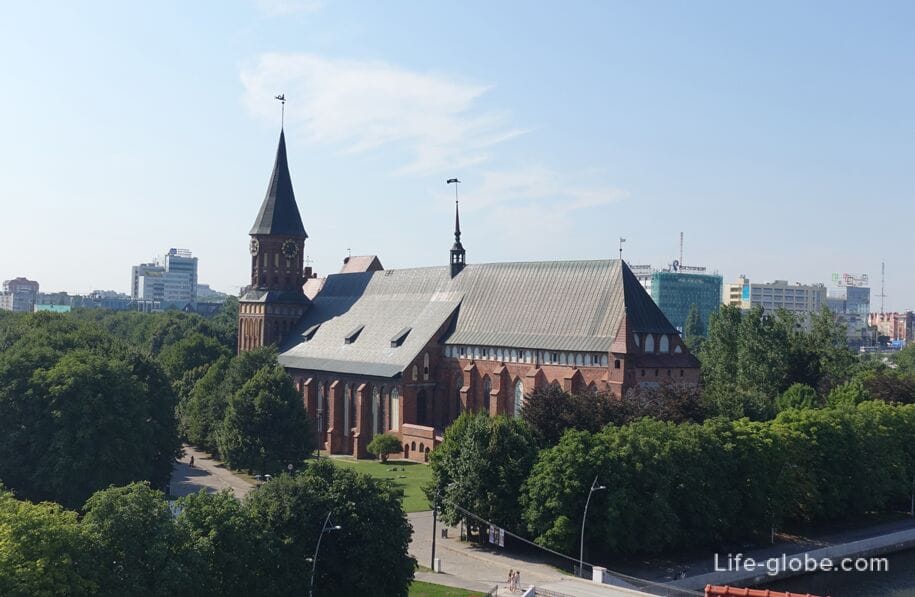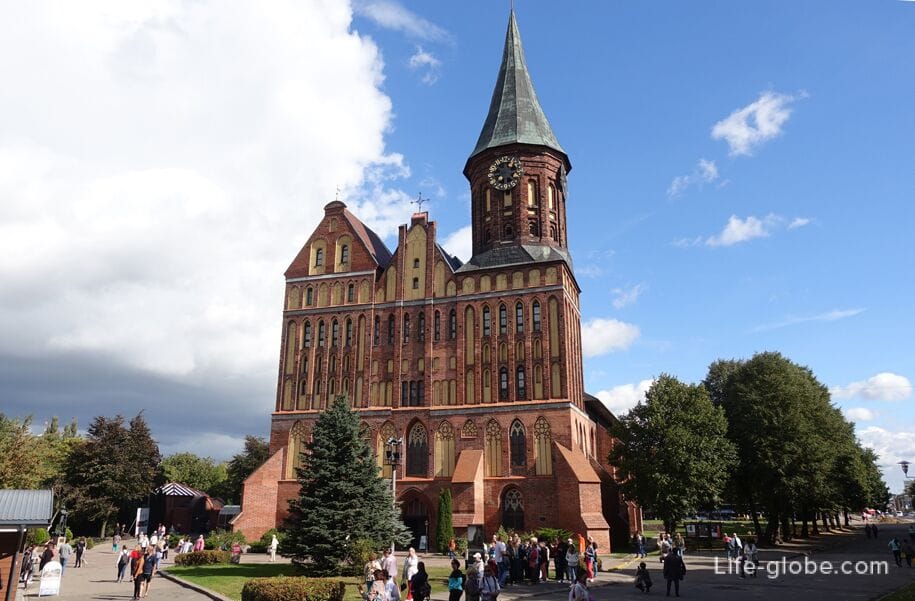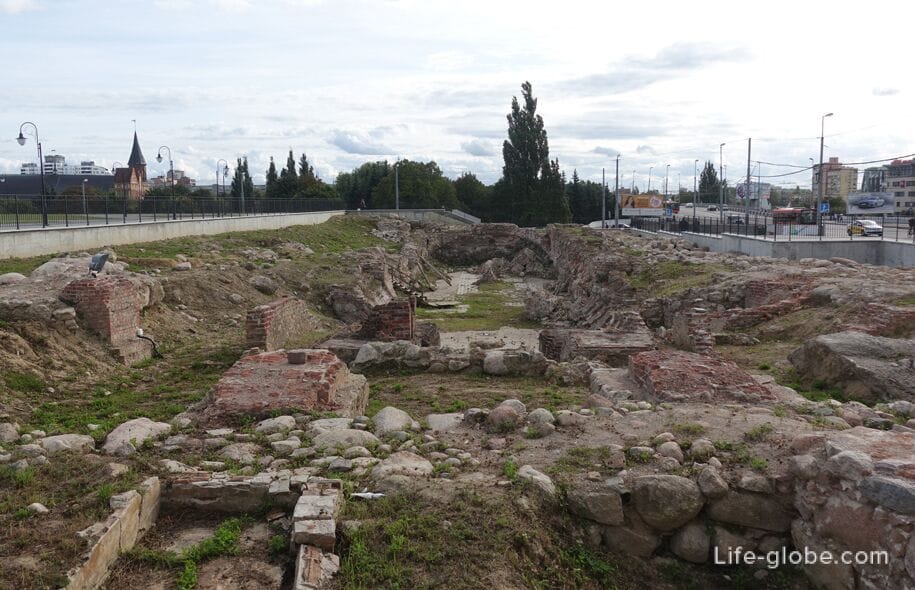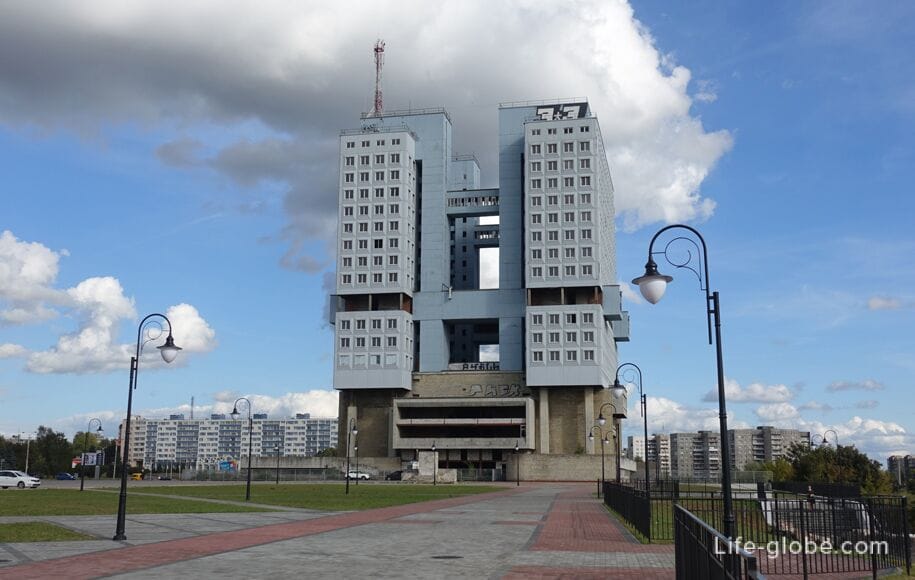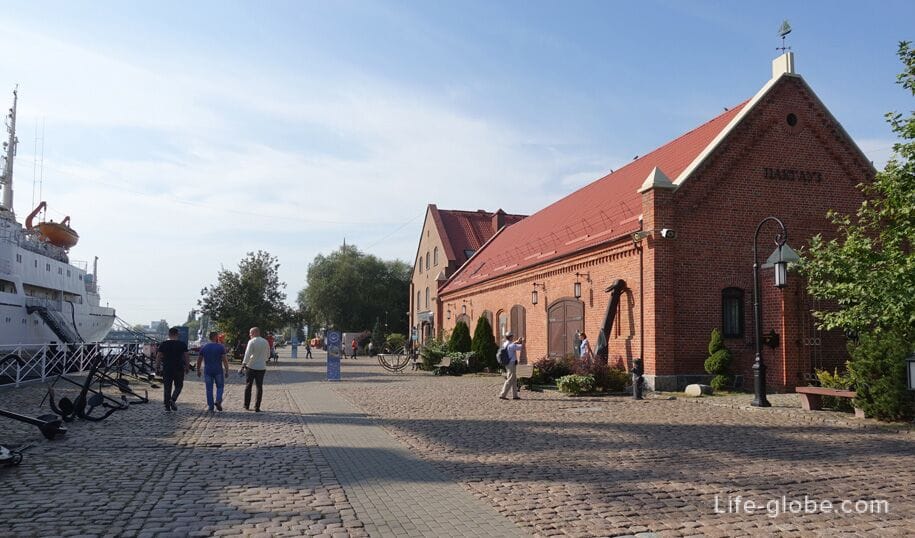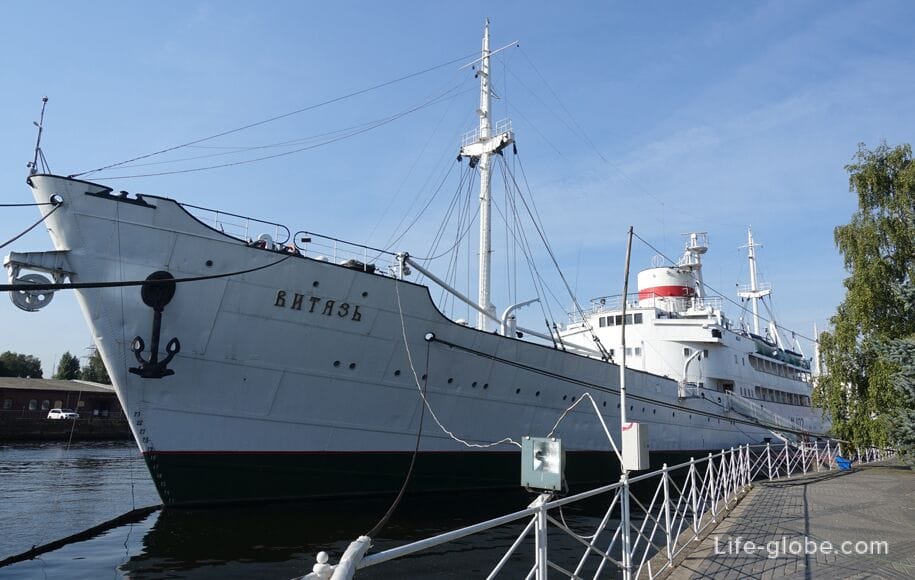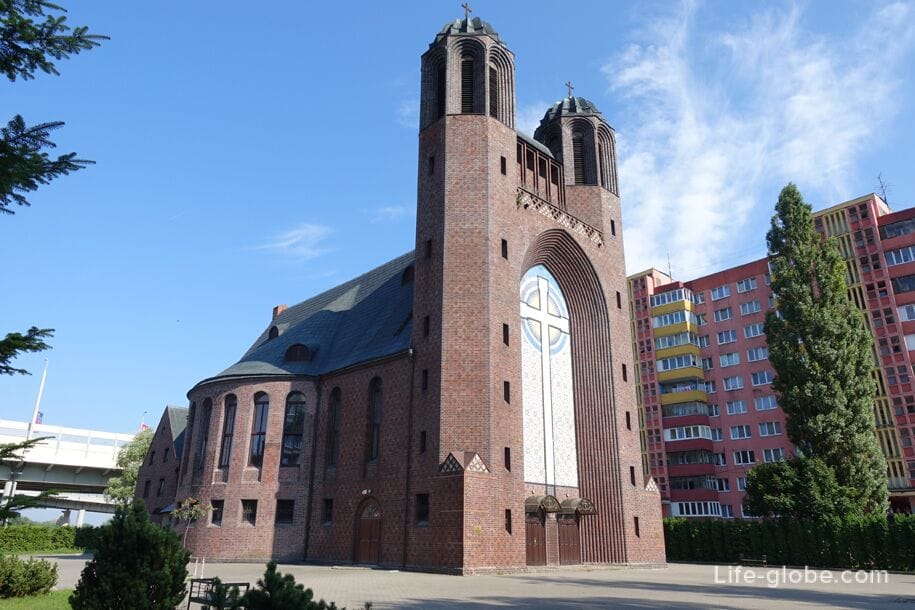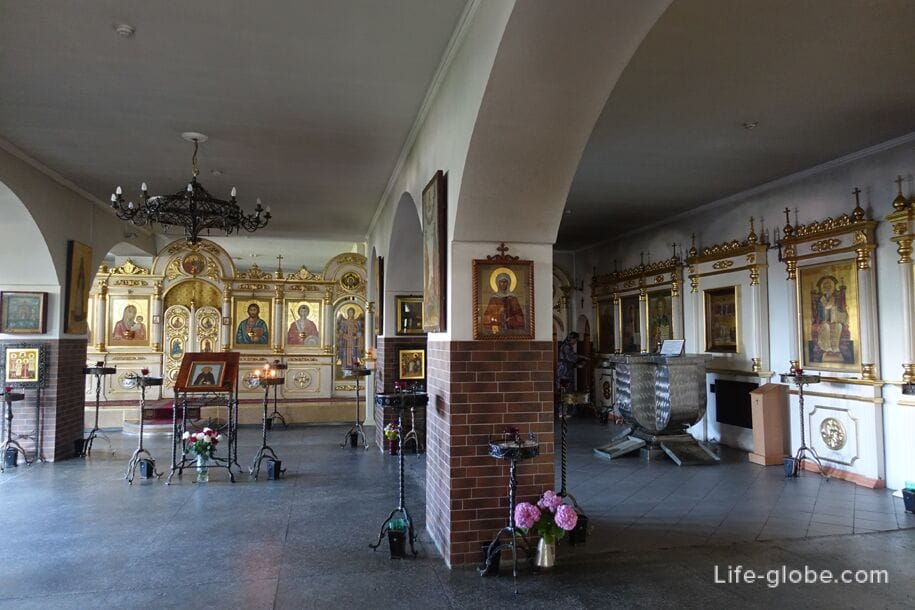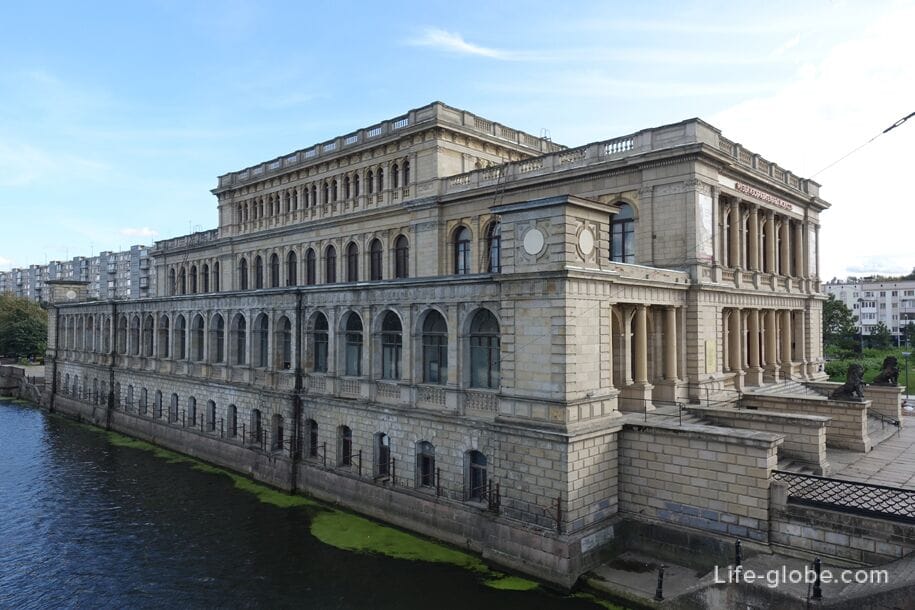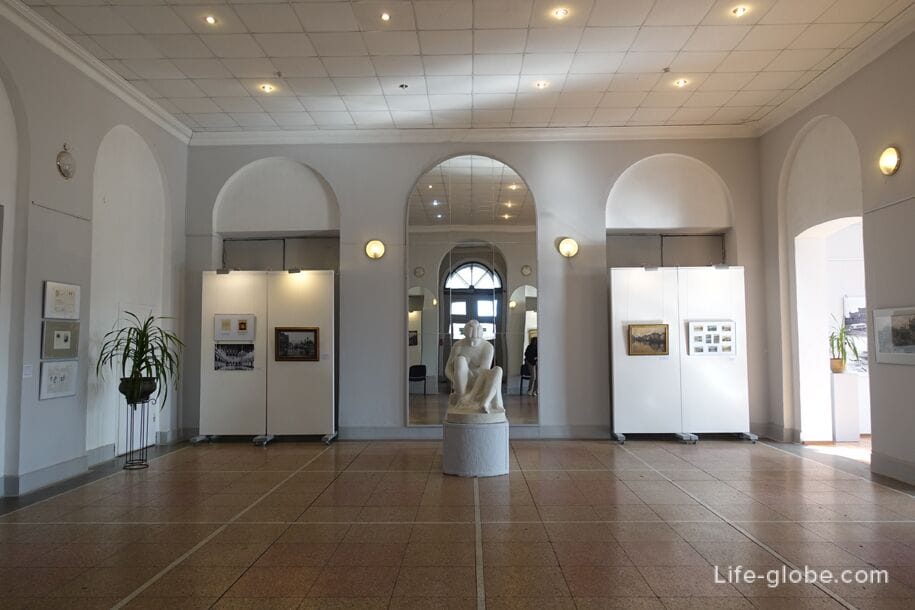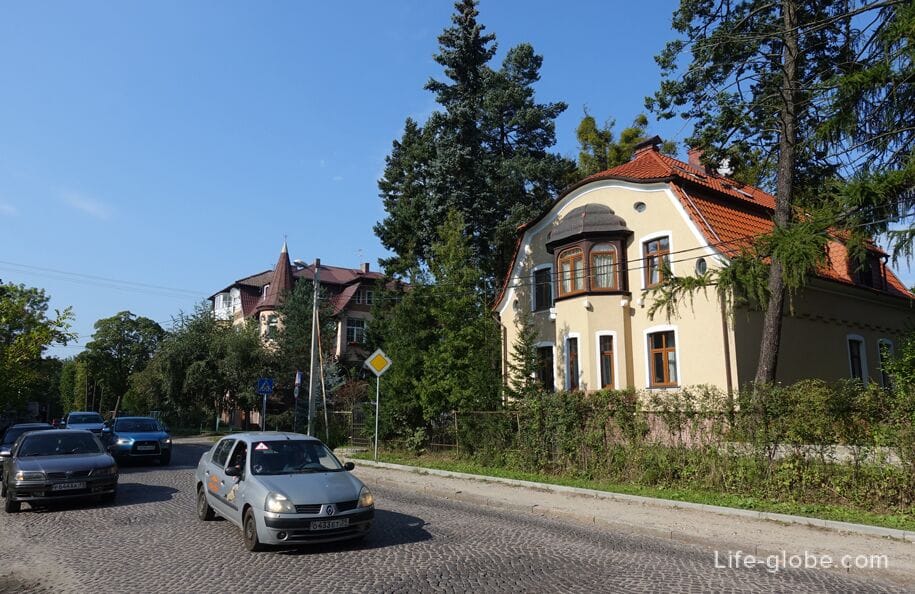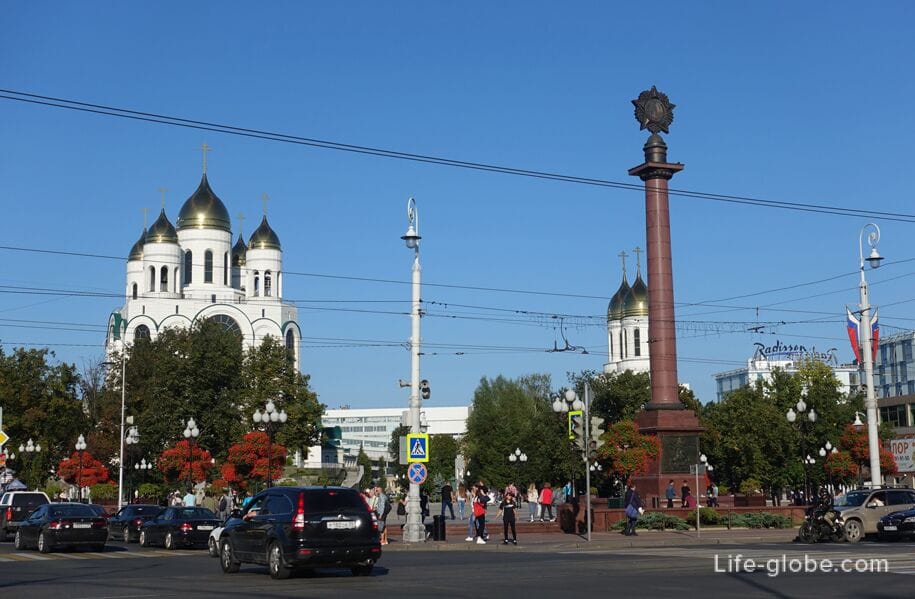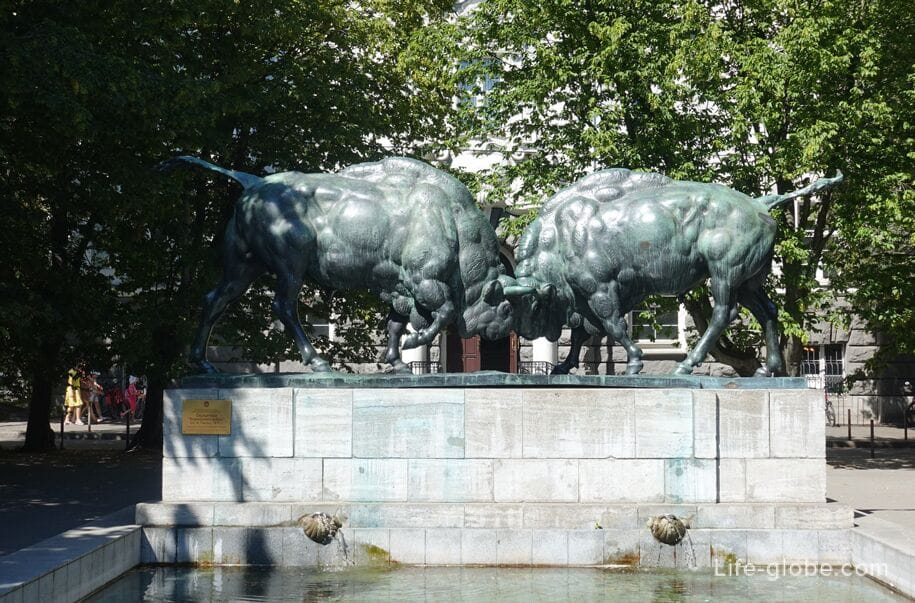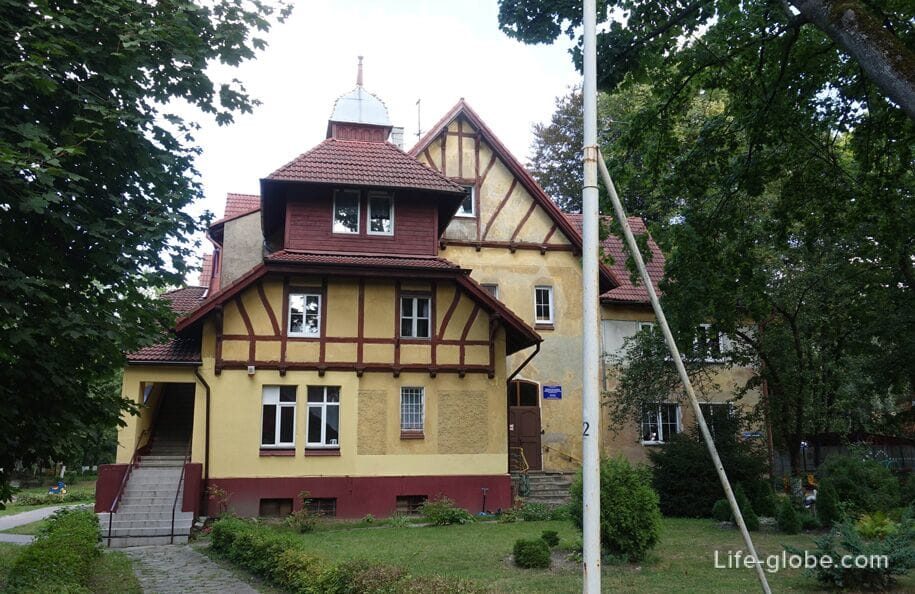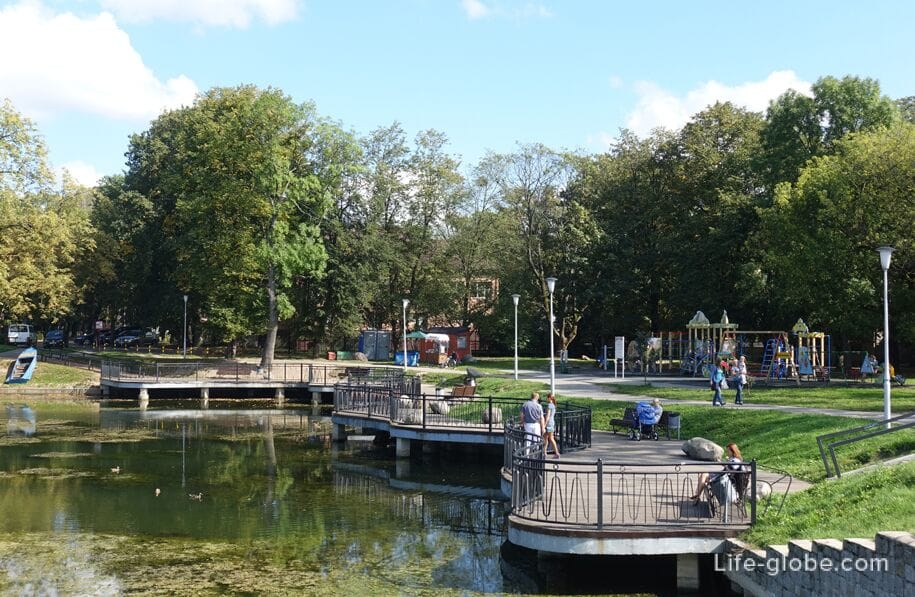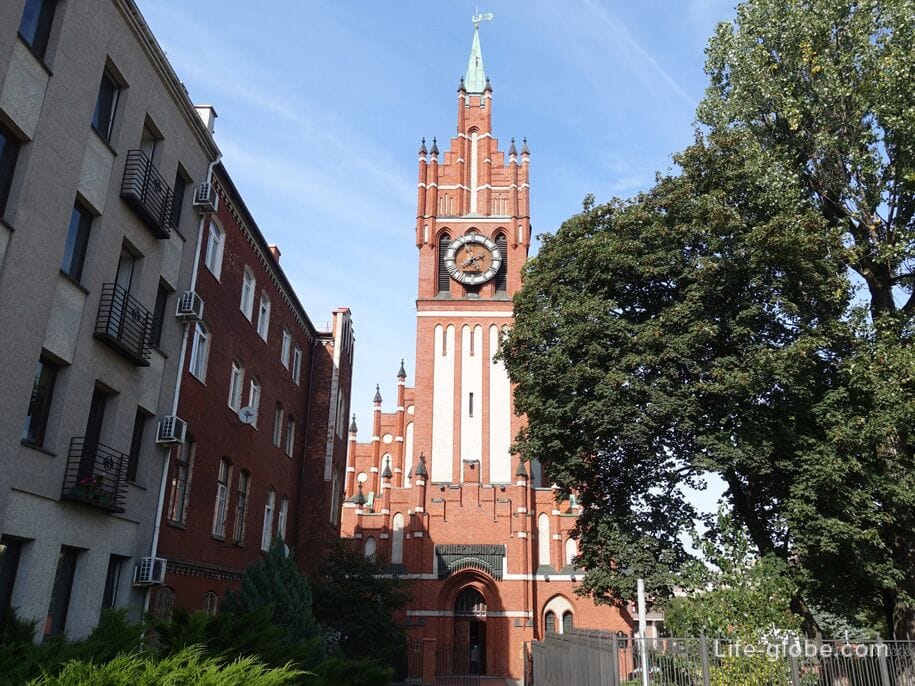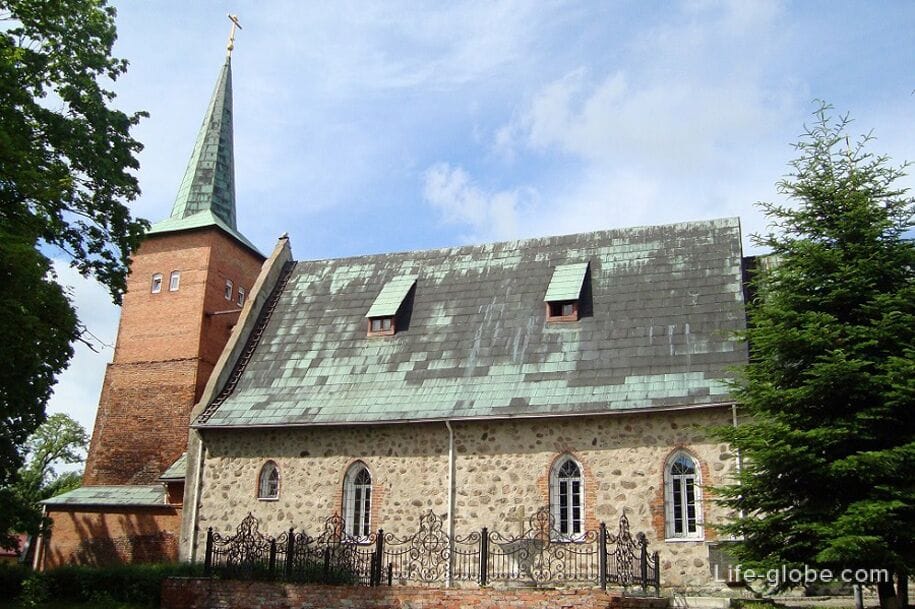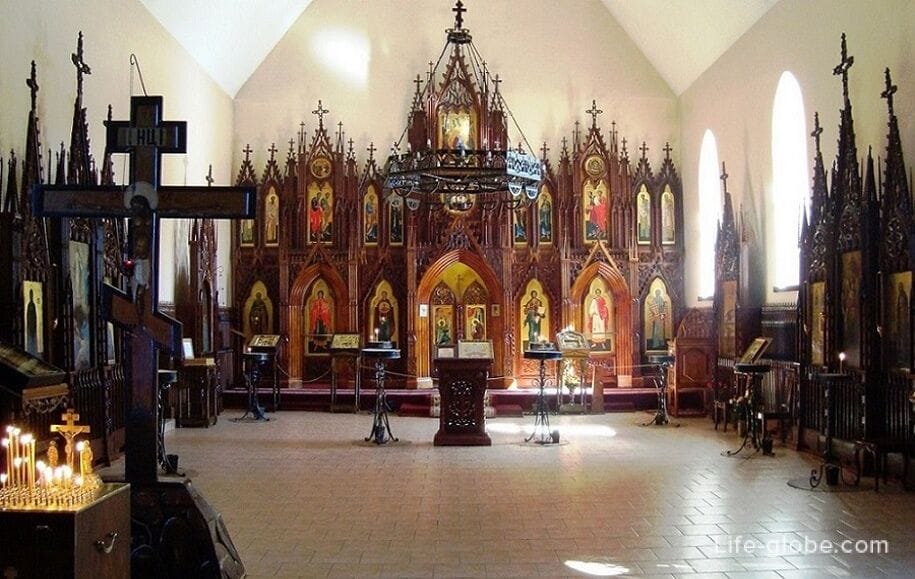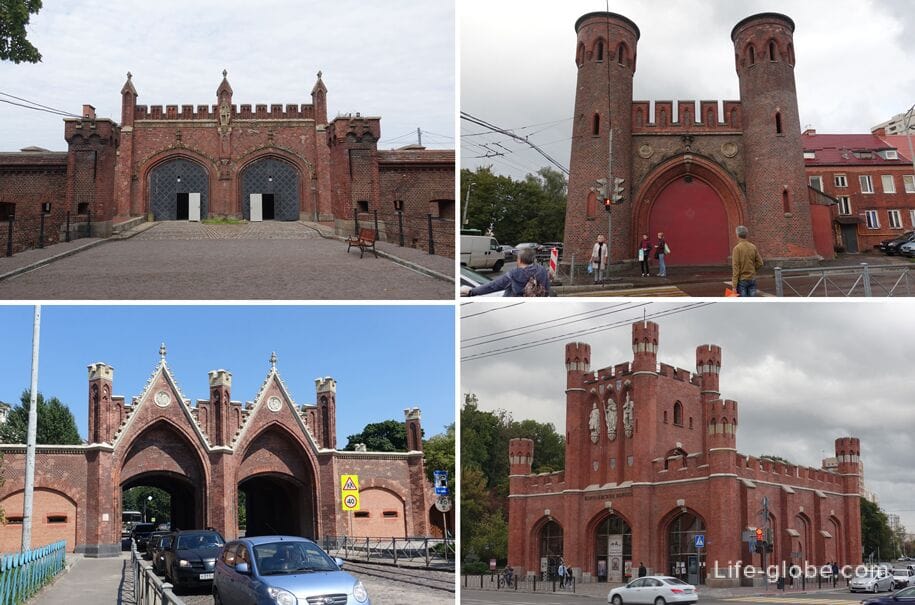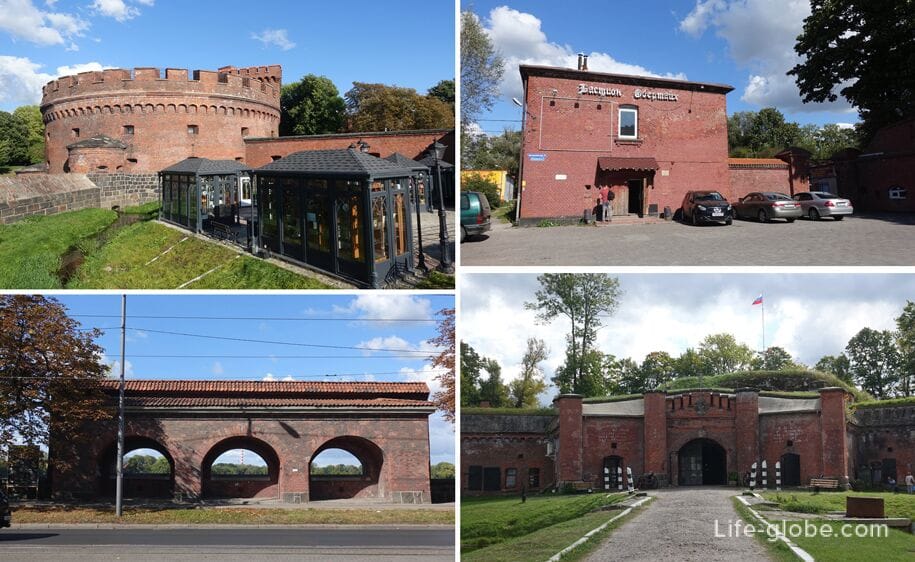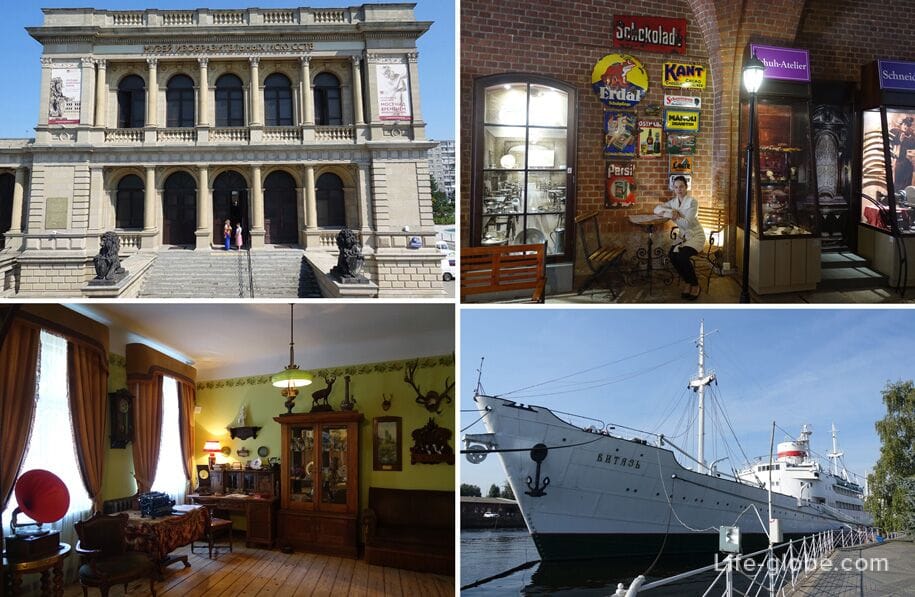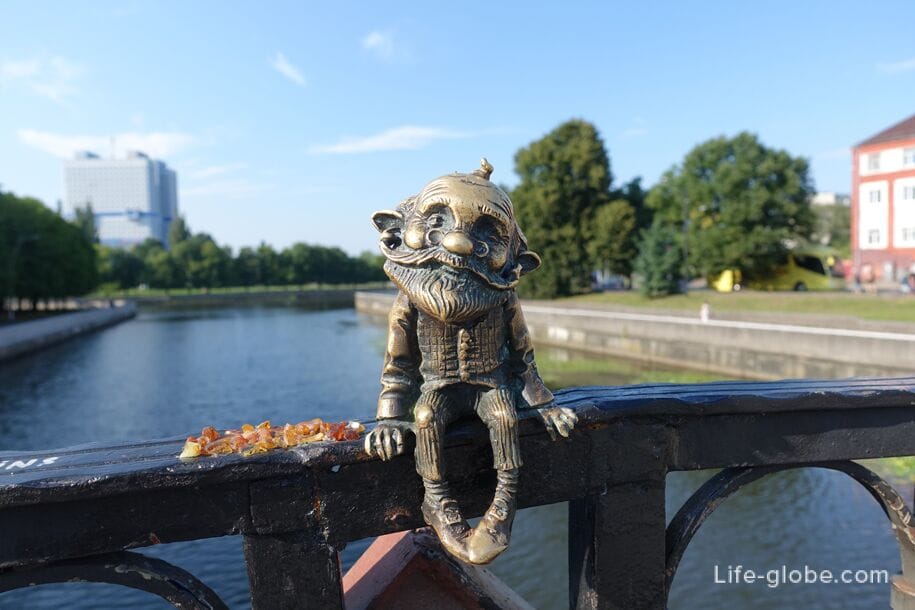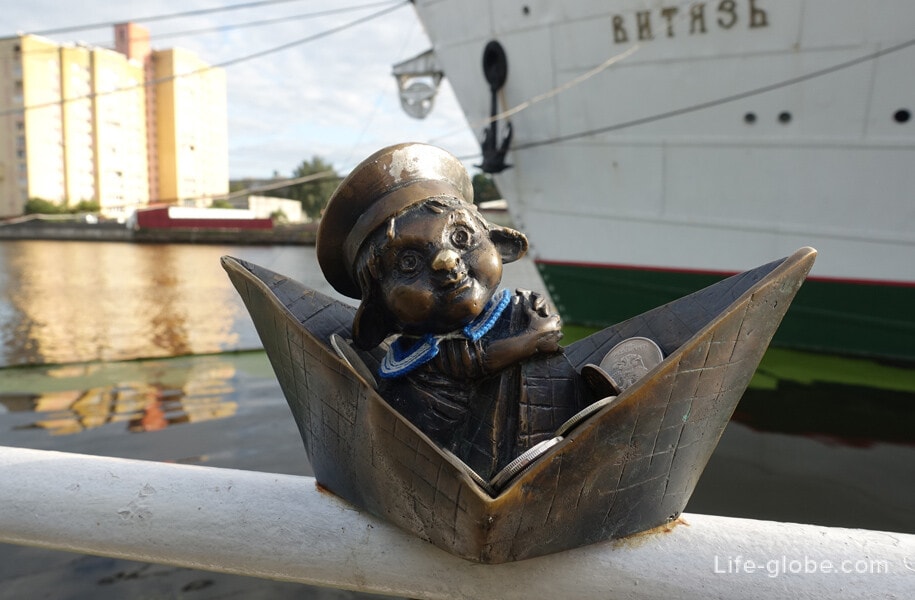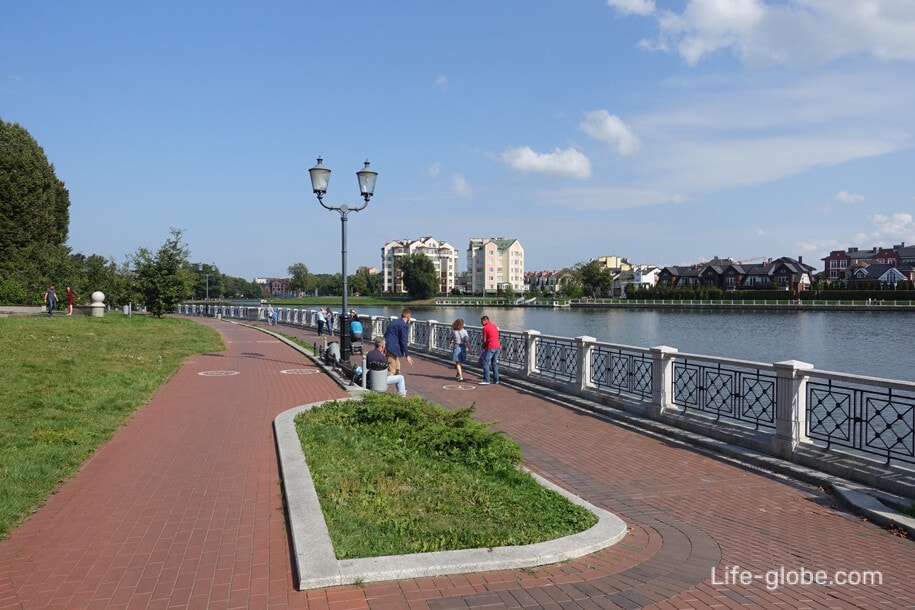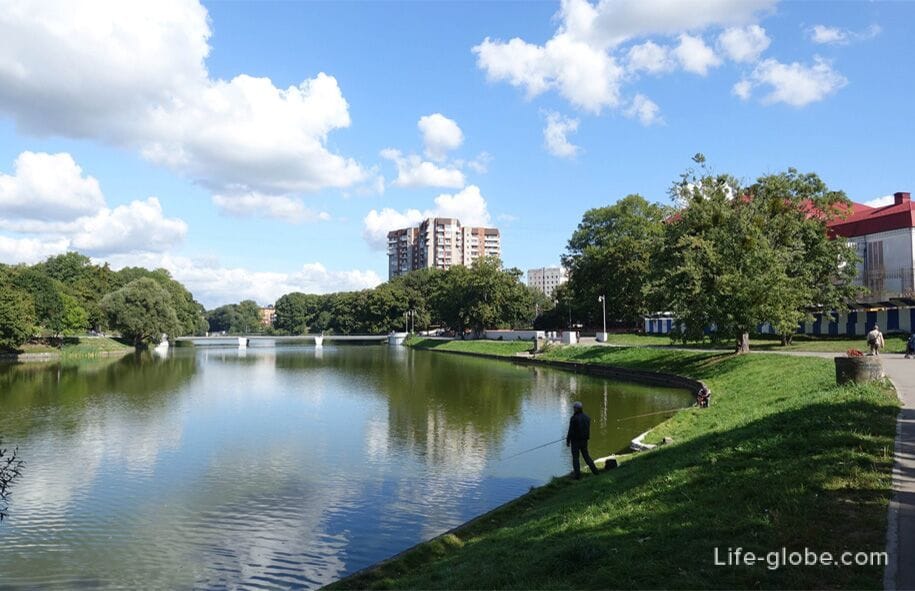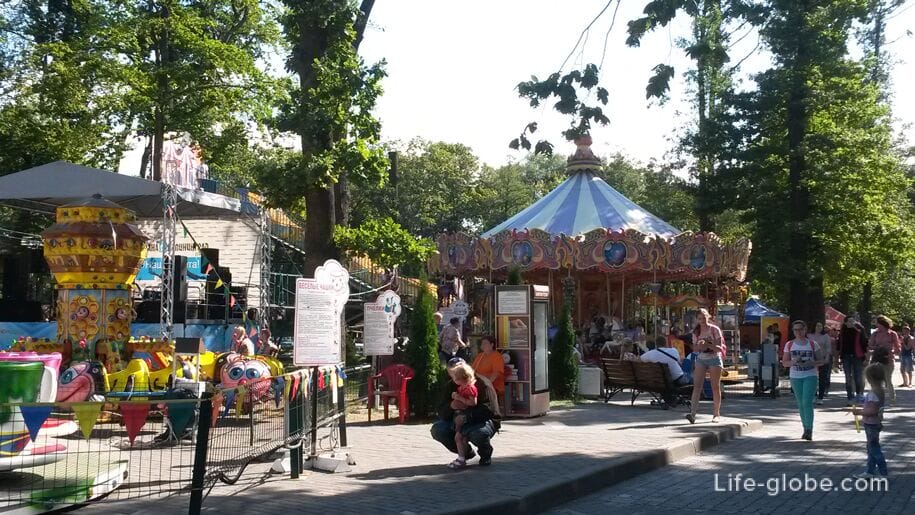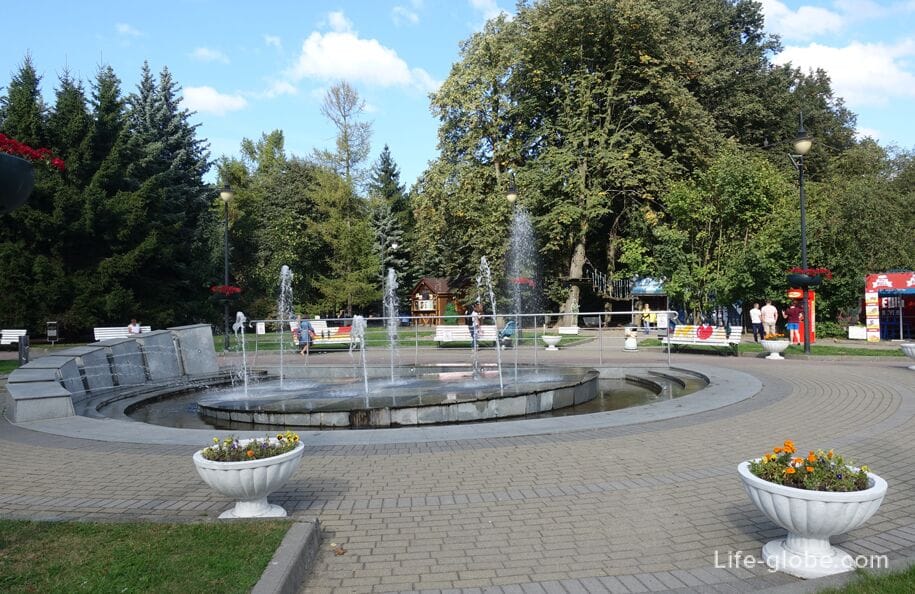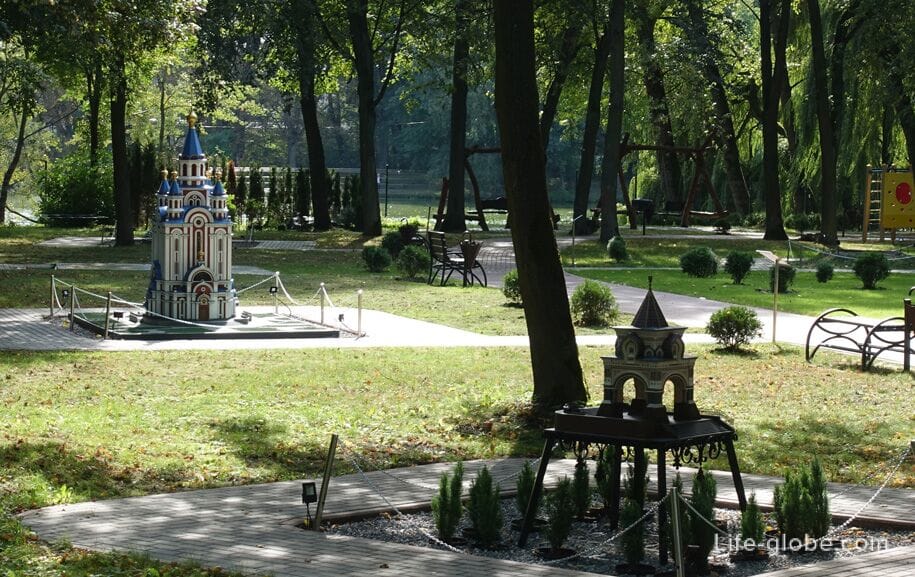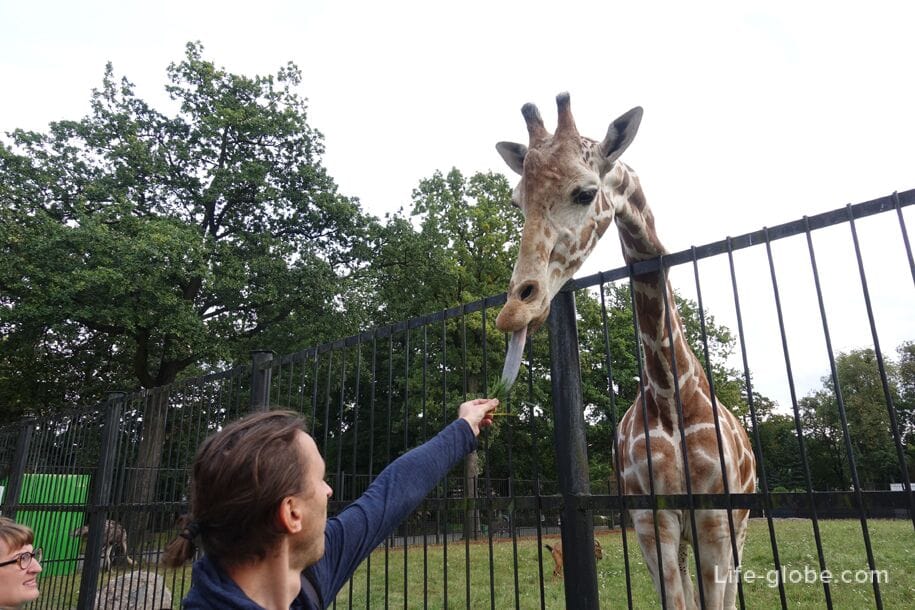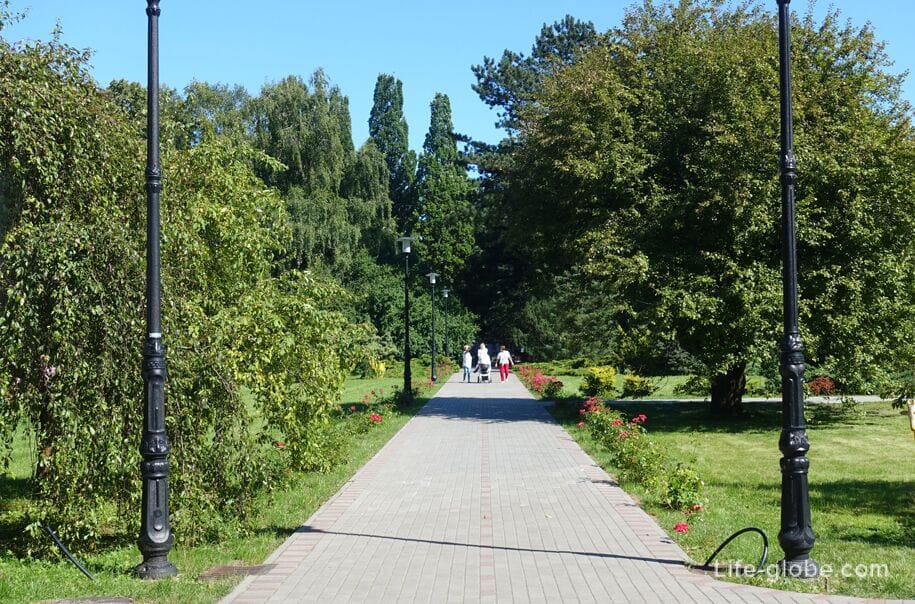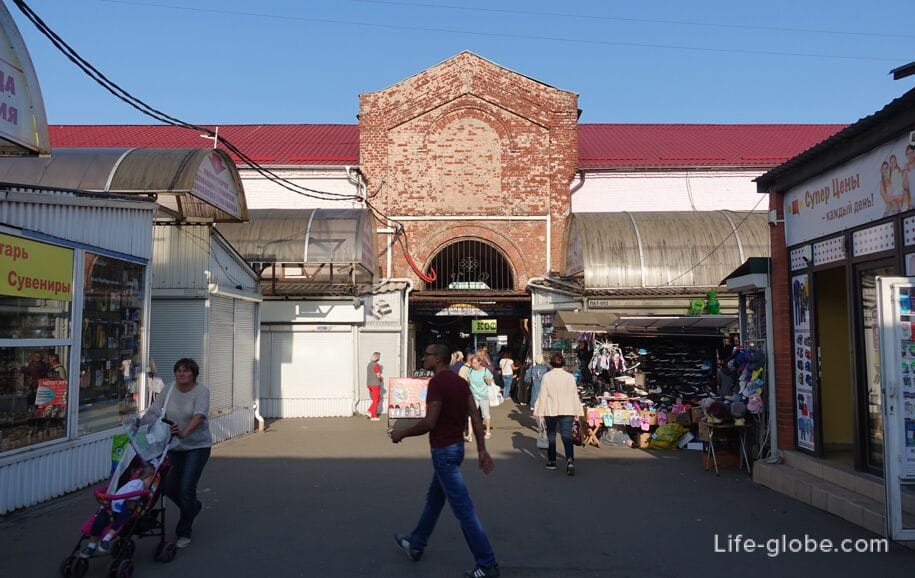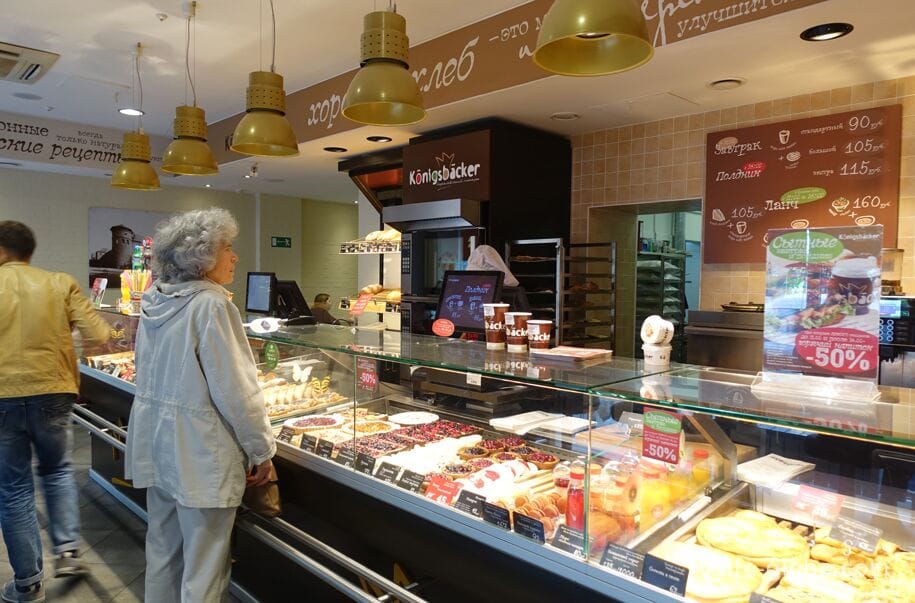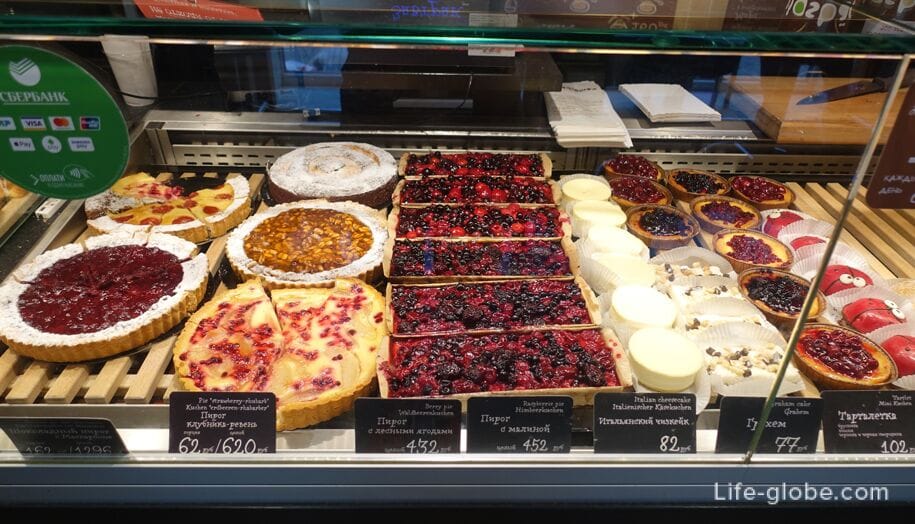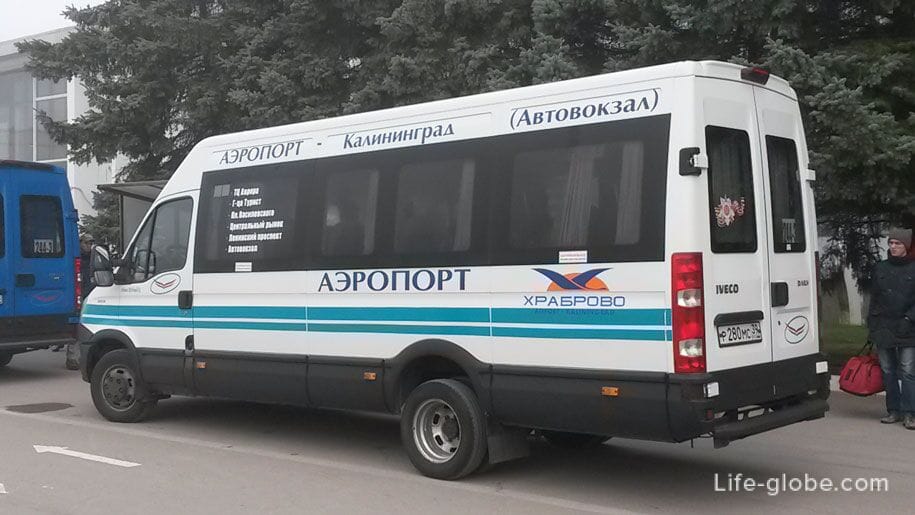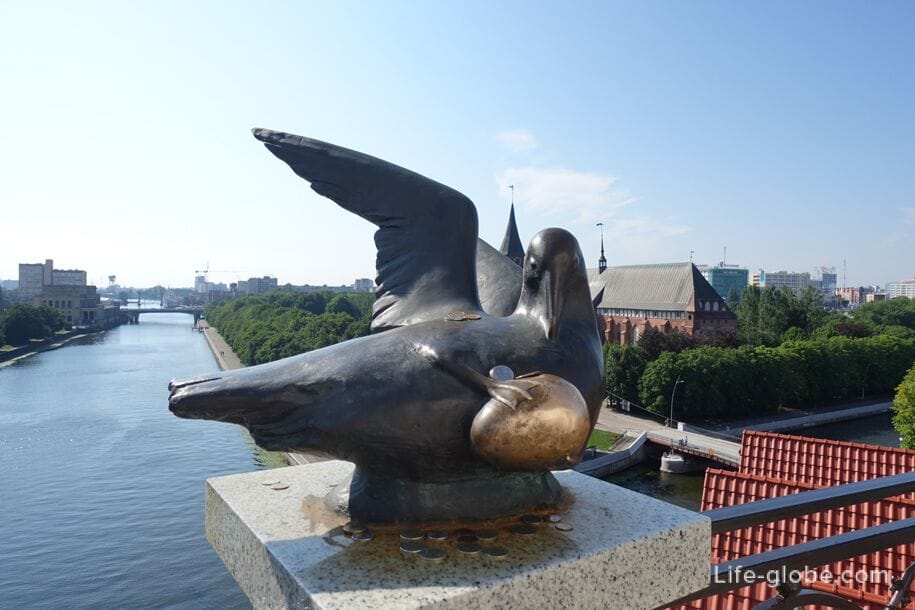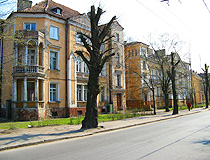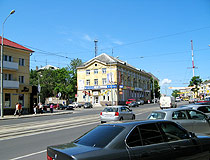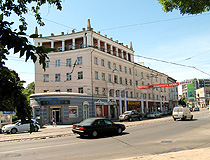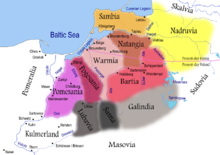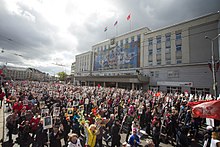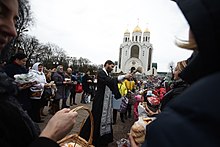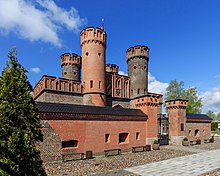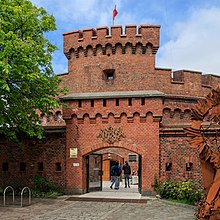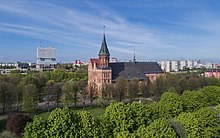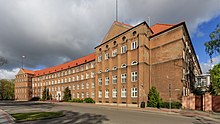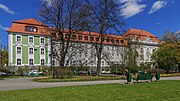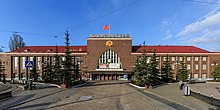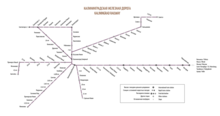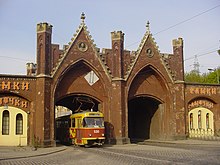Kalinigrad is a city in northwest Russia and the center of Kaliningrad Oblast (Region). This region is unique in the country, not having any common borders with other Russian regions, while neighboring Poland and Lithuania and bordered by the Baltic Sea.
City with a Rich Past
For a long time, Kaliningrad was part of Germany. The city’s history began in 1255, when the Teutonic Knights founded a fortress on a hill, named Königsberg (King’s Hill). The city first became part of Russia in 1758 as a result of its victory in the Seven Years’ War. However, in 1762 the land was returned to the Kingdom of Prussia. In 1946, Koenigsberg again became a Russian city when WWII resulted in some German lands being transferred to the Soviet Union. Upon this transfer, the city received a new name – Kaliningrad, after the Soviet politician Mikhail Kalinin.
Seacoast City
Although Kaliningrad has no direct access to the sea, since it is located near the place where the Pregolya River enters Kaliningrad Bay, the city still has a large port and hosts the headquarters of the Baltic Fleet of the Russian Navy. In the small towns near Kaliningrad, there are beaches, reachable by bus, shuttle bus, or commuter train. But you can smell the sea in Kaliningrad itself, since it has winds and rains.
City of Philosophers
Königsberg was the birthplace and residence of one of the world’s greatest philosophers, Immanuel Kant. His tomb is located near the walls of the 14th Century Cathedral, with the Kant Museum and Concert Hall hosting organ performances. Interestingly, the philosopher lived in Königsberg during its transfer to the Russian Empire, which means that Kant took the oath of citizenship and allegiance to Elizabeth of Russia. When the province was returned to Prussia, Kant refused to violate his oath, and remained a citizen of Russia until his death.
City of Culture
Kaliningrad often hosts various musical shows and performances, including international ones, such as the Mikael Tariverdiev Organ Competition, the Kaliningrad City Jazz Festival, the Kaliningrad in Rock Festival, and many more. Every autumn, the city hosts the Baltic Seasons Art Festival, at which theaters from many Russian regions present their best performances.
City of Amber
The city symbol is the Amber Museum, located in a red-brick tower which once formed part of the fortress. The Museum showcases sunstone of various shades, shapes, and sizes, with the largest exhibit weighing more than 4 kg. It also has the world’s largest amber mosaic, the Rus mosaic, weighing more than 70 kg and consisting of around 3,000 elements.
City of Academic Traditions
Kaliningrad is home to more than 20 colleges and universities. The largest is Immanuel Kant Baltic Federal University, with some of its buildings once belonging to Albertina University of Koenigsberg, founded in 1544. City universities also provide naval graduates, fishing specialists, lawyers and others.
What to See
Fishing Village
Unfortunately, the historic center of Kaliningrad was devastated during WWII. However, many buildings have now been restored. For example, the Fishing Village was restored in 2007, as a German style craft trades area.
Historic Zoo
The Kaliningrad Zoo is one of the largest and oldest in Russia, and a member of the European Association of Zoos and Aquaria. The zoo was founded by the businessman German Klaas in 1896.
Museum of the World Ocean
This is a unique exhibition center, with some of its displays located on the water: both scientific and military vessels are moored along the Historic Fleet Embankment, with exhibition halls inside them. The second part of the Museum is located on land: aquariums with exotic fish, collections of shells and corals, and the skeleton of an enormous sperm whale.
King’s Gate
This Gate is situated near the World Ocean Museum and their image became the city mascot during the celebrations of the 750th anniversary of Koenigsberg. Now, the King’s Gate hosts the Great Embassy exhibition, which displays the history of the city’s foundation and development. Visitors to the King’s Gate are first met by the keeper of the keys to the city: the Prussian Cat, which is believed to bring good luck if you pet it.
Kaliningrad lies on the shores of the Baltic Sea. It is the administrative center of Kaliningrad Oblast. Калининград находится на берегу Балтийского моря и является административным центром Калининградской области.
The city was founded in 1255 on the banks of the Pregoli River. Город был основан в 1255 году на берегах реки Преголи.
The city’s area is 224 square kilometers. The population of the city is about 467 thousand people. Площадь города составляет 224 квадратных километров. Население города примерно 467 тысяч человек.
Kaliningrad consists of three districts: Leningradskiy, Moscovskiy, Centralniy. Centralniy district is located in the northwestern part of Kaliningrad. It is industrial center of the city. Калининград состоит из трех районов: Ленинградский, Московский, Центральный. Центральный район расположен в северо-западной части Калининграда. Это промышленный центр города.
Moscovskiy district is located in the southern part of Kaliningrad. This area is a recreational center for the city’s residents. Leningradskiy district is the north-eastern part of the city. It includes various villages.Московский район находится в южной части Калининграда. Этот район является рекреационным центром жителей города. Ленинградский район – северо-восточная часть города. В него входят разные поселки.
Kaliningrad’s main attractions are the Holy Cross Cathedral, the Nesselbeck Castle, and others. In Kaliningrad, it is worth to visit the Fish Village. Главные достопримечательности Калининграда: Крестовоздвиженский собор, Замок Нессельбек, и другие. В Калининграде обязательно стоит посетить Рыбную деревню.
There are many beautiful parks in Kaliningrad. Tourists love the Ratshof Park and Sculpture Park. В Калининграде много красивых парков. Туристам очень нравятся парк Ратсхоф и Парк скульптуры.
The transportation system of Kaliningrad is represented by aerial, aquatic, public and railway transport. Транспортная система Калининграда представлена воздушным, водным, общественным и железнодорожным и транспортом.
Калининград — крупный город и административный центр Калининградской области, а также самый западный центр Российской Федерации.
Географически Калининградская область оторвана от основной части России (которую местные называют «Большой землей») и находится между Польшей, Литвой и Балтийским морем.
Тем не менее, Калининград, и область в целом, — это типичный российский регион, с отголосками прусской Германии и, конечно же, для многих незримыми, но порой явно проявляющимися европейскими чертами. Валюта — рубли. Язык — русский.
До окончания Второй мировой войны город носил название Кёнигсберг (Königsberg) и являлся частью немецкой провинции Восточная Пруссия.
Изначально Кёнигсберг был основан Тевтонским орденом как замок (1255 год) и развивался как населенный пункт, который позже разросся в город.
С 1355 года начали возводить кольцо оборонительных стен. Оборонительный пояс в последующем разрастался и усовершенствовался, вследствие чего Кёнигсберг являлся городом-крепостью на протяжении практически всей истории существования Кёнигсберга.
Также благодаря немалому количеству парков, садов, водоемов и зеленых районов, Кёнигсберг был известен как город-сад.
Многие архитектурные сооружения Кёнигсберга были уничтожены как во время Второй мировой войны, так и в последующем — во времена Советского Союза, который также внес свои коррективы в облик города. В последующем, некоторые из объектов Кёнигсберга были отреставрированы либо отстроены заново с максимальным приближением к их историческому облику.
Благодаря этому, в настоящее время в Калининграде находится немалое количество достопримечательностей, в том числе и исторических, а также музеев, которые могут рассказать своим гостям об истории, неоднородной культуре края и образе жизни жителей Кёнигсберга-Калининграда.
Богат Калининград и парками, зелеными зонами и водоемами, что, в какой-то степени, до сих пор свидетельствует о городе-саде.
Часовой пояс Калининграда
Калининград и область в целом находятся в часовой зоне МСК-1, то есть калининградское время разнится с московским на -1 час: если в Москве полдень (12 часов дня), то в Калининграде и области будет 11:00 часов.
Часовой пояс всемирного координированного времени: Калининградское время отличается на +2 часа от UTC (UTC+2).
Климат в Калининграде и температура воды в море
Климат в Калининграде переходный от морского к умеренно-континентальному, с большим количеством пасмурным дней и осадков в виде дождей, также нередки в городе ветра, на что оказывает влияние близость прохладного моря.
Благодаря влиянию Гольфстрима — теплое морское течение атлантического океана, — зима в Калининграде теплее, весна наступает раньше, а осень — несколько позже, чем в материковых районах на той же широте.
Летом в Калининграде редко бывает очень жарким, в основном температура в июле-августе держится на уровне +22 с небольшим °C. Но бывают и пасмурные холодные годы, равно как и жаркие сезоны, когда жара стоит довольно долго, а вода в Балтийском море прогревается до +23°C, бывало — доходила и до +25°C. Средняя же температура морской в июле-августе месяцах воды обычно составляет где-то 19,4°C.
Загорать на пляжах Калининградской области, при теплом солнечном годе, начинают уже в апреле-мае. Сезон может длиться до начала октября. Также, некоторые смельчаки, в эти времена года окунаются в морских водах.
Если говорить объективнее, то погода в Калининграде весьма непредсказуема, за один день может несколько раз пройти освежающий дождик, выглянуть солнце и(или) налететь ветер. Однако, несмотря на всё это, климат в Калининграде куда мягче, чем в большей части России, а совершать приятные прогулки вдоль моря, дыша морским воздухом — можно круглогодично.
Главные улицы Калининграда
Проспекты Мира и Ленинский — одни из главных, а также самые посещаемые и интересные улицы центра Калининграда.
Обе улицы являются проезжими, с пешеходными тротуарами по обеим сторонам.
Вдоль проспектов расположены некоторые из значимых исторических зданий города, есть несколько скверов, в которых можно отдохнуть, парк, зоопарк, стадион, театры, фонтаны, скульптуры и памятники, а также кафе, рестораны и магазины. Подробнее о проспектах Мира и Ленинском (+ улице Театральной)…
Достопримечательности Калининнграда
Рыбная деревня
Рыбная деревня — этнографический и торгово-ремесленный комплекс, расположенный в самом сердце Калининград, на берегу реки Преголя (набережная Ветеранов).
Комплекс «Рыбная деревня» стилизован под довоенный восточно-прусский город Кёнигсберг.
Сам по себе комплекс небольшой, тянется от Медового моста, соединяющего рыбную деревню с островом Канта, до Высокого моста и представляет собой набережную.
На набережной расположены кафе, рестораны и магазины, есть смотровая башня «Маяк», 4-звездочный отель Кайзерхоф, 3-звездочная гостиница Шкиперская и отель «У медового моста», а с причалов Рыбной деревни можно отправиться на морскую прогулку по реке Преголя. Подробнее о рыбной деревне…
[booking blog_id=62]
Новая синагога
Новая либеральная синагога или Кёнигсбергская синагога (Neue Liberale Synagoge Königsberg), изначально была построена в Кёнигсберге в конце 1890-х годов и уничтожена — сожжена, а после окончательно разрушена, во время Второй мировой войны.
Синагога была отстроена в прежних формах и на том же месте, где раньше находилась кёнигсбергская синагога, в период 2011 — 2018 годы (2020-й год — внутренняя отделка).
Фасад, купол и основные помещения Новой синагоги максимально приближены к их историческому облику.
По синагоге проводят платные экскурсии.
Синагога расположена возле «Рыбной деревни», по адресу: улица Октябрьская, 1а. Подробнее о Новой синагоге…
Остров Канта с Кафедральным собором
Остров Канта, полное название остров Иммануила Канта — историческая нежилая островная часть города Калининграда, расположенная в окружении реки Преголя.
Ранее остров Канта носил название Кнайпхоф (Kneiphof), которое происходит от прусского «Knypabe», что означает «Окруженное водой, рекой».
Основными достопримечательностями острова Канта являются: Кафедральный собор, изначально являвшийся главным католическим храмом Кёнигсберга; могила Канта и парк скульптуры, а также Медовый мост, связывающий остров с Рыбной деревней.
Руины замка Кёнигсберг и «Дом Советов»
Вблизи Рыбной деревни и острова Канта, на Центральной площади, находятся две неброские, но известные достопримечательности города:
— малые остатки некогда величественного Королевского замка (замок Кёнигсберг / Das Königsberger Schloß), история которого берет начало со времен Тевтонского ордена (1255 год) и с которого началась история Кёнигсберга и, соответственно, Калининграда. Подробнее о замке Кёнигсберг…
— «Дом Советов» — самый знаменитый советский «недострой» в Калининграде, строительство которого началось в 1970 году.
Набережная Петра Великого и музей Мирового океана
Набережная Петра Великого расположена в центре Калининграда, на северной стороне реки Преголя, вблизи острова Канта и Кафедрального собора.
Изначально у набережной находился порт. Портовые сооружения в Кёнигсберге строились с 17 века. Они часто горели, затем перестраивались и изменялись.
Самой востребованной и интересной частью набережной Петра Великого является набережная Исторического флота, на которой оборудованы беседки, места для прогулок и отдыха, находятся исторические и познавательные экспонаты, а у причала набережной ошвартованы музеефицированные судна, входящие в комплекс объектов музея Мирового океана.
На одном из музеефицированных суден — судне «Витязя», функционируют гостевые каюты «Витязь», в которых, при желании, можно остановиться.
Крестовоздвиженский собор
Крестовоздвиженский собор, ранее лютеранско-евангелическая кирха Креста или Кройцкирха (Kreuzkirche), которая была освящена в 1933 году, а ныне является православным храмом.
В настоящее время Крестовоздвиженский собор привлекает внимание своим обликом с изображением огромного креста на фасаде, между двумя равновысокими башнями, которые завершаются небольшими куполами. Башни соединены крытой галереей.
Главной достопримечательностью собора является уникальный янтарный иконостас.
Адрес собора: Октябрьский остров, улица Генерала Павлова, 2. Подробнее о Крестовоздвиженском соборе…
Здание Кёнигсбергской биржи
Здание бывшей Кёнигсбергской биржи (Фондовая биржа Кёнигсберга / Königsberger Börse) выполнено в стиле неоренессанса с элементами классицизма.
Здание биржи было построено в 1870-1875 годах. Часть здания биржи находилась на суше, тогда как другая — на воде. Ходит версия, что сделки, заключенные в бирже, расположенной на воде — не облагались налогами.
В августе 1944 года биржа была повреждена — выгорели все деревянные конструкции здания.
Реконструкция здания биржи была начата в 1967 году. Внешний облик здания был сохранен, тогда как интерьеры подверглись перепланировкам.
В настоящее время в стенах биржи располагается музей изобразительных искусств.
Адрес бывшей биржи: Ленинский проспект, 83. Подробнее о бирже и музее изобразительных искусств…
Район Марауненхоф
Марауненхоф (Maraunenhof) — исторический район Калининграда, который некогда был пригородным кварталом северного Кёнигсберга.
Недвижимость в районе Марауненхоф была расположена в лесной зоне, начиная с 1571 года. Окончательно район возник и начал развиваться в начале 20-го века.
В районе Марауненхоф строили, в основном, частные особняки и элитное жилье, либо в югендстиле, либо в стиле загородного типа, с архитектурой сельского немецкого дома.
В настоящее время район Марауненхоф представляет собой остатки исторического немецкого квартала, с брусчатыми улицами и ещё сохранившимися, хотя и немногочисленными, домами бывшего Кёнигсберга. Подробнее о районе Марауненхоф…
Площадь Победы
Площадь Победы является центральной площадью Калининграда и связующим звеном многих туристических маршрутов по городу.
На площади: места для отдыха, несколько фонтанов, цветы и невысокие деревья с пышными кронами, Триумфальная колонна и собор Христа Спасителя.
Вокруг площади находятся административные и торговые здания. Подробнее о площади Победы…
Скульптура «Борющиеся зубры»
Скульптура «Борющиеся зубры», созданная немецким скульптором-анималистом Августом Гаулем в 1911 году и установленная в Кёнигсберге 12 ноября 1912 года, ныне является самой яркой из всех скульптур и памятников в городе.
Скульптурная композиция установлена на постаменте и представляет собой сцепившихся в схватке двух больших самцов зубров, отлитых в натуральную величину из бронзы. Перед постаментом находится прямоугольный резервуар с водой, а из двух отверстий в постаменте, прикрытых стилизованными раковинами, в чашу стекают небольшие струи воды. Подробнее о скульптуре…
Район Амалиенау с прудом Поплавок
Амалиенау (Amalienau) — бывший престижный пригородный квартал (район) Кёнигсберга, ныне входящий в состав Центрального района Калининграда.
Амалиенау был известен своими фешенебельными виллами, которые уже в начале 20-го века имели газ, электричество, воду и канализацию. Виллы в районе Амалиенау строились для богатого класса жителей, имели необычные и роскошные, по тем временам, украшения и детали внешней отделки.
Нынешний Амалиенау — одна из достопримечательностей Калининграда и популярный туристический маршрут. В Амалиенау можно видеть некоторые сохранившиеся виллы периода застройки Кёнигсберга, есть кирха, памятники, маленькие площади и тихие уютные улочки.
Также в Амалиенау находится небольшой водоем — пруд Поплавок или Хлебное озеро. Вдоль озера пролегает набережная, есть места для отдыха и детская площадка. Через протоки пруда оборудованы мостики. Подробнее о районе Амалиенау…
Кирха Святого семейства
Кирха Святого семейства (Kirche «Zur Heiligen Famile») была возведена во времена Кёнигсберга. В настоящее время является памятником архитектуры регионального значения и в её стенах располагается концертный зал Калининградской областной филармонии имени Е.Ф. Светланова.
Кирха была построена в неоготическом стиле в период с 1904 по 1907 годы. Многие элементы здания и его планировка были заимствованы у старинных готических храмов Восточной Пруссии.
В 1980 году кирха была кардинально реконструирована под концертный зал филармонии на 400 мест.
Адрес кирхи: улица Богдана Хмельницкого, 63а. Подробнее о кирхе Святого семейства…
Кирха Юдиттен
Кирха Юдиттен (Juditter Kirche), ныне Свято-Никольский храм и женский монастырь — бывшая орденская католическая, а затем — лютеранская, приходская церковь Девы Марии.
Это самая древняя религиозная постройка, сохранившаяся в Калининграде. Является памятником архитектуры раннегерманской готики 13-14 веков и известна как самое древнее готическое строение во всей Калининградской области.
Точная дата постройки первой церкви окончательно не установлена, но приблизительной датой основания святыни принято считать 1276-1288 годы. Кирха была построена Тевтонским Орденом и изначально являлась храмом-крепостью. За время истории кирха подвергалась различным модификациям — её реконструировали, усовершенствовали и достраивали.
Во время боевых действий Второй мировой войны кирха существенно не пострадала. В советские времена разрушалась и ветшала.
В начале 1980-х годов было решено переделать руины кирхи Юдиттен в православный храм. В 1987 году церковь была освящена, но восстановительные работы продолжались до 1990 года.
Адрес кирхи Юдиттен: улица Тенистая Аллея, 39б.
Фортификационные сооружения Кёнигсберга — Калининграда
За время истории вокруг Кёнигсберга были созданы два защитных пояса (кольца), окружавших весь город фортификационными сооружениями по круговому периметру:
— Второе вальное укрепление (оборонительный пояс), в который входили: валы (земляная насыпь), рвы, оборонительные казармы, бастионы, форт Фридрихсбург, оборонительные башни и стены, равелины, казармы и входные ворота в город;
— внешний пояс защиты, размещавшийся более удаленно от города и включавший в себя кольцо фортов, которые использовались вплоть до завершения Второй мировой войны.
После Второй мировой войны часть объектов фортификационных сооружений были реставрированы и в них сегодня располагаются музеи, арт-пространства, рестораны или магазины.
В настоящее время по Калининграду проложен рекомендованный маршрут «Калининград фортификационный», совершив прогулку по которому можно осмотреть все сохранившиеся, ныне реконструированные, остатки бывших укреплений: городские ворота, ворота крепости-форта Фридрихсбург, башни, часть стены, редюиты бастионов, Литовский вал, равелины и казармы. Подробнее о маршруте и объектах «Калининград фортификационный»…
Выше был представлен список главных и самых «ярких» достопримечательностей Калининграда. Если вам необходим наиболее полный и развернутый список достопримечательностей, значимых объектов и интересных мест в Калининграде, то его можно посмотреть здесь →
Музеи Калининграда
Калининград — не только красивый, исторически богатый город, но также и место, в котором одним из культурных направлений и отдельной группой достопримечательностей являются музеи.
Музеи Калининграда, в своей основе, повествуют об истории региона, его природе, жителях и их образе жизни во времена Кёнигсберга и в последующем — Калининграда.
К главным музеям города относятся:
— музей Янтаря, расположенный в исторической башне «Дона»;
— комплекс музея Мирового океана;
— музей, расположенный в бывших Фридландских городских воротах;
— музей имени Канта, расположенный в стенах Кафедрального собора;
— музей изобразительных искусств, расположенный в здании бывшей бирже;
— Калининградский областной историко-художественный музей;
— музей «Бункер»;
— музейные выставки, находящиеся в фоте №11 и форте №5.
Интересен и музей-квартира Альтес Хаус (apartment-museum Altes Haus), показывающий обстановку квартир Восточной Пруссии и жизнь горожан 19-го — начала 20-го веков. Подробнее обо всех музеях Калининграда…
Хомлины в Калининграде
Есть в Калининград маленький арт-объект, который с первых же дней создания завоевал сердца местных жителей и гостей города — это симпатичные и очень милые хомлины.
Хомлины — мифологические существа, наподобие домовых, которые, по легенде, живут рядом с людьми, а по ночам мастерят изделия из янтаря. По поверью, хомлин приносит счастье и добро.
Калининградские скульптурки хомлинов представляют членов одной большой семьи — от старшего поколения (бабушки и дедушки) до самых маленьких.
Сами фигурки семьи хомлинов с добродушной наружностью и «мышиными ушками» имеют миниатюрные размеры и установлены в знаковых местах города. Подробнее о хомлинах в Калининграде…
Парки и озера Калининграда (+ зоопарк и ботанический сад)
Калининград интересен не только своей историей, достопримечательностями и музеями, но также это очень зеленый город, в котором находятся парки, водоемы, небольшие скверы и зеленые зоны для отдыха.
Лучшими парками и озерами Калининграда являются
— Верхнее озеро или Верхний пруд — водоем, имеющий искусственное происхождение и пользующийся особой популярностью для прогулок и отдыха среди горожан и гостей города.
Вдоль озера пролегает облагороженная набережная с велодорожкой, есть 4-звездочный отель Mercure Kaliningrad, жилые дома, мосты, детские и спортивная площадки, места для отдыха, парк «Юность», лодочная станция и несколько исторических достопримечательностей. Подробнее о Верхнем озере…
— Нижнее озеро или Нижний пруд (Замковый пруд) является одним из самых старых сооружений Кёнигсберга, сохранившихся до наших дней.
Территория вокруг Нижнего озера считается зеленой релаксационной зоной.
Пруд пересекают несколько мостов. В летний сезон на озере работает лодочная станция. В озере обитают лебеди и утки.
Вокруг озера оборудованы места для прогулок и отдыха, есть памятники, 5-звездочный Crystal House Suite Hotel & Spa и «Каскад Замкового пруда» — водяной каскад, построенный в Кёнигсберге в 1929-1930-х годах и питающий Нижнее озеро от Верхнего озера. Подробнее о Нижнем озере…
— парк «Юность», который считается одним из лучших парков города для семейного отдыха и развлечений.
На территории парка находятся: аттракционы для детей и взрослых, колесо обозрения, троллей, лодочная станция, зимний крытый каток «Ледовая арена», картинг, веревочный городок, батуты, «Дом вверх дном», водоем, зона для прогулок и отдыха, а также мини-кафе и закусочные.
Парк расположен на пересечении улиц Тельмана, Азовской, Земельной и Горького. Подробнее о парке Юность…
— Центральный парк культуры и отдыха (ранее парк Калинина) — один из самых посещаемых парков Калининграда.
На территории парка сохранено множество растений и деревьев, которые были высажены еще в довоенные годы.
В парке: аллейки для прогулок, места для отдыха, фонтаны, детская зона с аттракционами, киоски с закусками и едой, кирха королевы Луизы (ныне областной театр кукол), скульптуры и памятники.
Главный вход в парк — с проспекта Мира. Подробнее о Центральном парке…
— парк «Победы» полное название — парк 55-летия Победы.
Парк был заложен ветеранами Великой Отечественной войны 8 мая 2000 года, в честь 55-летия Победы.
Сегодня парк является мемориальным комплексом под открытым небом с дорожками для прогулок и местами для отдыха. Подробнее о парке Победы…
— парк «Южный», представляющий собой зеленый массив с аллеями и дорожками для прогулок, водоемами (прудами), памятниками, историческими объектами, детской и спортивной площадками.
В парке Южный находится парк миниатюр «История в архитектуре», где представлены макеты главных архитектурных шедевров «большой» России, выполненные в миниатюре.
Расположен парк Южный вдоль проспекта Калинина. Подробнее о парке «Южный»…
— зоопарк Калининграда — один из самых больших и старых зоопарков России.
На данный момент зоопарк занимает территорию в 16,7 гектар, на которых расположены вольеры с животными, дом птиц, террариум, аквариум, дендропарк, скульптуры и памятники, детская площадка, площадь с фонтаном, а также места для отдыха, беседки, водоемы, кафе и закусочные.
Адрес зоопарка: проспект Мира, 26. Подробнее о зоопарке Калининграда…
— ботанический сад Балтийского федерального университета имени Иммануила Канта, занимающий площадь 13,57 га. и коллекция которого насчитывает более 2 500 растений.
Ботанический сад на его современном месте был основан в 1904 году.
На территории ботанического сада находятся: оранжереи, парники, пруд, питомник древесных растений, коллекционные участки травянистых и древесных растений, подсобные помещения.
Адрес ботанического сада: улица Лесная, 12. Подробнее о парках и озерах центра Калининграда…
Отдых в Калининграде с детьми
Для семейного отдыха с детьми в Калининграде отлично подойдут: зоопарк; Центральный парк с зоной аттракционов; парк «Юность»; парк миниатюр в парке «Южном»; Верхнее озеро, на берегах которого есть пара неплохих детских площадок; а также некоторые музеи.
Музеи лучше выбирать по приоритетам и увлечениям детей и всей семьи!
Экскурсии в Калининграде и по области из Калининграда
Для удобства осмотра города и области в целом, по Калининграду и из города можно отправиться на одну из экскурсий, которых в городе предлагается множество.
Экскурсию можно приобрести как на месте, так и заказать заранее, — что удобнее для тех, кто предпочитает планировать свой отдых до мелочей, не пропустив при этом ничего интересного.
Экскурсии по Калининграду и по области из Калининграда
Что привезти из Калининграда (шоппинг в Калининграде)
Янтарь
Калининградскую область именуют «Янтарной столицей», ведь торговля янтарем на данной территории началась ещё в Каменном веке и сегодня область является безусловным лидером по добыче этого камня.
В Калининграде и области из янтаря, и с отделкой из такового, можно найти: украшения, посуду, иконы, картины, вещицы декора и даже янтарную косметику, поскольку считается, что янтарь обладает полезными свойствами. Всё это может стать отличным подарком как себе, так близким и любимым людям.
Важно! Не купить подделку, которой в области довольно много. Янтарь — довольно легкий и теплый камень, пластиковая подделка — холоднее и тяжелее. Цвет янтаря состоит из нескольких оттенков, пластик обычно однородный по цвету (хотя и это уже подделывают). Также о натуральности камня может говорить и цена — ювелирные украшения с янтарем не могут стоить слишком дешево, но и подделку могут продать по высокой цене. Небольшие серьги гвоздики (серебро + янтарь) стоят где-то от 800 рублей.
Дорогие ювелирные украшения лучше приобретать в специализированных магазинах и просить сертификаты.
Янтарь с инклюзами (застывшими в камен насекомыми или листочками) очень редкий и дорогой. Все те дешёвые подобные камни, которыми в изобилии торгуют на улицах курортов — подделки.
Янтарная косметика
Косметику на основе янтаря: шампуни, крема, маски, скрабы, мыло и янтарную пудру можно найти в небольших магазинчиках, в том числе и сувенирных, также в некоторых аптеках и в магазине Частная мануфактура «Белотелов», расположенном по адресу: город Калининград, улица Пролетарская, 27, что вблизи Нижнего озера.
По поводу «Белотелова». Это не рекомендация, а лишь упоминание, поскольку многим друзьям и знакомым, побывавшим в гостях в Калининграде, пришлась по душе косметика именно этой фирмы (заказывали повторно). Важно! Данная косметика, вследствие состава, не предназначена для хранения на улице, поэтому покупать таковую с уличных прилавков (видели, торгуют на улицах Светлогорска) — сами производители (мы с ними связывались) — не рекомендуют.
Марципан
Самая популярная среди гостей города местная сладость — это марципан — смесь измельченного миндаля и сахарного сиропа.
К тому же марципан — это ещё и историческая сладость региона, существующая со времен Кёнигсберга. Ходит легенда, что в Кёнигсберге марципан появился не от зажиточной сладкой жизни из желания попробовать произвести ещё что-нибудь эдакое, а во время голода. Когда в городе закончилась мука, кондитеры смешали последнее, что осталось на складах: перетертый миндаль и розовую воду, и решили испечь из этого хлеб. Но после запекания, вместо хлеба получился десерт, который полюбился жителям города и быстро вошел в список лакомств.
С марципаном делают конфеты, батончики, шоколад и даже детский съедобный пластилин.
Приобрести сладости с марципаном можно во многих магазинах города, в том числе и специализированных и даже в некоторых супермаркетах. В супермаркетах цена за батончик с марципаном начинается от 75 — 120 рублей.
Марципан есть как местного производства, так и немецкого.
Облепиховое масло
Богат край на облепиховые растения. Зреет облепиха ближе к концу лета.
В любое время года в городе можно купить облепиховое масло или варенье из облепихи.
Советуем не покупать облепиховое масло с рук — есть шанс, что оно будет разбавлено подсолнечным. Облепиховое масло лучше искать в аптеках или косметических магазинах.
Алкоголь (пиво и коньяк)
Среди местных коньяков легендой является «Старый Кёнигсберг». Также в области варят местное пиво.
Вкус, что коньяка, что пива — оставляют желать лучшего, но чисто ради любопытства — попробовать можно (субъективное мнение).
Что касается пива, то в магазинах и в некоторых ресторанах города, помимо местного, есть выбор немецкого, литовского, латвийского, польского и чешского сортов. Лучше пробовать их.
Балтийская рыба (угорь и корюшка)
Из рыбы славятся угорь и корюшка. Также есть треска, щука, салака (местный вид сельди) и т.д.
Приобрести рыбу, в том числе копченого угря и корюшку можно как в магазинах, так и на центральном рынке, расположенном по адресу: улица Черняховского, 15. В магазинах может быть дороже.
В магазинах Калининграда есть риск купить не местного угря, а его китайского собрата. А вот за местным угрем советуют ехать на Куршскую косу. Также советуют покупать угря горячего копчения: долго такая рыба не хранится, зато вкус радует.
В области — в Светлогорске, на территории «Янтарь-Холла» ежегодно отмечается праздник корюшки, на котором можно попробовать при вас приготовленную рыбку. Обычно праздник проводится в первые выходные апреля.
В Калининграде, на набережной Петра Великого, ежегодно проходит одно из самых известных мероприятий событийного туризма в городе — это праздник «День селедки», который учрежден в честь первой сельдяной экспедиции — в июне (а не в апреле, как многие считают) 1948 года из Калининграда вышли и взяли курс на Исландию шесть рыболовецких судов, возглавляемых плавбазой «Тунгус». Успешный промысел сельди в послевоенные годы имел огромное значение для голодающей страны.
В праздник на набережной устраиваются концерты, выставки, игры и конкурсы, чествуют ветеранов рыбопромыслового флота, а вся территория превращается в большую рыбную ярмарку, на которой предприятия области представляют свою рыбную продукцию, а приготовленные тут же блюда из селедки предлагают своим гостям калининградские и зарубежные повара.
«День селедки» проводится, примерно, во вторые выходные апреля, но советуем уточнять время проведения праздника заранее. Подробнее о празднике…
Во всём остальном шоппинг в Калининграде абсолютно такой же, как и в других крупных городах России: торговые центры, с ведущими мировыми торговыми сетями одежды, обуви, аксессуаров, техники и т.д., центральный рынок, супермаркеты, салоны, небольшие магазины и сувенирные торговые точки.
Фото центрального рынка
Что попробовать в Калининграде
Помимо алкогольной продукции и рыбы, о которых рассказывали чуть выше, и которые можно попробовать также и в ресторанах города, в Калининграде можно полакомиться местными кёнигсбергскими клопсами — тефтели с немецким акцентом. Они размером с мяч для гольфа. Традиционно готовят их из свиного и телячьего фарша. Клопсы отваривают в бульоне вместе с цельной луковицей, душистым перцем, лавровым листом, петрушкой и цедрой лимона. Подают в сливочном соусе.
В ресторанах можно отведать строганину — нарезанная стружкой замороженная рыба (пеламида, горбуша, скумбрия и пр.), местные и немецкие колбаски, холодный литовский борщ, различные супы (в том числе уху), блюда из оленины и прочей дичи в ресторане «Мушкино», а также некоторые блюда других кухонь Европы: Италия, Чехия, Литва, Германия.
В местных кофейнях можно попробовать местные выпечку и сладости, которые могут стать неплохим решение для перекусов во время прогулок. Особой популярностью пользуются местные сети: пекарня Кёнигсберкер (Königsbäcker) и Круассан-кафе. В Кёнигсбекере цены ниже.
Фото сети пекарен Кёнигсбекер
Выход к Балтийскому морю (или — куда съездить из Калининграда)
Калининград расположен на двух берегах реки Преголя, при впадении реки в Калининградский залив. Тем самым сам город не имеет прямого выхода к Балтийскому морю и, соответственно, морских пляжей.
Тем не менее, Калининградская область небольшая, и, при желании, можно с легкостью совершить поездку в курортные города и поселки области, расположенные на побережье Балтики. Время в пути до курортов на общественном транспорте составит, примерно, 40-50 минут. Так что посетить Балтику из Калининграда можно и на 1 день, что и делают местные жители в подавляющем большинстве случаев.
К самым известным и лучшим курортам области относятся: Светлогорск с Отрадным, Зеленоградск, Пионерский и Янтарный, пляж в котором получил награду «Голубой флаг».
Посетить некоторые из курортных мест области можно с экскурсией
Экскурсии из Калининграда в Светлогорск
Экскурсии из Калининграда в Зеленоградск
Экскурсии из Калининграда в Янтарный
Отдельным и популярным местом посещения в области является природный заповедник Куршская коса, включенная в список Всемирного наследия ЮНЕСКО.
Куршская коса — узкая и длинная песчаная полоса (протяженностью где-то 98 километров), расположенная между Балтийским морем и Куршским заливом, и связывающая Калининградскую область с литовским курортным поселком Нида.
Куршская коса простирается от города Зеленоградска Калининградской области до города Клайпеда (Литва).
Посетить Куршскую косу можно как самостоятельно на 1 день или дольше, остановившись в поселках Лесной, Рыбачий или Морское, так и с одной из экскурсий.
Экскурсии из Калининграда на Куршскую косу
Город Балтийск и Балтийская коса — самый западный город России и региона, который расположен у Балтийской косы и является весьма популярным для путешественников.
Экскурсии из Калининграда в Балтийск
Замки в области
Из отдельных объектов, раскиданных по области, можно посетить остатки некогда величественных замков. Многие из замков в настоящее время находятся в заброшенном состоянии и (или) от них осталась лишь очень малая часть.
Из более-менее сохранившихся: замок Шаакен в Некрасово (рядом находится сыроварня Шаакен Дорф) и замок Вальдау в Низовье. Также известны руины замков Бранденбург и Бальга.
Посетить замки можно самостоятельно на общественном транспорте, что не очень удобно, поскольку они разбросаны по области. Лучше всего посещать замки с экскурсиями или на автомобиле, арендовать который можно на месте — в городе Калининграде. Аренда авто в Калининграде →
Интересные места в области
Музей янтарного комбината, где можно посетить объекты туристического показа комбината, тем самым побывать на единственном в мире предприятии, добывающем янтарь промышленным способом. Музей предлагает два объекта для посещения: смотровую площадку Приморского карьера и выставочный зал «Янтарная планета». Расстояние между объектами составляет где-то 4 километра. Приобрести билеты (и соответственно посетить) можно в любой из отдельных объектов или в два сразу. Оба объекта находятся в поселке Янтарный. Сайт музея: ambercombine.
В городе Советске примечателен мост королевы Луизы, история которого берет начало с 1904 года и который ныне является пограничным (Россия, Калининградская область — Литва, Панямуне) автомобильным мостом через реку Неман.
В поселке Приозерье находится парк птиц «Приозерье».
Агротуристический комплекс Подворье на Хуторской — место для семейного отдыха на природе, в котором находятся: небольшой зоопарк, аттракционы, тир, озеро, творческая мастерская, зона барбекю и кафе. На территории подворья можно задержаться на несколько дней, остановившись в апартаментах с кондиционерами и батареями, с видом на комплекс и вольеры с животными Ссылка на апартаменты подворья 
Хутор — сафари-парк и сельский туризм «Мушкино» с зонами отдыха: рыбалка, охота, стрельба, гольф, верховая езда, баня и активный отдых, а также номерами и рестораном. Адрес хутора: Калининградская область, Багратионовский район, поселок Мушкино. Сайт хутора: hutor.mushkino.
Деревня викингов Кауп — историческая реконструкция раннесредневекового городища, основанная на археологии прусских и скандинавских поселений и фортов, и стилизованная как круговые городища, которые были характерны для региона в первом тысячелетии нашей эры. Городище окружают ров и вал, входная группа представлена надвратной башней и фрагментом частокола. Есть гончарная мастерская, кузня, средневековая корчма и полуземлянка. В деревне викингов проводят представления и семейные дни, фестивали и шоу. Кауп находится недалеко от поселка Романово. Сайт деревни викингов: kaup39.
Казино SOBRANIE, расположенное на территории игорной зоны «Янтарная», в поселке Куликово. Сайт казино: sobranie-casino. В поселке Куликово также находится музей янтаря Калининград.
Также можно посетить Калининград и съездить из Калининграда по области на несколько дней с турами. В том числе посетить замки и Балтийское побережье, немецкие виллы и секретные места области, съездить в гастрономические и spa-туры и т.д. В тури включены трансферы на все локации, ночёвки, питание, экскурсионные программы с гидами, входные билеты и прочие услуги.
Калининград — едем в Европу
Благодаря своему месторасположению — в окружении стран Европы, Калининград может стать отправной точкой для путешествий по Европе.
Для выездов в Европу нужны: загранпаспорт с Шенгенской визой и туристическая страховка, о которых необходимо позаботиться заранее.
С автовокзала Калининграда регулярно курсируют прямые автобусы в Польшу, Литву, Латвию, Германию и Беларусь. В близлежащих крупных европейских городах, например в Гданьске (Польша) и Каунасе (Литва) находятся международные аэропорты, из которых можно улететь в более дальние страны и города Европы.
Международные автобусные сообещния из Калининграда можно посмотреть на сайте калининградского автовокзала, а также на сайтах фирм Кёнигавто и Ecolines.
Из близлежащих городов Европы (Гданьск и Каунас, в том числе) можно отправиться в путешествие по Европе на автобусах. В этих целях хорошо помогают автобусы Flixbus.
Из самого Калининграда — международного аэропорта Храброво, летают прямые самолеты в Варшаву, Ригу, Минск, Гомель, Ташкент и т.д.
Где остановиться в Калининграде
Основная масса средств размещения Калининграда представлена апартаментами (отдельные квартиры со всеми удобствами), также есть хорошие отели и более бюджетные средства размещения: гостевые дома и хостелы.
[booking blog_id=62]
Для удобства осмотра достопримечательностей и поездок по области, в Калининграде лучше всего выбирать средство размещения в центре города. Лучшими отелями в центре города, получившими, по отзывам гостей, высокие оценки являются:
— 4-звездочный отель Кайзерхоф, 3-звездочная гостиница Шкиперская и 3-звездочный отель «У Медового моста», расположенные в комплексе «Рыбная деревня;
— 4-звездочный отель Holiday Inn и 3-звездочный отель Ibis Калининград Центр, расположенные на набережной реки Преголя, возле музея Мирового океана и острова Канта;
— 3-звездочная гостиница Калининград, расположенная на пересечении главных улиц города (Ленинский проспект и улица Шевченко), вблизи Нижнего озера, острова Канта, Рыбной деревни и набережной музея Мирового океана;
— 5-звездочный спа-отель Crystal House Suite, расположенный на берегу Нижнего озера;
— 4-звездочный отель Mercure Kaliningrad и 4-звездочный отель Обертайх Люкс, расположенные на берегу Верхнего озера, вблизи башни «Врангель», музея янтаря, парка «Юность» и исторического районы Марауненхоф;
— 4-звездочный отель Radisson Blu Hotel Kaliningrad и 3-звездочные ЕВРОПА Отель и Апартаменты, расположенные в самом центре города — возле площади Победы;
— 3-звездочная гостиница Москва, 4-звездочная гостиница «Чайка» и Вилла Toscana, расположенные вблизи Центрального парка, района Амалиенау и зоопарка Калининграда;
— 4-звездочный отель Marton Palace, расположенный недалеко от Южного железнодорожного и автобусного вокзалов.
Все средства размещения в Калининграде, как в центре города и вблизи главных достопримечательностей, так и более удаленно от таковых, можно посмотреть и забронировать здесь
Как добраться в Калининград
Самолет
В Калининграде находится единственный в области аэропорт — международный аэропорт (Храброво) имени императрицы Елизаветы Петровны.
Данный аэропорт регулярно принимает авиарейсы из Белоруссии, некоторых городов Европы и многих крупных городов России: Москва, Санкт-Петербург, Ростов-на-Дону, Краснодар, Сочи, Казань, Пермь, Екатеринбург, Архангельск, Мурманск, Сыктывкар. Внимание! Рейсы из некоторых городов могут быть сезонными.
Время в пути из Москвы составляет приблизительно 2 часа; из Санкт-Петербурга — 1 час 30 минут; из Ростова — 4 часа 10 минут; из Краснодара — 3 часа 10 минут; из Сочи — 3 часа 10 минут; из Екатеринбурга — 3 часа 30 минут; из Перми — 3 часа 10(20) минут; Мурманск — 2 часа 50 минут; Сыктывкар — 2 часа 50 минут (3 часа).
Вследствие чего самолет является самым быстрым и удобным способом добраться в Калининград и в область в целом. К тому же для посещения Калининграда и области на самолете гражданами России загранпаспорт не требуется. Авиабилеты в Калининград →
Аэропорт Храброво расположен в 25-26 километрах от центра Калининграда.
Из аэропорта Храброво в центр Калининграда можно добраться:
— такси. Заказать такси/трансфер можно заранее, ещё из дома. В любое время суток, в аэропорту, вас будет ждать водитель с табличкой, где будут написаны ваши имя и фамилия. Для заказа такси достаточно сообщить ваши полетные данные.
— автомобиль. Если вы планируете путешествовать по области, то идеальным вариантом станет аренда авто. Выбрать и заказать авто можно заранее, в назначенное время ваш автомобиль будет ждать вас возле аэропорта. Посмотреть и подобрать авто можно здесь →
— автобус. Автобусы № 244Э курсируют по маршруту (конечные остановки) Аэропорт Храброво — Автовокзал Южный, улица Железнодорожная 7.
Остановка в аэропорту Храброво находится возле здания аэропорта — выходим, сразу поворачиваем направо и метров через 20 будет остановка.
При движении из аэропорта в центр города автобус совершает следующие остановки: аэропорт — БСМП — гостиница «Турист» — площадь Маршала Василевского (музей Янтаря) — центральный рынок — площадь Победы (ТРЦ Европа, жд вокзал Северный) — гостиница «Калининград» — автовокзал Южный (жд вокзал Южный).
Стоимость проезда составляет 100 рублей, провоз багажа — 25 рублей, дети до 7 лет — бесплатно. Оплата водителю в автобусе. В здании автовокзала можно купить билет в кассе.
Автобусы 244Э, Аэропорт — Калининград курсируют ежедневно:
— из аэропорта в город с 08:30 до 22:30 часов;
— из Калининграда в аэропорт с 07:00 до 20:20 часов.
В пути около 45 минут. Автобусы ходят с 30 — 40-минутным интервалом.
Поезд
В Калининград курсируют поезда, в том числе прямые поезда сообщением: Москва — Калининград и Санкт-Петербург — Калининград.
Для поездки на поезде необходим загранпаспорт, а также Шенгенская виза или упрощенный транзитный документ для железнодорожного транспорта (УПД-ЖД), который оформляют бесплатно при покупке билета. Билеты можно купить в кассах или онлайн на сайте РЖД.
Если Вы пользуетесь РДЖ, то не забывайте зарегистрироваться в системе «РЖД Бонус», которая позволяет копить баллы за совершенные поездки и обменивать таковые на премиальные билеты. Подробнее о программе и регистрации в «РЖД Бонус» →
Автомобиль
При поездках в область на автомобиле нужен загранпаспорт с Шенгенской визой, туристическая страховка и страховка на авто (зеленая карта), поскольку путь будет лежать через Литву или Польшу.
Паром
Паромы курсируют из Усть-Луга (Ленинградская область) в Балтийск (Калининградская область). Паром подойдет для перевозки грузов и автомобилей.
Ремарка! Как провести отдых в Калининграде (субъективное мнение).
На посещение самого города Калининграда лучше отвести несколько дней, чтобы была возможность полноценно ознакомиться с городом и его многослойными историей и культурой. Плюс, если поездка приходится на теплые летние месяцы, то стоит посвятить несколько дней курортным местам области и пляжному отдыху, добавив при этом минимум один полноценный день на Куршскую косу.
Если отдых приходится на более холодные месяцы, то на посещение курортных городов можно отвести по одному дню на каждый город, при этом оставаясь жить в Калининграде. Из самых посещаемых, в любое время года, куда бы мы точно советовали съездить, выделив хотя бы по одному дню на каждый город — это Светлогорск и Зеленоградск.
В высокий летний сезон, с целью пляжного отдыха можно отправиться в поселок Янтарный и(или) город Пионерский.
Фото сделано с видовой башни Маяк в «Рыбной деревне», город Калининград
Brief History of Konigsberg/Kaliningrad
Foundation of Konigsberg
In 1255, a castle named Konigsberg (“King’s Mountain”) was founded on a hill on the high right bank in the lower reaches of the Pregolya River at the site of the Prussian settlement of Twangste (“Oak Forest”). The founders of the castle were the knights of the Grand Master of the Teutonic Order Poppo von Ostern and the Czech king Przemysl Ottokar II, whose troops came to the aid of the knights, who suffered defeats from the local pagan population. The knights, in turn, were invited to Prussia by the Polish king to fight the pagans and to Christianize these lands.
In subsequent years, German colonists began to arrive in the conquered lands. They mixed with the local Prussian population, who later forgot their language and culture and almost completely assimilated. In the 16th century, in Konigsberg, the Prussians still accounted for about 20% of the population. A settlement appeared at the castle walls, which also began to be called Konigsberg. In 1333, the Konigsberg Cathedral was mentioned for the first time. It is located in the city center, on the island of Kant (Kneiphof).
After the Thirteen Years’ War (the War of the Cities) of 1454-1466, the Teutonic Order became a Polish vassal and moved its capital to Konigsberg from Marienburg (Malbork in Poland). In 1525, the Grand Master of the Teutonic Order Albrecht transformed the theocratic state into the secular Prussian Duchy, subject to Poland, and he himself became a duke.
The favorable geographical position of Konigsberg, the ice-free Baltic Sea, the abundance of rivers and lakes contributed to the development of shipping. In 1544, the Koenigsberg University was opened. Since 1554, the town developed according to the urban development plan becoming a large industrial and cultural center.
More Historical Facts…
Konigsberg in the 18th — early 20th centuries
In 1724, three towns, numerous villages, and suburbs located near the castle, as well as the castle, which had a special status of government residence, were united in the town of Konigsberg. In the same year, Immanuel Kant (1724-1804) was born here — the most famous native of Konigsberg in its history.
In 1758, during The Seven Years’ War, Russian troops entered Konigsberg. The residents of the town swore allegiance to Empress Elizabeth of the Russian Empire. Until 1762, Konigsberg belonged to Russia and was the center of the general-governorate of East Prussia. The town was returned to Prussia under the terms of the St. Petersburg peace treaty concluded with it by the Russian emperor Peter III. In 1776, the famous writer Ernst Theodor Amadeus Hoffmann (1776-1822) was born in Konigsberg.
During the 19th century, the reconstruction of the defensive structures of the city was carried out. A lot of bastions, ravelins, defensive ramparts were built. Most of them have survived to this day. The city gates constructed in the neo-Gothic style are of particular interest. In the 19th century, Konigsberg grew significantly. In 1782, there were 31,368 residents here. In 1888, the population of the city was 140,909 people.
In 1910, the population of Konigsberg was about 249,600 people. Koenigsberg was important as a seaport and a major railway junction. It was a key point on trade routes leading from the Russian Empire to the west. Before the First World War, Koenigsberg became a place of international trade between the East (Russia) and the West. It was especially significant in the grain and forest trade.
In 1919, Devau Airport was opened — the first airport in Germany and one of the first airports in Europe and the world.
Koenigsberg turned into the Soviet city of Kaliningrad
In August 1944, during the Second World War, the historic center of Konigsberg suffered severe damage during the air raids carried by British bombers. Later, the city was stormed by Soviet troops.
By the decision of the Potsdam Conference (July 17 — August 2, 1945), the northern part of the German province of East Prussia, together with its capital — Konigsberg — was to be given to the Soviet Union. Later, when signing the border treaties, the Konigsberg region was fully recognized as the possession of the USSR.
After the war, only about 20,000 out of 370,000 German residents remained in the city. By 1947, almost all of them were evicted to Germany. Soviet citizens were relocated to the city. July 4, 1946, after the death of Mikhail Ivanovich Kalinin, a Bolshevik revolutionary and a Soviet politician, Konigsberg and Konigsberg Oblast were renamed to Kaliningrad and Kaliningrad Oblast in his honor.
Kaliningrad Oblast became the western outpost of the Soviet Union. Due to its important strategic position and the large concentration of troops, Kaliningrad was closed to foreign citizens. In the postwar years, special attention was paid to the restoration of production, the preservation of historical and cultural values was of secondary importance, and often completely ignored.
After the war, excavations were occasionally carried out on the site of the ruins of the Konigsberg Castle. The old city was not restored. The damaged castle was demolished in the late 1960s, despite the protests of architects, historians, and other residents of the city. The demolition of the ruins and a significant part of the surviving buildings continued until the mid-1970s, which caused irreparable damage to the architectural appearance of the city.
Kaliningrad in today’s Russia
The collapse of the USSR was the beginning of a new stage in the development of Kaliningrad and Kaliningrad Oblast. The region became isolated from the main territory of Russia.
In 1991, Kalningrad became open for international cooperation with other countries, primarily with Germany and Poland, in the fields of business, culture, and education. The question of returning the original name was raised several times, which however didn’t lead to anything.
In 2018, the Kaliningrad Arena stadium with a capacity of 35 thousand seats was built. Four matches of FIFA World Cup 2018 were played in Kaliningrad.
Today, according to various ratings, Kaliningrad is one of the best cities in Russia for both living and doing business.
Kaliningrad streets
Kaliningrad city view
Author: Tylyguzov Sergey
Kaliningrad scenery
Author: Tylyguzov Sergey
Kaliningrad — Features
The city of Kaliningrad, located about 1,250 km west of Moscow, is the administrative center of the westernmost region of Russia, the only region of the Russian Federation, which is completely separated from the rest of the country by hundreds of kilometers, land borders of two states (Poland, Lithuania), and international sea waters.
Pskov, the nearest regional center of Russia, is 800 km away. At the same time, the distances to a lot of European capitals are relatively small: 350 km to Warsaw and Vilnius, 390 km to Riga, 550 km to Minsk, 600 km to Berlin, 650 km to Stockholm, 680 km to Copenhagen.
Kaliningrad stands on both banks of the Pregolya River, not far from the Kaliningrad Bay located in the southeastern Baltic Sea. This is the largest city in the North-West Federal District of Russia after St. Petersburg, the third largest city (after Riga and Vilnius) in the Baltic states.
The climate of the city is transitional from maritime to continental. Thanks to the influence of the Gulf Stream, winters are warmer than in the mainland of Eurasia. Due to its proximity to the Atlantic Ocean, summer in Kaliningrad is moderately cool and begins, on average, on June 11. The average temperature in January is minus 1.5 degrees Celsius, in July — plus 18.1 degrees Celsius.
Kaliningrad is the most important transport hub in the region because it is the only non-freezing Russian port in the Baltic Sea. Khrabrovo International Airport offers regular flights to Moscow, St. Petersburg, Riga, Minsk, Warsaw. Regular bus routes connect Kaliningrad with Belarus, Ukraine, Lithuania, Latvia, Estonia, Poland, the Czech Republic, and Germany.
The Pregolya River divides Kaliningrad into four parts. There are eight bridges across it. Seven bridges existed in Konigsberg in the 16th — 20th centuries. The mutual arrangement of these bridges prompted mathematician Leonhard Euler to think about it, which led to the emergence of graph theory. The mathematical problem known as the Seven Bridges of Konigsberg is also related to these bridges.
Tourism is one of the priorities for the development of the city. Most of the cultural and historical sites, museums, architectural monuments, and entertainment complexes of Kaliningrad Oblast are located here. In total, there are 536 cultural heritage sites. In Kaliningrad, you can also find a unique phenomenon for Russia — Orthodox churches located in old German churches.
Among foreign tourists visiting Kaliningrad Oblast, tourists from Germany make up the bulk, which is approximately equal to the combined presence of all tourists from other countries. In Kaliningrad, there are more than 100 hotels of various categories. Kaliningrad hotels are among the best in Russia.
With rare exceptions, almost no pre-war buildings have been preserved in the city center. The surviving German buildings are located closer to the outskirts. In the last third of the 20th century, the attitude towards German architecture began to change, some of the German buildings that had been preserved until that time were restored.
Main Attractions of Kaliningrad
The Curonian Spit National Park — a narrow and long sandy strip of land separating the Curonian Lagoon from the Baltic Sea and located north of Kaliningrad. The name of the spit comes from the name of the Curonian tribes, who lived here before the Germans colonized Prussia. The length of the spit is 98 kilometers, the width ranges from 400 meters to 3.8 kilometers. In 2000, the Curonian Spit was included in the UNESCO World Heritage List.
The Curonian Spit is a unique natural area with sand dunes, pines, picturesque sea views (unfortunately, the water is almost always cold), and clean air. Favorable climatic conditions allow people to rest here from May to November.
Due to its geographical location and orientation from north-east to south-west, the Curonian Spit serves as a corridor for migratory birds. From 10 to 20 million birds fly over the spit every spring and autumn, a significant part of them stops here to rest and feed.
The Dancing Forest — one of the most mysterious sights of the Curonian Spit. The forest is located on the 37th kilometer of the spit, near the village of Rybachy. This place got its name thanks to the unusually curved trunks of pines, as if frozen in a dance. The trunks twist, bifurcate, and even bend in rings. The most interesting fact is that these anomalous shapes of the trunks are not found everywhere in the forest, they are concentrated on only one small area.
The Museum of the World Ocean — the first complex marine museum in Russia. Here you can find expositions devoted to shipping, marine life, geology and hydrology of the oceans. You can also visit the following museum ships: “Vityaz” (a Soviet research vessel), “Cosmonaut Viktor Patsaev” (one of the vessels of the Space Research Service of the Academy of Sciences of the USSR), the submarine B-413. Naberezhnaya Petra Velikogo, 1.
The Konigsberg Cathedral (1333-1380) — an inactive church located in the historic center of the city — Kneiphof (Immanuel Kant Island). Before the beginning of the Reformation of the 16th century, it was the main Catholic church in Konigsberg.
This cathedral, built in the style of brick (Baltic) Gothic architecture, is one of the few Gothic buildings in Russia and one of the symbols of Kaliningrad. Today, the building is used to house museum exhibits and hold concerts. There are evangelical and orthodox chapels. Immanuel Kant was buried in the “professorial tomb” of the cathedral in 1804 and became the last person buried in it. Kanta Street, 1.
The Kaliningrad Zoo — one of the largest and oldest zoos in Russia. It was founded by German entrepreneur Herman Klaass in 1896. The area of the zoo is 16.5 hectares. Here you can see about 350 animal species, as well as animal sculptures. The Kaliningrad Zoo is also an arboretum. In addition, the zoo has several pre-war buildings and a fountain. Mira Avenue, 26.
Rybnaya Derevnya (The Fishing Village) — a historical-ethnographic and trade-craft complex in the form of a city block built up with modern buildings in the architectural style of the pre-war Konigsberg. Oktyabrskaya Street, 6?.
Kaliningrad Amber Museum. Not far from the city, in the village of Yantarny, there is the largest amber deposit in the world — more than 90% of the proven world’s reserves. The museum exposition is housed in 28 halls with a total area of more than one thousand square meters. The museum exhibits unique pieces of amber (an amber nugget weighing 4.28 kg is the largest in the museum’s collection), as well as more than two thousand pieces of art made of amber. Marshala Vasilevskogo Square, 1.
Amalienau — one of the districts of the former Konigsberg formed around a noble estate. At the beginning of the 20th century, it was located outside the city limits. Famous Prussian architects designed most of the buildings (villas) located here.
The Church of the Holy Family (1904-1907) — the most significant creation of Friedrich Heitmann, one of the most famous architects of East Prussia. A lot of elements of the building, its layout were taken from the Teutonic Order churches. Today, this building is used as a concert hall of the Kaliningrad Regional Philharmonic. Bogdana Khmelnitskogo Street, 63?.
The Holy Cross Cathedral (The Kreuzkirche) (1930-1933) — an Orthodox church in the building of the former Lutheran Evangelical church. The original style of this building can be defined as Art Nouveau with an admixture of Neoclassicism and Gothic. In 1986, the church was transferred to the local Orthodox community. Generala Pavlova Street, 2.
The Bunker Museum. The exposition of this museum, which occupies the former German bomb shelter, is mostly devoted to the assault on Konigsberg, which took place one month before the end of the war. The bunker with 21 rooms lies at a depth of 7 meters, its length is 42 meters, its width — 15 meters. Guided tours are conducted in Russian and German. Universitetskaya Street, 2.
Kaliningrad Regional Museum of History and Arts. The main branch of this museum occupies a building constructed in 1912, which is located in the central part of Kaliningrad. Tourists can visit five thematic halls: the history of the region, archeology, nature, war, and “The Horizons of Memory”. Each hall contains collections devoted to the history and culture of the region from the ancient period to current events. Klinicheskaya Street, 21.
|
Kaliningrad Калининград |
|
|---|---|
|
City[1] |
|
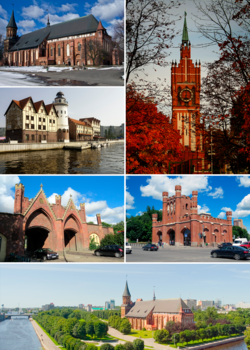
Church of the Holy Family; Königsberg Cathedral; «Fishermen’s village» in pseudo-historic style; Brandenburg Gate; King’s Gate; Pregolya River |
|
|
Flag Coat of arms |
|
| Anthem: none[2] | |
|
Location of Kaliningrad |
|
|
Kaliningrad Location of Kaliningrad within Kaliningrad Oblast Kaliningrad Location of Kaliningrad within Russia Kaliningrad Location of Kaliningrad within Europe |
|
| Coordinates: 54°42′01″N 20°27′11″E / 54.70028°N 20.45306°ECoordinates: 54°42′01″N 20°27′11″E / 54.70028°N 20.45306°E | |
| Country | Russia |
| Federal subject | Kaliningrad Oblast[1] |
| Founded | 1 September 1255[3] |
| Government | |
| • Body | City Council of Deputies[4] |
| • Head[4] | Elena Ivanovna Dyatlova[5] |
| Area
[3] |
|
| • Total | 223.03 km2 (86.11 sq mi) |
| Elevation | 5 m (16 ft) |
| Population
(2010 Census)[6] |
|
| • Total | 431,402 |
| • Estimate
(2018)[7] |
475,056 (+10.1%) |
| • Rank | 40th in 2010 |
| • Density | 1,900/km2 (5,000/sq mi) |
|
Administrative status |
|
| • Subordinated to | city of oblast significance of Kaliningrad[1] |
| • Capital of | Kaliningrad Oblast[8], city of oblast significance of Kaliningrad[1] |
|
Municipal status |
|
| • Urban okrug | Kaliningrad Urban Okrug[9] |
| • Capital of | Kaliningrad Urban Okrug[9] |
| Time zone | UTC+2 (MSK–1 |
| Postal code(s)[11] |
236001 — 236999 |
| Dialing code(s) | +7 4012 |
| OKTMO ID | 27701000001 |
| City Day | 4 July; observed on the first Saturday of July |
| Website | www.klgd.ru |
Kaliningrad ( kə-LIN-in-grad; Russian: Калининград, IPA: [kəlʲɪnʲɪnˈɡrat]), until 1946 known as Königsberg (German pronunciation: [ˈkøːnɪçsbɛʁk]; Russian: Кёнигсберг, tr. Kyonigsberg, IPA: [ˈkʲɵnʲɪɡzbɛrk]; Russian: Короле́вец, tr. Korolevets), is the largest city and administrative centre of Kaliningrad Oblast, a Russian semi-exclave between Lithuania and Poland. The city sits about 663 kilometres (412 mi) west from mainland Russia. The city is situated on the Pregolya River, at the head of the Vistula Lagoon on the Baltic Sea, and is the only ice-free port of Russia and the Baltic states on the Baltic Sea. Its population in 2020 was 489,359,[12] with up to 800,000 residents in the urban agglomeration.[13][14] Kaliningrad is the second-largest city in the Northwestern Federal District, after Saint Petersburg, the third-largest city in the Baltic region, and the seventh-largest city on the Baltic Sea.
The settlement of modern-day Kaliningrad was founded in 1255 on the site of the ancient Old Prussian settlement Twangste by the Teutonic Knights during the Northern Crusades, and was named Königsberg in honor of King Ottokar II of Bohemia. A Baltic port city, it successively became the capital of the State of the Teutonic Order, the Duchy of Prussia (1525–1701) and East Prussia. Königsberg remained the coronation city of the Prussian monarchy, though the capital was moved to Berlin in 1701. From 1454 to 1455 the city under the name of Królewiec belonged to the Kingdom of Poland, and from 1466 to 1657 it was a Polish fief. Königsberg was the easternmost large city in Germany until World War II. The city was heavily damaged by Allied bombing in 1944 and during the Battle of Königsberg in 1945; it was then captured by the Soviet Union on 9 April 1945. The Potsdam Agreement of 1945 placed it under Soviet administration. The city was renamed Kaliningrad in 1946 in honor of Soviet revolutionary Mikhail Kalinin. Since the dissolution of the Soviet Union, it has been governed as the administrative centre of Russia’s Kaliningrad Oblast, the westernmost oblast of Russia.[15]
As a major transport hub, with sea and river ports, the city is home to the headquarters of the Baltic Fleet of the Russian Navy, and is one of the largest industrial centres in Russia.[16] It was deemed the best city in Russia in 2012, 2013, and 2014 in Kommersant’s magazine The Firm’s Secret,[17] the best city in Russia for business in 2013 according to Forbes,[18] and was ranked fifth in the Urban Environment Quality Index published by Minstroy in 2019.[19] Kaliningrad has been a major internal migration attraction in Russia over the past two decades,[20] and was one of the host cities of the 2018 FIFA World Cup.
History[edit]
The history of the city may be divided into four periods: the Old Prussian settlement known as Twangste before 1255; the Polish city of Królewiec from 1454 to 1455 and then fief of Poland from 1456–1657; the German city of Königsberg from 1657 to 1945; and the Russian city of Kaliningrad from 1945 to present.
Twangste[edit]
Königsberg was preceded by a Sambian (Old Prussian tribe) fort called Twangste (also spelt Tuwangste or Tvankste), meaning ‘Oak Forest’.[21] During the conquest of the Sambians by the Teutonic Knights in 1255, Twangste was destroyed and replaced by a new fortress named Königsberg in the honor of Bohemian king Ottokar II. The declining Old Prussian culture finally became extinct around the early 18th century with the Great Plague,[22] and the surviving Old Prussians were integrated through assimilation.
Königsberg[edit]
The settlement on the site of present-day Kaliningrad was founded as a military fortress in 1255 after the Prussian Crusade by the Teutonic Knights against Baltic Prussians. The new settlement was named in honor of the Bohemian (Czech) King Ottokar II. The crusade was followed by a settlement of Germans and the surrounding area became predominantly German, with Polish, Lithuanian and Latvian minorities.
In 1454, the city integrated within borders of Poland for a year thanks to King Kazimierz Jagiellończyk and became a fiefdom under the Polish king from 1466. As a symbol of its dependence, the black Prussian eagle had a crown gracefully around its neck bearing the letter «S» from the Latinized name of the king, «Sigismundus.» After the secularization of the Teutonic Order in 1525, Königsberg became the capital of the Duchy of Prussia. In 1618 the Duchy of Prussia fell under the control of the Electors of Brandenburg and in 1657 it became controlled in personal union with Brandenburg (sometimes referred to as Brandenberg-Prussia). From 1701, Brandenberg-Prussia became a Kingdom and the entire area was referred to as the Kingdom of Prussia. While the Brandenberg portion was a part of the Holy Roman Empire and later the German Confederation, Prussia (later called East Prussia) was not included within those territorial boundaries.
In the context of the Seven Year War, all of East Prussia was conquered and annexed by the Russian Empire (1758–1762).[23] Immanuel Kant is famous for having sworn allegiance to Empress Elizabeth of Russia.[23]
In the ensuing two centuries the city, first as part of the Kingdom of Prussia, then from 1866 as part of the North German Confederation, and then from 1871 as part of the German Empire, continued to flourish and many iconic landmarks of Königsberg were built. The city had around 370,000 inhabitants and was a cultural and administrative center of Prussia and the German Empire. Immanuel Kant and E. T. A. Hoffmann, notable sons of the city, were born during this time.
World War II[edit]
In World War II the city of Königsberg was heavily damaged by a British bombing attack[22] in 1944 and the massive Soviet siege in spring 1945. At the end of World War II in 1945, the city became part of the Soviet Union (as part of the Russian SFSR).
Soviet Union[edit]
At the Potsdam Conference in 1945 the Allies and the Soviet Government agreed on the settlement:
The Conference has agreed in principle to the proposal of the Soviet Government concerning the ultimate transfer to the Soviet Union of the City of Koenigsberg and the area adjacent to it as described above subject to expert examination of the actual frontier.[24]
The U.S. President Harry Truman and the British Prime Minister Clement Attlee declared that they would support the proposal of the Conference at the forthcoming peace settlement.[25]
On 4 July 1946 the Soviet authorities renamed Königsberg to Kaliningrad[26] following the death on 3 June 1946 of the Chairman of the Presidium of the Supreme Soviet (titular head of state) of the USSR, Mikhail Kalinin, one of the original Bolsheviks. The remaining German population of Königsberg was forcibly moved to Germany in 1946–1949, and the city was repopulated with Soviet citizens (as a part of the agreement between the Allies and the Soviet Government). The city’s language of administration was changed from German to Russian.
The city was rebuilt, and as the westernmost territory of the USSR, the Kaliningrad Oblast became a strategically important area during the Cold War. The Soviet Baltic Fleet was headquartered in the city in the 1950s. Because of its strategic importance, Kaliningrad Oblast was closed to foreign visitors.
In 1957 an agreement was signed and later came into force which delimited the border between Poland and the Soviet Union.[27][28]
Russian Federation[edit]
The town of Baltiysk, just outside Kaliningrad, is the only Russian Baltic Sea port said to be «ice-free» all year round, and the region hence plays an important role in maintenance of the Baltic Fleet.
Kaliningrad Oblast was an exclave of the Russian Soviet Federative Socialist Republic and with the collapse of the Soviet Union in 1991 it became separated from the rest of Russia by independent countries. This isolation from the rest of Russia became even more pronounced politically when Poland and Lithuania became members of NATO and subsequently the European Union in 2004. All military and civilian land links between the region and the rest of Russia have to pass through members of NATO and the EU. Special travel arrangements for the territory’s inhabitants have been made through the Facilitated Transit Document (FTD) and Facilitated Rail Transit Document (FRTD).[29]
While in the 1990s many Soviet-era city names commemorating Communist leaders were changed (e.g., Leningrad reverting to Saint Petersburg and Kalinin, also named after Mikhail Kalinin, reverting to Tver), Kaliningrad remains named as it was, though the city is sometimes colloquially referred to as König or Kyonig (Russian: Кёниг).[30] The question of the name of the city has been raised multiple times; in 2009, the head of the city administration, Felix Lapin, said he personally supported the return of the historical name of the city,[31] and in 2011, the governor of Kaliningrad Oblast, Nikolay Tsukanov, suggested a referendum could be held to resolve the issue, but stated that he was against renaming.[32][33]
Since the early 1990s, the Kaliningrad oblast has been a Free Economic Zone (FEZ Yantar). In 2005 the city celebrated its 750th anniversary.[34] In July 2007 Russian First Deputy Prime Minister Sergei Ivanov declared that if US-controlled missile defence systems were deployed in Poland, then nuclear weapons might be deployed in Kaliningrad. On 5 November 2008 Russian president Dmitry Medvedev said that installing missiles in Kaliningrad was almost a certainty.[35] These plans were suspended, however, in January 2009.[36]
During late 2011, a long range Voronezh radar was commissioned to monitor missile launches within about 6,000 kilometres (3,728 miles). It is situated in the settlement of Pionersky (formerly German Neukuhren) in Kaliningrad Oblast.[37]
Kaliningrad was one of the host cities for the 2018 FIFA World Cup held in Russia.[38]
Geography[edit]
Kaliningrad is at the mouth of the navigable Pregolya River, which empties into the Vistula Lagoon, an inlet of the Baltic Sea.
Sea vessels can access Gdańsk Bay/Bay of Danzig and the Baltic Sea by way of the Vistula Lagoon and the Strait of Baltiysk.
Until around 1900, ships drawing more than 2 meters (6 ft 7 in) of water could not pass the bar and use the city’s docks;[citation needed] larger vessels had to anchor at Pillau (now Baltiysk), where cargo was transferred to smaller vessels. In 1901, a ship canal between Königsberg and Pillau, completed at a cost of 13 million German marks,[citation needed] enabled vessels of a 6.5 m (21 ft 4 in) draught to moor alongside the town (see also Ports of the Baltic Sea).
-
The Pregolya River in Kaliningrad
-
The pseudo-historic «Fishermen’s village»
-
Climate[edit]
Kaliningrad has an oceanic climate (Cfb, depending on the isotherm chosen for class C climates) or a humid continental climate (Dfb, depending on the isotherm chosen for class D climates), with cold, cloudy, (though moderate compared to most of Russia) winters and mild summers with frequent showers and thunderstorms. Average temperatures range from −1.5 to +18.1 °C (29.3 to 64.6 °F) and rainfall varies from 36.0 millimeters (1.42 in)/month to 97.0 millimeters (3.82 in)/month. In general, it has maritime influences and therefore damp, variable and mild, with vast temperature differences between July and January.
The seasons are clearly differentiated. Spring starts in March and is initially cold and windy, later becoming pleasantly warm and often very sunny. Summer, which begins in June, is predominantly warm but hot at times (with temperature reaching as high as +30–+35 °C (86–95 °F) at least once per year) with plenty of sunshine interspersed with heavy showers. The average annual hours of sunshine for Kaliningrad is 1,700,[citation needed] similar to other northern cities. Autumn comes in September and is at first warm and usually sunny, turning cold, damp and foggy in November.[citation needed] Winter includes periods of snow. January and February are the coldest months with the temperature sometimes dropping as low as −15 °C (5 °F).
| Climate data for Kaliningrad (1991–2020, extremes 1848–present) | |||||||||||||
|---|---|---|---|---|---|---|---|---|---|---|---|---|---|
| Month | Jan | Feb | Mar | Apr | May | Jun | Jul | Aug | Sep | Oct | Nov | Dec | Year |
| Record high °C (°F) | 12.7 (54.9) |
16.9 (62.4) |
23.0 (73.4) |
28.5 (83.3) |
30.6 (87.1) |
34.0 (93.2) |
36.3 (97.3) |
36.5 (97.7) |
33.8 (92.8) |
26.4 (79.5) |
19.4 (66.9) |
13.3 (55.9) |
36.5 (97.7) |
| Average high °C (°F) | 1.1 (34.0) |
2.1 (35.8) |
6.1 (43.0) |
13.1 (55.6) |
18.2 (64.8) |
21.3 (70.3) |
23.5 (74.3) |
23.3 (73.9) |
18.4 (65.1) |
12.2 (54.0) |
6.2 (43.2) |
2.6 (36.7) |
12.3 (54.1) |
| Daily mean °C (°F) | −1.2 (29.8) |
−0.6 (30.9) |
2.4 (36.3) |
7.9 (46.2) |
12.7 (54.9) |
16.1 (61.0) |
18.5 (65.3) |
18.1 (64.6) |
13.5 (56.3) |
8.4 (47.1) |
3.9 (39.0) |
0.4 (32.7) |
8.3 (46.9) |
| Average low °C (°F) | −3.5 (25.7) |
−3.0 (26.6) |
−0.8 (30.6) |
3.4 (38.1) |
7.5 (45.5) |
11.3 (52.3) |
13.9 (57.0) |
13.3 (55.9) |
9.4 (48.9) |
5.2 (41.4) |
1.7 (35.1) |
−1.8 (28.8) |
4.7 (40.5) |
| Record low °C (°F) | −32.5 (−26.5) |
−33.3 (−27.9) |
−21.7 (−7.1) |
−5.8 (21.6) |
−3.1 (26.4) |
0.7 (33.3) |
4.5 (40.1) |
1.6 (34.9) |
−2.0 (28.4) |
−11.1 (12.0) |
−18.7 (−1.7) |
−25.6 (−14.1) |
−33.3 (−27.9) |
| Average precipitation mm (inches) | 68 (2.7) |
54 (2.1) |
49 (1.9) |
38 (1.5) |
52 (2.0) |
69 (2.7) |
91 (3.6) |
91 (3.6) |
73 (2.9) |
86 (3.4) |
76 (3.0) |
69 (2.7) |
816 (32.1) |
| Average extreme snow depth cm (inches) | 7 (2.8) |
7 (2.8) |
3 (1.2) |
0 (0) |
0 (0) |
0 (0) |
0 (0) |
0 (0) |
0 (0) |
0 (0) |
2 (0.8) |
5 (2.0) |
7 (2.8) |
| Average rainy days | 14 | 13 | 14 | 14 | 14 | 16 | 15 | 16 | 17 | 18 | 18 | 16 | 185 |
| Average snowy days | 15 | 15 | 10 | 3 | 0.1 | 0 | 0 | 0 | 0 | 1 | 7 | 13 | 64 |
| Average relative humidity (%) | 85 | 83 | 78 | 72 | 71 | 74 | 75 | 77 | 81 | 83 | 86 | 87 | 79 |
| Mean monthly sunshine hours | 35 | 61 | 120 | 171 | 253 | 264 | 257 | 228 | 158 | 96 | 38 | 26 | 1,707 |
| Source 1: Pogoda.ru.net[39] | |||||||||||||
| Source 2: NOAA (sun 1961–1990)[40] |
Demographics[edit]
The original German population fled or was expelled after the end of World War II, when the territory was annexed by the Soviet Union, and in the following few years. In October 1945, only about 5,000 Soviet civilians lived in the territory.[41] Between October 1947 and October 1948 approximately 100,000 Germans were forcibly moved to Germany[clarification needed],[42] and by 1948 about 400,000 Soviet civilians had arrived in the Oblast.[41]
Today the overwhelming majority of Kaliningrad’s residents are Russians settled after 1945, and their descendants. A minority of the population are from other Slavic ethnic groups, including Belarusians and Ukrainians. Kaliningrad today is also home to small communities of Tatars, Germans, Armenians, Poles, and Lithuanians.
Ethnic composition, Russian 2010 census:
| Ethnicity | total population | % of the population |
|---|---|---|
| Russians | 351,186 | 87.4 % |
| Ukrainians | 16,053 | 4.0 % |
| Belarusians | 15,077 | 3.7 % |
| Armenians | 3,062 | 0.8 % |
| Tatars | 2,075 | 0.5 % |
| Lithuanians | 1,789 | 0.4 % |
| Germans | 1,676 | 0.4 % |
| Polish | 1,114 | 0.3 % |
| Other ethnicities | 10,041 | 2.5 % |
| All | 401,649 | 100.0 % |
Cityscape[edit]
Architecture[edit]
The pre-war city center (Altstadt and Kneiphof) consists of parks, broad avenues, a square on the site of the former Königsberg Castle, and two buildings: the House of Soviets («Dom Sovyetov»), roughly on the site of the former castle, and the restored Königsberg Cathedral on the Kneiphof island (now «Kant island»). Immanuel Kant’s grave is situated next to the cathedral. Many German-era buildings in the historic city centre have been preserved and even rebuilt, including the reconstruction of the Königsberg Synagogue. The new city centre is concentrated around Victory Square. The Cathedral of Christ the Savior, consecrated in 2005, is located on that square.
The oldest building in Kaliningrad is the Juditten Church (built before 1288). Also worth seeing are the former Stock Exchange, the surviving churches, and the remaining city gates. In counter-clockwise order these gates are: the Sackheim Gate, King’s Gate, Rossgarten Gate, Attack Gate (German: Ausfallstor, or Sally Port), Railway Gate (Eisenbahntor), Brandenburg Gate, and Friedland Gate (Friedländer Tor (Kaliningrad) [de]). Apart from the Dohna Tower, which houses the Amber Museum, the Wrangel Tower also remains as a reminder of the former Königsberg city walls. Only the gate of the former Fort Friedrichsburg remains.
Monuments[edit]
Notable monuments include the statue of Immanuel Kant in front of the Immanuel Kant State University of Russia. The statue was made by notable sculptor Christian Daniel Rauch and unveiled in 1864. The statue was destroyed in 1945, but was remoulded in 1992 on the initiative of Marion Dönhoff, a native East Prussian who became prominent in the West. Also worth seeing is the Cosmonaut monument, which honours the Kaliningrad cosmonauts Alexey Leonov, Yuri Romanenko and Aleksandr Viktorenko. Other statues and monuments include the statue for Duke Albert, the statue for Friedrich Schiller, the statue for Tsar Peter the Great, Vladimir Vysotsky, the «Mother Russia» monument, and the Monument for the 1200 Guardsmen, remembering the Battle of Königsberg.
Parks[edit]
Kaliningrad is a «green» city with many parks[43] and areas with many trees and lawns. Parks range from tiny city squares to massive parks.[citation needed]
The Youth Recreation Park is one of the most popular parks in the city.[citation needed] The park was established in the 1920s–1930s in the English style. It reopened its doors post-war and was popular among citizens in the 1980s–1990s with its boat house and tennis courts, as well as merry-go-rounds.[44] The park had a massive reconstruction in 2004 adding a cafe, carting, and various modern entertainments. It is located in the quiet area of the city, in Leningradsky area, and is connected to the Lower Pond. Youth Recreation Park provides entertainment for all age groups. There is also Interpersonal Communications Development Central located in the park.[citation needed]
The Kaliningrad Zoo was opened as the Königsberg Zoo in 1896. The collection, which extends over 16.5 ha (40 acres), comprises 315 species with a total of 2,264 individual animals (as of 2005). The Kaliningrad Zoo is also an arboretum.[citation needed]
Ponds[edit]
Centrally located in the city is Lower Pond, an artificial lake. Lower Pond is surrounded by a promenade and is an area for recreation especially in summer. North of the Lower Pond is the larger Upper Pond in northern Kaliningrad.
Bridges[edit]
Leonhard Euler’s 1736 paper on the puzzle of the Seven Bridges of Königsberg was a seminal work in the fields of graph theory and topology. Only two of the structures from his era survive.
Kaliningrad Stadium[edit]
In 2018, the Kaliningrad Stadium, located on Oktyabrsky Island, near the embankment of the Staraya Pregolya River, was opened. The stadium has a seating capacity of 35,000.
Culture[edit]
Museums in Kaliningrad[edit]
Museum ship «Vityaz» from the collection of the Museum of the World Ocean
There are many museums in Kaliningrad.
- Museum of the World Ocean
- Kaliningrad Regional History and Art Museum
- Kaliningrad Regional Amber Museum
- Kaliningrad State Art Gallery
- Friedland Gate Museum
The Kaliningrad Regional Museum of History and Arts is the oldest museum in Kaliningrad, founded in 1946. In addition to the main building, the museum has four branches in Kaliningrad (including «Blindage» and «Fort No. 5») and two elsewhere in the region.
In 1979, the Kaliningrad Regional Amber Museum was opened in the building of the Don, a former defensive tower. Initially, it was a branch of the Historical and Art Museum, but since 2004 it has operated independently.
The Kaliningrad State Art Gallery, which opened on November 24, 1988, is one of the youngest and fastest-growing museums in Russia, known both domestically and abroad. Up to 40 exhibitions of domestic and foreign art are held annually in eight exhibition halls with a total exhibition area of more than 3,000 square metres (¾ acre).
At the beginning of the 21st century, the Museum of the World Ocean, which was unique in Russia at the time, was gradually created, and now offers exhibitions and six museum vessels:
- Research ship-museum «Vityaz»
- Submarine B-413
- Space communication vessel «Cosmonaut Viktor Patsaev»
- Fishing boat-museum «SRT-129»
- Floating lighthouse «Irbensky»
- Icebreaker «Krassin» — moored in St. Petersburg.
The branches of the museum are the King’s Gate and the preserved gate of Fort Friedrichsburg.
A museum of ancient archaeological finds has been created. It is located at the Friedland Gate, which itself is a monument of antiquity.
In 2009, the Museum of E. T. A. Hoffmann, a famous writer born in this city, was created. The museum is located in the building of the former Leningrad Cinema; now this building houses a regional music school named after Hoffman.
On 5 June 2016 the Einstein Museum of Entertaining Sciences was opened on the first floor of the Mega-Market shopping centre, which offers interactive exhibits that illustrate various fields of science and demonstrate the manifestation of their laws.[45]
Kaliningrad’s museums were visited by roughly 920,000 people in 2013.[46] In terms of museum attendance, the region of Kaliningrad ranks seventh among the regions of Russia.[47]
Theaters and concert halls[edit]
There are several theaters in the city:
- Kaliningrad Regional Drama Theater
- Kaliningrad Regional Musical Theater
- Kaliningrad Regional Puppet Theater
- The organ hall of the Kaliningrad Regional Philharmonic is located in the historic building of the former Catholic Church of the Holy Family.
- A large concert hall with two organs located in the Königsberg Cathedral.
- The Variety Theater, located in the House of Arts.
The musical life of the city is rich and diverse. Annual music festivals of various styles and trends are held throughout the year. Under the patronage of the Kaliningrad Regional Philharmonic Society, international festivals and competitions of classical, jazz, organ music (dedicated to Johann Sebastian Bach and Mikael Tariverdiev) are held. Since 2006, the Don Cento Jazz International Jazz Festival has been held in the summer. The city also hosts two major rock festivals: the Night Wolves bike show (July) and Kaliningrad In Rock (August). The Baltic Seasons art festival is held annually.
In 2013, Kaliningrad’s theaters were visited by almost 345,000 people.[46]
Libraries[edit]
Kaliningrad Regional Scientific Library
- Kaliningrad Regional Scientific Library
- Central City Library. A.P. Chekhov
- Kaliningrad Regional Youth Library. V. Mayakovsky
- Kaliningrad Regional Children’s Library. A.P. Gaidar
- Kaliningrad Regional Specialized Library for the Blind
Also, there are 20 municipal city libraries in the city. As of 2015, more than 100 thousand residents of Kaliningrad regularly visit the city’s libraries.[48]
Music[edit]
The modern city of Kaliningrad is home to the Kaliningrad Regional Philharmonic and Symphony Orchestra, the Lik male chamber choir and the Garmonika Russian music ensemble,[49] as well as the Kaliningrad Chamber Orchestra.[50]
Cuisine[edit]
Kaliningrad has its own vodka and beer brands, Stari Königsberg and Ostmark respectively. Since the early 1990s many new restaurants have opened in the city. These restaurants offer culinary specialities of former East Prussia, like Königsberger Klopse, and also fish and salad dishes, pizza and sushi. Königsberger Fleck, a bovine tripe soup and yet another culinary specialty from former Königsberg, no longer belongs to the culinary culture of Kaliningrad.
The people of Kaliningrad generally imported their respective culinary traditions to the region when they settled in the area after 1945. Borscht and okroshka may be served as in the rest of Russia. Many Italian and Asian restaurants (or fusions of both traditions) are in operation all over the city. Pizza and sushi are among the most popular dishes today. Fast food is widely available from various chains, including those of foreign origin. Shawarma is also gaining considerable prominence.
Sports[edit]
The Russian football club FC Baltika Kaliningrad is based in Kaliningrad and plays in the Russian Football National League. The home stadium is the Kaliningrad Stadium, built for the 2018 FIFA World Cup.
During 2006 to 2013, the Dynamo-Yantar men’s volleyball club played in the Russian men’s volleyball Championship. They played their home games at the Yantarny Sports Palace, which can accommodate over 7,000 spectators. From 2010, Yantarny had regularly hosted matches of the Russian men’s national volleyball team in the FIVB Volleyball World League and the FIVB Volleyball World Grand Prix.
In the past, the city was also represented by the football clubs of West, Baltika-2 and FC Baltika-Tarko Kaliningrad, as well as the rugby club West Zvezda (winner of the 1994 Russian Cup, prize winner of the 1994 and 1995 Russian championships). The football club Volna Kaliningrad took part in the third tier of the 2000 Lithuanian championship, LF II Lyga, and won in the western zone (22 games: 20 wins, 2 draws, goal difference 101–9).[51][52]
Since November 2013, the city has had an American football team called Amber Hawks. In 2015, the Amber Hawks reached the semifinals of the Polish League 8×8.[53] In 2016, Amber Hawks took the silver medal of the prestigious Eastern League of American Football (VLAF).[54]
In June 2014 the Kaliningrad Regional Hockey League (KRHL) was created. League competition is the official championship of the Kaliningrad region of hockey.
In 2018 Kaliningrad hosted some games of the World Cup.
On 9 April 2018 the creation of a women’s volleyball team, the «Lokomotiv Kaliningrad Region» was announced. At the end of the 2018–2019 season the club took the second place in the Russian Championship, losing one point to the leader team, the WVC Dynamo Moscow.
Administrative and municipal status[edit]
Kaliningrad is the administrative centre of the oblast.[8] Within the framework of administrative divisions, it is incorporated as the city of oblast significance of Kaliningrad — an administrative unit with status equal to that of the districts.[1] As a municipal division, the city of oblast significance of Kaliningrad is incorporated as Kaliningrad Urban Okrug.[9]
City districts[edit]
As of 2014, the city was divided into three administrative districts:
| City district | Russian name | Inhabitants 2010 Census[6] |
Notes |
|---|---|---|---|
| Moskovsky | Московский | 152,165 | Named after the Russian capital, Moscow |
| Leningradsky | Ленинградский | 159,771 | Named after Leningrad, now Saint Petersburg |
| Tsentralny | Центральный | 119,966 | Lit. central, as it lies to the northwest of the historical city center |
Two administrative districts were abolished in June 2009:
| City district | Russian name | Inhabitants 2002 Census[55] |
Notes |
|---|---|---|---|
| Baltiysky | Балтийский | 68,664 | Named after the Baltic Sea |
| Oktyabrsky | Октябрьский | 43,252 | Named after the October Revolution |
[edit]
Local government[edit]
Flags of Russia (center), Kaliningrad Oblast (left), and Kaliningrad (right), over the City Hall
Local self-government in the city is carried out on the basis of the Charter, which was adopted by the City Council of Deputies of Kaliningrad on July 12, 2007.
Bodies and officials of local self-government in the city (formally – in the city district) Kaliningrad are:
- Council of Deputies (representative body of a municipal formation)
- Head (chief executive)
- Administration (executive and administrative body of the municipality)
- Chamber of Control and Accounts
The City Council of Deputies consists of 28 deputies elected by city residents in municipal elections according to a mixed mandate distribution system for a period of 5 years. The chairman of the Council is elected by deputies from among its members. The current 6th convocation was elected on September 18, 2016. The Chairman of the Council is Andrey Kropotkin from United Russia.
The head of the city heads the administration of the city district. Elected by the City Council of Deputies from among the candidates presented by the Competition Commission based on the results of the competition, for the term of office of the City Council of Deputies. Since April 2018, the head of the city is Alexey Silanov.[56]
The Kaliningrad administration and the Council of Deputies are located in the building of the mayor’s office at the Victory Square.[57]
From 1996 to 2007, the Charter of the City of Kaliningrad dated September 25, 1996 was in force in Kaliningrad, according to which the local self-government bodies were:
- The head of the city (mayor) – the highest official of the city;
- City hall (executive and administrative body);
- City Council of Deputies (representative body).
In 2007, due to the reform of local self-government, the functions of local self-government bodies were changed, and a new position was introduced – the head of the administration.
In 2008–2012, the local government body, carrying out executive and administrative functions, was the city district administration, headed by the head of the administration (city manager). The head of the administration was appointed to the post by the decision of the District Council of Deputies following a competition. On May 14, 2008, Felix Lapin was appointed to this position for a period of 2 years. On June 15, 2011, deputies of the Kaliningrad District Council approved Svetlana Mukhomor as head of the city administration (she is the first deputy head of the city administration).[58]
In November 2016, the Kaliningrad Regional Duma adopted a law abolishing direct elections for the mayor of Kaliningrad.[59] The elections were replaced by the selection procedure of candidates by a competition commission from which the city Council of Deputies selects one by secret ballot. In 2018, out of ten people who submitted documents for participation in the competition, only three were admitted to the competition.[60]
Regional government[edit]
All legislative, executive and judicial authorities of Kaliningrad Oblast are located in Kaliningrad. The Government of Kaliningrad Oblast and the Governor’s Administration are located in the same building on Dmitry Donskoy Street, the Kaliningrad Regional Duma on Kirov Street, the Kaliningrad Regional Court on Sergeeva Street, and the Arbitration Court of Kaliningrad Oblast on Rokossovsky Street.
Federal government[edit]
In Kaliningrad, there are representative offices of federal authorities in the region:
- Prosecutor’s Office of Kaliningrad Oblast
- Investigation Department of the Investigative Committee of Russia
- Ministry of Internal Affairs of Kaliningrad Oblast
- Ministry of Emergency Situations
- Military Commissariat
- Kaliningrad Regional Customs of the North-West Customs Department of the Federal Customs Service of Russia
- Branch of the Pension Fund of the Russian Federation
- Management of the federal postal service — branch of FSUE «Russian Post»
- Branch of the Social Insurance Fund of the Russian Federation
Economy[edit]
In 1996, Kaliningrad was designated a Special Economic Zone, referred to as FEZ Yantar. Manufacturers based there get tax and customs duty breaks on the goods they send to other parts of Russia. Although corruption was an early deterrent, that policy means the region is now a manufacturing hub. One in three televisions in Russia are made in Kaliningrad (including Ericsson brand by Telebalt Ltd. and Polar by an eponymous firm located in the city of Chernyakhovsk) and it is home to Cadillac and BMW related car plants (produced by Avtotor). Kaliningrad’s major industries are manufacturing, shipping, fishing and amber products. In 2006, Moscow declared it would turn the region into «the Russian Hong Kong».[61]
Education[edit]
Today, there are 21 higher educational institutions in Kaliningrad (together with branches of universities in other cities), of which state-owned are:
- The Kaliningrad branch of the St. Petersburg University of the Ministry of Internal Affairs of Russia, previously the Kaliningrad Law Institute of the Ministry of Internal Affairs of Russia (KYUI), even earlier – the Kaliningrad Higher School of the Ministry of Internal Affairs of the Russian Federation, which was formed on the basis of the Kaliningrad Special Secondary School of Police of the Ministry of Internal Affairs of the USSR.
- Immanuel Kant Baltic Federal University. Until 2011 – Russian State University. I. Kant. The name of Kant was given on the eve of the city’s 750th anniversary in 2005. Previously – Kaliningrad State University (KSU). Occupies the building of the former German University of Königsberg.
- Baltic State Academy of Fishing Fleet (BFFSA). Until 1991 – Kaliningrad Higher Marine Engineering School (KVIMU).
- Kaliningrad State Technical University (KSTU). Previously – Kaliningrad Technical Institute of the Fishing Industry and Economy (KTIRPiH).
- Kaliningrad Border Institute of the Federal Security Service of the Russian Federation. Previously – Kaliningrad Higher Engineering School of Engineering Troops named after A.A.Zhdanov (KVIUIV).
- The FF Ushakov Baltic Naval Institute, now a branch of the military educational and scientific center of the Russian Navy «Naval Academy named after Admiral of the Fleet of the Soviet Union N. G. Kuznetsov.» Previously – Kaliningrad Higher Naval School (KVVMU).
Also in Kaliningrad there is a branch of the North-West Academy of Public Administration and National Economy, from secondary educational institutions – three gymnasiums, six lyceums and forty-seven secondary schools. There are educational institutions of secondary vocational education: Kaliningrad Regional College of Music. S. V. Rachmaninova, Kaliningrad State College of Urban Development, Kaliningrad Marine Fisheries College and others; to the IKBFU I. Kant included the Kaliningrad Technical College, the Communal Construction College. In addition, there is one cadet corps – KSH «Andrew the First-Called Cadet Naval Corps» (APKMK).
In August 2019, construction began on a branch of the Nakhimov Naval School. The opening is scheduled for September 1, 2020, the number of students will be over 560 people.[62]
Transport[edit]
Roads[edit]
Kaliningrad is a major transport hub. The most important roads of the city are:
In December 2007, construction began on the Primorskoye Koltso highway, which connects Kaliningrad with Svetlogorsk, Pionersky, Zelenogradsk and Khrabrovo Airport. It is planned to continue construction at Baltiysk, Svetly.
Around the city (from the village of A. Kosmodemyansky to the traffic intersection with Moskovsky Prospekt) passes the route of the northern and southern bypasses of Kaliningrad. Until now, on the western side of the city of Kaliningrad, the «ring» of the road has not been closed due to the absence of a 7-kilometer (5 mile) crossing through the Vistula Lagoon.
Water[edit]
Kaliningrad is home to the westernmost and the only non-freezing port of Russia and the Baltic states on the Baltic Sea. Freight and passenger ferry crossings connect the Port of Kaliningrad, and its outport, the Port of Baltiysk with Saint Petersburg, and the ports of Germany and Sweden.
As of April 2019, only a freight ferry operates on the Baltiysk–Ust-Luga route, and the passenger ferry has been cancelled.[63][64]
Air[edit]
The Kaliningrad Devau Airport, which opened in 1919, was one of the first civilian airports in the world, and the first in Germany. In 1922, the first planes of the Moscow-Riga-Königsberg, the first international airline of the Soviet Union, arrived in here for the first time. After World War II, the airport was used for local flights until the 1970s.
In the fifties, a new airport, the Khrabrovo Airport, was built on the base of a military airfield 24 kilometres (15 miles) from the city. Now it has international status. The Kaliningrad airline KD Aviation was based on Khrabrovo, which ceased operations in September 2009. The reconstruction of the airport has been completed in 2018.[citation needed] On 1 October 2022 the airport began allowing more flights from international destinations, including through operation by foreign airlines.[65]
Railway[edit]
Railway network in Kaliningrad Oblast
Kaliningrad is the most important hub of the railway network of the Kaliningrad Oblast. It is the site of the Kaliningrad Railway.
The main passenger railway station of the city is the Kaliningrad South railway station, which includes the main railway station of the city and the Oblast–Yuzhny station, it serves both commuter and long-distance trains following from Kaliningrad:
- No. 30 Moscow «Yantar»
- No. 80 St. Petersburg
- No. 148 Moscow (summer)
- No. 360 Adler
- No. 426 Chelyabinsk (summer)
The Berlin-Kaliningrad direct train (via Poland) operated from 1993 to 2000, then was replaced by a non-stop carriage, which was part of the Kaliningrad-Gdynia train from December 2003 to December 2009 and in 2010–2013 (in the summer), with a re-trailer in the Polish city of Tczew. A platform with a European Standard Gauge track was specially equipped to receive these trains, allowing trains to run on this message without the interruption of a bogie exchange at some point on the journey.
Kaliningrad North railway station serves trains connecting Kaliningrad with the seaside resorts of the city, Svetlogorsk and Pionersky, as well as the city of Sovetsk. It is a major transport hub in the public transport system of Kaliningrad.
Other railway stations located in the city:
- Kutuzovo-Novoye (Alexander Nevsky Street District)
- Chkalovsk-Western (Mck. Chkalovsk)
- West New (Wagon Street District)
- Forest-Novoya (Mcn. named after Alexander Kosmodemyansky)
- Dzerzhinskaya-Novaya (Dzerzhinsky Street district, there is a European (standard gauge) track)
- Aivazovsky stop (in the area of Aivazovsky and Yamskaya streets)
- Kiev stop (Kievskaya Street district, near the Baltic market)
- Selma stop (General Chelnokov Street and Selma Market)
- Stop point 4 kilometer (Muromskaya Street District, Southern)
- Brusnichny Stop (Brusny street district)
Inter-city and international bus service[edit]
Regular bus routes connect Kaliningrad with Belarus, Ukraine, Lithuania, Latvia, Estonia, Poland, the Czech Republic and Germany.
There are two bus stations in the city. The «old» bus station is located on Kalinin Square, next to the Kaliningrad-Passazhirskiy railway station and is used primarily for intra-regional transportation.
Due to the conflict with the station directorate, the Königavto road carrier stopped using this bus station and set up its own international bus station at the end of Moskovsky Prospekt. More than 90% of regular international bus services depart from it.
Urban public transport[edit]
Public transport in Kaliningrad is represented by a bus, a trolleybus, a tram, a taxi, and the city’s railway lines. On 21 March 2010 a new public transport scheme came into effect.[66]
The tram network in Kaliningrad has been in existence since 1895 and is the oldest tram system in Russia. It has a track width of 1000 mm (3’3″). Until 2000, at least ten city tram routes operated in Kaliningrad, however, over the past twenty years, the route network has been significantly reduced.[67] By the beginning of 2013, only two routes were operating in the city. In 2015, after changing the traffic pattern at the Kaliningrad South railway station, the last tram route No. 5 remained. In accordance with the newly adopted General Plan of Kaliningrad until 2035, the construction of a tram line with a separate traffic section in the Moskovsky District is envisaged.
The first trolleybuses appeared in Königsberg in 1943, but after the war they decided not to restore the trolleybus system. The modern trolleybus system of the city has been operating since 5 November 1975.[68] During this time, the route network in Kaliningrad has repeatedly changed. After the repair of the overpass on Pobedy Avenue, carried out in the summer of 2018, route No. 6 was discontinued. As a result, three operating trolleybus lines remained in the city, although the new route scheme for public transport, adopted on 1 August 2016, provided for six routes.[69] The general plan of the city until 2035 also provides for the development of the trolleybus network in Kaliningrad.
Railbus[edit]
On 26 March 2014 the first line of the city rail bus was launched in Kaliningrad, serving the route from the Kievskaya platform in the Moskovsky district to the Kaliningrad North railway station. At the same time, a bus line was organised connecting Oleg Koshevoy Street with the Kievskaya platform. The opening of several more lines of the city railway has been announced, which should connect the center of Kaliningrad with the peripheral districts of the city.[70][71]
In December 2016, the mayor of Kaliningrad, Alexander Yaroshuk, announced that from 1 January 2017 the city rail bus would be canceled due to its unprofitability.[72] After that, Governor Anton Alikhanov made an operational decision to subsidize the rail bus from the regional budget.[73]
In early January 2017, the press service of the Kaliningrad Railway announced that it was planned to extend the rail bus line to Chkalovsk.[74]
On 9 January 2017 city trains were launched on the Kaliningrad-Guryevsk route, and on the Kaliningrad-Lesnoye Novoe route from 3 September 2018.
As of the end of 2018, rail buses serve four intra-city lines connecting peripheral sleeping areas and the satellite city of Guryevsk with the center of Kaliningrad. Kaliningrad North railway station is a major transport and interchange hub, where many public transport routes converge. Passengers are transported by rail buses of the RA1 and RA2 models, manufactured by Metrovagonmash. City trains run on weekdays during the morning and evening rush hours.
Bridges[edit]
The branches of the Pregolya River divide the city into four parts. Majority of the city (Tsentralny Administrative District and Leningradsky Administrive District) is located north of the river, Moskovsky Administrative District is south of the river. Kant Island (Kneiphof) and Oktyabrsky Administrative District (Lomse) are located between the branches of the river.
There are eight active bridges across the Pregolya and one dismantled in Kaliningrad.
- The Two-tiered bridge is a drawbridge that connects General Butkov (northern bank) and Zheleznodorozhnaya (southern bank) streets. Divorced by raising the middle span. The upper tier of the bridge is occupied by a railway, the lower — by the carriageway and pedestrian sidewalks. The double-deck bridge is the only existing railway bridge across the Pregolya in Kaliningrad.
- Trestle bridge — thrown over both branches of the Pregolya and passes over Kneiphof, is part of the Leninsky Prospekt, built in 1972,[75] to replace two of the seven Königsberg bridges — Lavochny and Zeleny. There is a pedestrian descent from the bridge to the island, an automobile exit to Moskovsky Prospekt . There is no road exit to the island. The bridge is crossed by routes of all types of public transport.
- The Wooden Bridge is a drawbridge, one of the seven bridges in Königsberg. Connects Moskovsky Prospekt with Oktyabrsky Island (Oktyabrskaya st.). There are two tram routes across the bridge
- The Honey Bridge is a drawbridge, one of the seven bridges of Königsberg. Connects Oktyabrsky Island and Kneiphof. Since the Kneiphof is a pedestrian zone, the de facto bridge is also exclusively pedestrian. From time to time, the bridge is used by official vehicles (delivery of materials for the restoration of the Königsberg Cathedral, as well as for the passage of wedding corteges).
- Jubilee Bridge — drawbridge, pedestrian, connects Oktyabrsky Island (Rybnaya village area) with St. Epronovskaya. Built in 2005 on the pillars of the old Imperial Bridge, destroyed during World War II.
- The High Bridge is one of the seven bridges in Königsberg. Connects st. Oktyabrskaya (Oktyabrsky Island) from st. Dzerzhinsky. A tram line runs across the bridge.
- Berlin (Palmburg) Bridge is part of the Kaliningrad ring road, it is thrown across both channels of the Pregolya. Farthest from the city center. After the war, it was only partially restored (one strip). A three-lane bridge was built in its place, reconstructed in 2014.
- The old railway bridge is a drawbridge, located in the area of the Museum of the World Ocean. Divorced by raising the middle span. The middle span is dismantled, the bridge is not used in any way. An abandoned railway line crosses the bridge.
- The Second Overpass Bridge was commissioned in December 2011. The bridge crosses both channels of the Pregolya and passes over Oktyabrsky Island, connecting April 9 Street in the right-bank part of the city with Dzerzhinsky Street in the left-bank part. The total length is 1883 metres (2060 yards). The bridge has three lanes in each direction. The design speed of vehicles is not less than 80 km/h (50 mph).
Seven bridges existed in Königsberg in the 16th-20th centuries. The relative position of the bridges led to the mathematical problem of Seven Bridges of Königsberg, and prompted the mathematician Leonard Euler to speculate, which led to the emergence of graph theory.
Media[edit]
Television[edit]
The Kaliningrad television studio has existed since 1958 with its own frequency channel and daily 6–7-hour broadcasting, then it was called the Yantar TV and Radio Company. It has lost its channel and most of its airtime; it is a branch of the All-Russia State Television and Radio Broadcasting Company.
Kaliningrad television networks:
|
|
|
Radio[edit]
Kaliningrad radio stations:
|
|
Notable people[edit]
- Immanuel Kant (1724–1804), philosopher
- E. T. A. Hoffmann (1776–1822) author, playwright, composer
- Sergey Snegov (1910–1994), science fiction writer
- Viktor Patsayev (1933–1971)
- Alexei Leonov (1934–2019), first person to walk in space
- Yury Romanenko (born 1944)
- Alexander Viktorenko (born 1947)
- Oleg Gazmanov (born 1951), singer
- Sergei Beloglazov (born 1956), Olympic wrestler
- Lyudmila Putina (born 1958), ex-wife of Vladimir Putin, First Lady of Russia
- Alexander Volkov (born 1967), tennis player
- Andrei Voronkov (born 1967), volleyball player and coach
- Dmitry Lapikov (born 1982), Olympic weightlifter
- Tvangeste, symphonic black metal band
- Maksim Zuyev, journalist and activist
- Anastasia Nazarenko (born 1993), rhythmic gymnast
- Costa Ronin (born 1979), actor
- Irina Zahharenkova (born 1976), concert pianist
International relations[edit]
Diplomatic missions[edit]
In 2004 Germany opened a consulate general in Kaliningrad.[76] This consulate allows Kaliningrad residents to get Schengen visas without having to travel to Moscow. An agreement between Gerhard Schröder, Chancellor of Germany, and President of Russia Vladimir Putin established the consulate in light of Lithuania and Poland, which surround Kaliningrad, joining the EU. Russian concerns with Germany wanting the former Königsberg back had stifled earlier plans for a German consulate.[77][78][79]
Small border traffic law[edit]
Poland and the Russian Federation have an agreement whereby residents of Kaliningrad and the Polish cities of Olsztyn, Elbląg and Gdańsk may obtain special cards permitting repeated travel between the two countries, crossing the Polish–Russian border. As of July 2013, Poland had issued 100,000 of the cards. That year, the influx of Russians visiting Poland to shop at the Biedronka and Lidl supermarkets was novel enough to be featured in songs by musical group Parovoz.[80]
Twin towns – sister cities[edit]
Kaliningrad is twinned with:[81]
Baranavichy, Belarus
Bremerhaven, Germany
Brest, Belarus
Cagliari, Italy
Catania, Italy
Forlì, Italy
Gomel, Belarus
Groningen, Netherlands
Kalmar, Sweden
Kaunas, Lithuania
Kętrzyn County, Poland
Kiel, Germany
Klaipėda, Lithuania
Šiauliai, Lithuania
Zeitz, Germany
Former twin towns[edit]
Białystok, Poland
Elbląg, Poland
Gdańsk, Poland
Gdynia, Poland
Łódź, Poland
Olsztyn, Poland
Norfolk, United States
Panevėžys, Lithuania
Racibórz, Poland
Toruń, Poland
Zwolle, The Netherlands
In February and March 2022, Norfolk, Virginia, suspended while Lithuanian, Polish and Dutch cities of Panevėžys, Białystok, Elbląg, Łódź, Gdańsk, Gdynia, Olsztyn, Racibórz, Toruń and Zwolle terminated their cooperation with Kaliningrad as a response to the Russian invasion of Ukraine.[82][83][84][85][86][87][88][89][90][91]
Partner cities[edit]
Kaliningrad is also partnered with:
Yerevan, Armenia (2009)[92]
See also[edit]
- Battle of Königsberg
- Heart of the City (Kaliningrad)
- Kaliningrad (Königsberg) dispute
- Radio Königsberg
- Seven Bridges of Königsberg
- Suwałki Gap
References[edit]
Notes[edit]
- ^ a b c d e Resolution #640
- ^ Article 6 of the Charter of Kaliningrad states that the city may have an anthem, providing one is officially adopted. As of 2015, an anthem is not listed among the symbols of the city shown on the official website of Kaliningrad.
- ^ a b Official website of Kaliningrad. Passport of Kaliningrad Urban Okrug. (in Russian)
- ^ a b Charter of Kaliningrad, Article 25
- ^ Official website of Kaliningrad. Head of the City, Alexander Georgiyevich Yaroshuk. (in Russian)
- ^ a b Russian Federal State Statistics Service (2011). Всероссийская перепись населения 2010 года. Том 1 [2010 All-Russian Population Census, vol. 1]. Всероссийская перепись населения 2010 года [2010 All-Russia Population Census] (in Russian). Federal State Statistics Service.
- ^ «26. Численность постоянного населения Российской Федерации по муниципальным образованиям на 1 января 2018 года». Federal State Statistics Service. Retrieved January 23, 2019.
- ^ a b Law #463
- ^ a b c Law #397
- ^ «Об исчислении времени». Официальный интернет-портал правовой информации (in Russian). June 3, 2011. Retrieved January 19, 2019.
- ^ Почта России. Информационно-вычислительный центр ОАСУ РПО. (Russian Post). Поиск объектов почтовой связи (Postal Objects Search) (in Russian)
- ^ «RUSSIA: Severo-Zapadnyj Federal’nyj Okrug: Northwestern Federal District». City Population.de. August 8, 2020. Retrieved August 28, 2020.
- ^ «Система расселения России: тенденции к переменам». Демоскоп Weekly. August 1–19, 2012. Retrieved August 4, 2020.
- ^ «Биполярная модель межрегионального сотрудничества»Трехградье (Польша) — Калининград (Россия)»» [Bipolar model of interregional cooperation «Tricity (Poland) — Kaliningrad (Russia)»] (PDF).
- ^ В.И. Кулаков, Д.А. Пуляева. «Кaliningrad». Большая российская энциклопедия. Retrieved August 4, 2020.
- ^ Alexander Akishin (December 16, 2013). «250 крупнейших промышленных центров России». Urbanica. Retrieved July 30, 2020.
- ^ «100 лучших городов России». Kommersant Secret Firmy. April 2, 2013. Retrieved July 31, 2020.
- ^ «30 лучших городов для бизнеса 2013». Forbes. Retrieved July 31, 2020.
- ^ Кирилл Алексеев (November 5, 2019). «Рейтинг комфортности городов России: Пионерский на первом месте, Калининград — на пятом». Komsomolskaya Pravda. Retrieved August 4, 2020.
- ^ «Калининград включили в список крупнейших центров миграционного притяжения». Klops. June 27, 2014. Retrieved August 4, 2020.
- ^ The Monthly Review, p. 609, at Google Books
- ^ a b Roqueplo O: La Russie & son miroir d’Extrême-Occident, HAL, 2018
- ^ a b Roqueplo O. La Russie et son miroir d’Extrême-Occident, HAL, 2018
- ^ «Foreign Relations of the United States: Diplomatic Papers, The Conference of Berlin (The Potsdam Conference), 1945, Volume II — Office of the Historian». history.state.gov.
- ^ «The Potsdam Declaration». ibiblio.org. Retrieved December 29, 2014.
- ^ Decree of July 4, 1946
- ^ «Russia (USSR) / Poland Treaty (with annexed maps) concerning the Demarcation of the Existing Soviet-Polish State Frontier in the Sector Adjoining the Baltic Sea March 5, 1957» (PDF). United Nations. Retrieved December 29, 2014.
- ^ For other issues of the frontier delimitation see «Maritime boundary delimitation agreements and other material». United Nations. Retrieved December 29, 2014.
- ^ «Facilitated transit document (FTD) and facilitated rail transit document (FRTD)». EUR-lex. January 7, 2020. Retrieved July 5, 2020.
- ^ «Kaliningraders want old name Koenigsberg back». The Baltic Times. July 18, 2002.
- ^ «Калининград или Кенигсберг?». Interfax. May 14, 2009.
- ^ «Вопрос о переименовании Калининграда может быть решен на референдуме». Rosbalt. September 21, 2011.
- ^ «Цуканов заявил, что он против переименования Калининграда». newkaliningrad.ru. September 21, 2011.
- ^ «Kaliningrad’s 750th anniversary». New York Times. July 3, 2005. Retrieved December 29, 2014.
- ^ Gutterman, Steve; Isachenkov, Vladimir (November 6, 2008). «Medvedev Says Russia to Deploy Missiles Near Poland». Associated Press – via Fox News.
- ^ Harding, Luke (January 28, 2009). «Russia scraps plans to deploy nuclear-capable missiles in Kaliningrad». The Guardian. Retrieved December 21, 2013.
- ^ Sudakov, Dmitry (November 28, 2011). «Russia’s new radar to monitor all Europe including Britain». Pravda.ru. Retrieved December 21, 2013.
- ^ «World Cup 2018: Kaliningrad — the venue next door to the West». BBC News. June 12, 2018.
- ^ «Weather and Climate-The Climate of Kaliningrad» (in Russian). Погода и климат. Retrieved November 8, 2021.
- ^ «Kaliningrad Climate Normals 1961–1990». National Oceanic and Atmospheric Administration. Retrieved November 3, 2021.
- ^ a b Malinkin, Mary Elizabeth (February 8, 2016). «Building a Soviet City: the Transformation of Königsberg». Wilson Center. Archived from the original on July 7, 2017. Retrieved May 2, 2018.
- ^ Berger, Stefan (May 13, 2010). «How to be Russian with a Difference? Kaliningrad and its German Past». Geopolitics. 15 (2): 345–366. doi:10.1080/14650040903486967. S2CID 143378878.
- ^ «Russia Kaliningrad region: unique Russian exclave in the heart of Europe». The Tribune. June 16, 2022.
- ^ «Новости! Анонсы! Акции! | Парк «Юность», г.Калининград». www.park-unost.ru. Retrieved August 18, 2017.
- ^ «Музей занимательных наук Эйнштейна». KDGid.ru. June 11, 2016. Archived from the original on January 19, 2019. Retrieved August 21, 2020.
- ^ a b Екатерина Апанова (May 29, 2015). ««Машины, врачи и преступность»: польская служба статистики сравнила Калининград и Гданьск». KGD.ru. Retrieved August 23, 2020.
- ^ «Концепция создания музея перемещённых ценностей на территории Калининградской области» (PDF).
- ^ Денис Костоглодов (March 3, 2015). «Апполонова: Каждый четвёртый житель Калининграда посещает городские библиотеки». KGD.ru. Retrieved August 23, 2020.
- ^ «Russia’s Daily Online». Kommersant. Archived from the original on August 31, 2009. Retrieved June 27, 2009.
- ^ «Shostakovich & Schnittke Concertos». Classicstoday.com. Retrieved January 31, 2014.
- ^ «Свой среди чужих. Футбольные клубы, играющие в чемпионате другой страны». iSport.uа. October 18, 2013. Retrieved September 1, 2020.
- ^ «Where’s My Country?». rsssf.com. Archived from the original on March 6, 2019.
- ^ Radosław Gołąb (October 15, 2015). «Ósemkowa kulminacja — PLFA». PLFA.pl. Retrieved September 1, 2020.
- ^ Евгений Шуваев (September 11, 2016). «ВЛАФ. «Рыси» обыграли «Янтарных Ястребов» и взяли титул». first & goal.ru. Retrieved September 1, 2020.
- ^ Russian Federal State Statistics Service (May 21, 2004). Численность населения России, субъектов Российской Федерации в составе федеральных округов, районов, городских поселений, сельских населённых пунктов – районных центров и сельских населённых пунктов с населением 3 тысячи и более человек [Population of Russia, Its Federal Districts, Federal Subjects, Districts, Urban Localities, Rural Localities—Administrative Centers, and Rural Localities with Population of Over 3,000] (XLS). Всероссийская перепись населения 2002 года [All-Russia Population Census of 2002] (in Russian).
- ^ «Алексей Силанов стал новым мэром Калининграда». RIA Novosti. April 18, 2018. Retrieved September 1, 2020.
- ^ «Раздел личного приёма граждан на официальном сайте Администрации Калининграда». KLGD.ru. Retrieved September 1, 2020.
- ^ «Светлана Мухомор стала главой администрации Калининграда». KLGD.ru. June 15, 2011. Retrieved September 1, 2020.
- ^ «В Калининграде отменили прямые выборы мэра». Kommersant. November 24, 2016. Retrieved September 1, 2020.
- ^ «К конкурсу на должность главы Калининграда были допущены три кандидата». Interfax. April 16, 2018. Retrieved September 1, 2020.
- ^ Sheeter, Laura (October 16, 2006). «‘Kaliningrad erases stains of past’ 16 October 2006″. BBC News. Retrieved December 21, 2013.
- ^ «Министр обороны РФ принял участие в церемонии закладки камня под строительство филиала Нахимовского военно-морского училища в Калининграде». Ministry of Defense of the Russian Federation. August 13, 2019. Retrieved August 7, 2020.
- ^ «Паром Калининград – Санкт-Петербург. Паромная линия Балтийск – Усть-Луга — ТБК — Калининград». transbc.ru. Retrieved August 4, 2020.
- ^ «Паром Санкт-Петербург — Калининград. Паромная линия Усть-Луга — Балтийск». Trans-Exim. Retrieved August 4, 2020.
- ^ Claudia Ciobanu (November 2, 2022). «Fearing New Hybrid War Front, Poland to Build Wall on Kaliningrad Border». Balkan Insight. Retrieved November 21, 2022.
- ^ Константин Киврин (March 15, 2010). «Транспортный тупик: новая маршрутная сеть Калининграда». KGB.ru. Retrieved August 4, 2020.
- ^ «В Калининграде отменяют два маршрута трамвая и троллейбуса». newkaliningrad.ru. January 10, 2010. Retrieved August 4, 2020.
- ^ Юрий Грозмани (December 9, 2004). «Из истории «рогатых»: «Советский троллейбус в Кёнигсберге»«. data9.gallery.ru. Retrieved August 4, 2020.
- ^ Юлия Лунская (July 14, 2016). «Новая маршрутная сеть в Калининграде начнёт действовать с августа». TR.ru. Retrieved August 4, 2020.
- ^ «В Калининграде открылась первая ветка наземного метро». Klops.ru. March 26, 2014. Retrieved August 4, 2020.
- ^ «С 26 марта в Калининграде начнёт ходить рельсобус с ул. Киевской до Северного вокзала». KGD.ru. March 24, 2014. Retrieved August 4, 2020.
- ^ Денис Костоглодов (December 20, 2016). «Власти Калининграда решили отменить рельсобус с Северного вокзала на улицу Киевскую». KGD.ru. Retrieved August 4, 2020.
- ^ Елена Калугина (December 23, 2016). «Областное правительство решило забрать у Калининграда маршрут рельсобуса». KGD.ru. Retrieved August 4, 2020.
- ^ «Маршрут рельсобуса от улицы Киевской продлят до посёлка Чкаловск». KGD.ru. January 8, 2017. Retrieved August 4, 2020.
- ^ Исторический календарь Калининграда // Журнал «Запад России», № 1 (18) 1997 год, стр 40.
- ^ «Consulate General of Germany in Kaliningrad, Russia.» Embassypages.com. Retrieved on Feb 5, 2019.
- ^ «Fischer Establishes German Outpost in Kaliningrad.» Deutsche Welle. 12 February 2004. Retrieved on 16 May 2016.
- ^ Kovalev, Vladimir. «No Building for German Consulate.» The Moscow Times. August 30, 2004. Retrieved on Feb 5, 2019.
- ^ DW Staff (dsl). «Fischer Establishes German Outpost in Kaliningrad.» Deutsche Welle. February 12, 2004. Retrieved on Feb 5, 2019.
- ^ A.C. (October 8, 2013). «Poland and Kaliningrad: Small Border Traffic». Economist blog. Archived from the original on October 8, 2013. Retrieved December 29, 2014.
- ^ «Города-партнеры». klgd.ru (in Russian). Kaliningrad. Retrieved February 1, 2020.
- ^ «Norfolk City Council votes to suspend ties with Russian sister city». March 9, 2022. Retrieved March 10, 2022.
- ^ «Panevėžys nutraukė bendradarbiavimą su Rusijos ir Baltarusijos miestais partneriais». Retrieved March 3, 2022.
- ^ «Trójmiasto zrywa współpracę z rosyjskimi miastami». Retrieved March 3, 2022.
- ^ «Miasto Elbląg zrywa współpracę z rosyjskimi miastami partnerskimi» (in Polish). Retrieved March 5, 2022.
- ^ «Białystok zrywa współpracę z miastami partnerskimi w Rosji» (in Polish). Retrieved March 6, 2022.
- ^ «GDYNIA DO PRZEGLĄDU: Umowy partnerskie do kasacji — raz, dwa…? Felieton Zygmunta Zmudy Trzebiatowskiego» (in Polish). March 6, 2022. Retrieved March 6, 2022.
- ^ ««Precz z bandytą Putinem!». Łódź zrywa umowy partnerskie z rosyjskimi miastami» (in Polish). Retrieved March 6, 2022.
- ^ «Olsztyn zrywa współpracę z Kaliningradem. Radni przemówili jednym głosem» (in Polish). Retrieved March 6, 2022.
- ^ «Radni Torunia zerwali współpracę z rosyjskim miastem, choć prezydent był przeciwny» (in Polish). Retrieved March 6, 2022.
- ^ «Racibórz zrywa umowę o współpracy z Kaliningradem. Radni przegłosowali uchwałę, choć prezydent twierdził, że współpracy nie ma» (in Polish). March 6, 2022. Retrieved March 6, 2022.
- ^ «Yerevan — Partner Cities». Yerevan Municipality Official Website. ©2005–2013 www.yerevan.am. Archived from the original on November 5, 2013. Retrieved November 4, 2013.
Sources[edit]
- Городской Совет депутатов Калининграда. Решение №257 от 12 июля 2007 г. «О принятии Устава городского округа «Город Калининград»», в ред. Решения №20 от 17 февраля 2017 г. «О внесении изменений и дополнений в Устав городского округа «Город Калининград», утверждённый Решением городского Совета депутатов Калининграда от 12 июля 2007 г. №257». Вступил в силу 22 июля 2007 г. (за исключением отдельных положений). Опубликован: «Гражданин» (специальный выпуск), №12, 21 июля 2007 г. (City Council of Deputies of Kaliningrad. Decision #257 of July 12, 2007 On Adopting the Charter of the Urban Okrug of the «City of Kaliningrad», as amended by the Decision #20 of February 17, 2017 On Amending and Supplementing the Charter of the Urban Okrug of the «City of Kaliningrad», Adopted by Decision #257 by the City Council of Deputies of Kaliningrad Decision on July 12, 2007. Effective as of July 22, 2007 (with the exception of certain clauses).).
- Калининградская областная Дума. Закон №463 от 27 мая 2010 г. «Об административно-территориальном устройстве Калининградской области», в ред. Закона №450 от 3 июля 2015 г. «О внесении изменений в Закон Калининградской области «Об административно-территориальном устройстве Калининградской области»». Вступил в силу со дня официального опубликования. Опубликован: «Калининградская правда» (вкладыш «Ведомости Правительства Калининградской области»), №112, 26 июня 2010 г. (Kaliningrad Oblast Duma. Law #463 of May 27, 2010 On the Administrative-Territorial Structure of Kaliningrad Oblast, as amended by the Law #450 of July 3, 2015 On Amending the Law of Kaliningrad Oblast «On the Administrative-Territorial Structure of Kaliningrad Oblast». Effective as of the day of the official publication.).
- Правительство Калининградской области. Постановление №640 от 30 августа 2011 г. «Об утверждении реестра объектов административно-территориального деления Калининградской области», в ред. Постановления №877 от 21 ноября 2011 г «О внесении изменения в Постановление Правительства Калининградской области от 30 августа 2011 г. №640». Вступил в силу со дня официального опубликования. Опубликован: «Калининградская правда» (вкладыш «Официально»), №170, 15 сентября 2011 г. (Government of Kaliningrad Oblast. Resolution #640 of August 30, 2011 On the Adoption of the Registry of the Objects of the Administrative-Territorial Divisions of Kaliningrad Oblast, as amended by the Resolution #877 of November 21, 2011 On Amending the Resolution of the Government of Kaliningrad Oblast #640 of August 30, 2011. Effective as of the day of the official publication.).
- Калининградская областная Дума. Закон №397 от 15 мая 2004 г. «О наделении муниципального образования «Город Калининград» статусом городского округа», в ред. Закона №370 от 1 июля 2009 г «О составе территорий муниципальных образований Калининградской области». Вступил в силу со дня официального опубликования. Опубликован: «Российская газета» («Запад России»), №115, 3 июня 2004 г. (Kaliningrad Oblast Duma. Law #397 of May 15, 2004 On Granting the Urban Okrug Status to the Municipal Formation of the «City of Kaliningrad», as amended by the Law #370 of July 1, 2009 On the Composition of the Territories of the Municipal Formations of Kaliningrad Oblast. Effective as of the day of the official publication.).
- Vesilind, Priit J. «Kaliningrad: Coping with a German Past and a Russian Future», National Geographic, March 1997.
- Berger, Stefan «A City and Its Past. Popular Histories in Kaliningrad between Regionalization and Nationalization», in: Popularizing National Past. 1800 to Present, Edited by Stefan Berger, Chris Lorenz, and Billie Melman, Routledge 2012, pp. 288–307.
- Kaliningrad Region, General Information Kommersant, Russia’s daily On-line
- Президиум Верховного Совета СССР. Указ от 4 июля 1946 г. «О переименовании города Кёнигсберга в город Калининград и Кёнигсбергской области в Калининградскую область». (Presidium of the Supreme Soviet of the USSR. Decree of July 4, 1946 On Changing the Name of the City of Kyonigsberg to the City of Kaliningrad and the Name of Kyonigsberg Oblast to Kaliningrad Oblast. ).
Further reading[edit]
- Barros, George. «Belarus Warning Update: Moscow and Minsk Hold Simultaneous Combat Readiness Exercises in Kaliningrad, Mainland Russia, and Belarus.» Institute for the Study of War (2021) online.
- Diener, Alexander, and Joshua Hagen. «Geopolitics of the Kaliningrad exclave and enclave: Russian and EU perspectives.» Eurasian Geography and Economics 52.4 (2011): 567-592. online
- Krickus, Richard J. The Kaliningrad Question (Rowman & Littlefield, 2002).
- Lachowski, Zdzislaw. «Kaliningrad as a security issue: an expert view from Poland.» in Kaliningrad: the European amber region (Routledge, 2018) pp. 130–148.
- Mordovets, Vitaly, et al. «Socio-economic development of the Kaliningrad region.» E3S Web of Conferences. Vol. 291. EDP Sciences, 2021. online
- Oldberg, Ingmar. «The Kaliningrad Region: an Exclave with Internal and External Problems.» in The Kaliningrad Region (Brill Schöningh, 2021) pp. 241–261.
- Oldberg, Ingmar. «The emergence of a regional identity in the Kaliningrad oblast.» Cooperation and Conflict 35.3 (2000): 269-288.
- Sebentsov, Alexander B., and Maria V. Zotova. «The Kaliningrad Region: Challenges of the Exclave Position and the Ways to Offset Them.» Baltic Region 10.1 (2018): 89-106. online
- Veebel, Viljar. «Why it would be strategically rational for Russia to escalate in Kaliningrad and the Suwalki corridor.» Comparative Strategy 38.3 (2019): 182-197. online
- Liuhto, Kari (editor). «Its future competitiveness and role in the Baltic Sea economic region Archived October 23, 2016, at the Wayback Machine.» University of Turku.
- Rogoża, Jadwiga, Agata Wierzbowska-Miazga, and Iwona Wiśniewska. «A captive island. Kaliningrad between Moscow and the EU.» OSW Studies, No. 41, July 2012.
- Roqueplo, Olivier, Home — TEL — Thèses en ligne › tel-02080112. La Russie et son miroir d’Extrême-Occident, Sorbonne, HAL, 2018.
External links[edit]
- Official website of Kaliningrad (in Russian)
- Kaliningrad Business Directory (in Russian)
- Kaliningrad travel guide
- All roads lead to Kaliningrad
Презентация на тему: » Our city Kaliningrad Kaliningrad (until July 4, 1946 — Königsberg) — a town in Russia, administrative center of Kaliningrad Oblast. Most western regional.» — Транскрипт:
1
Our city Kaliningrad Kaliningrad (until July 4, Königsberg) — a town in Russia, administrative center of Kaliningrad Oblast. Most western regional center of the country.
2
In Kaliningrad, located six museums and a large number of their branches
3
Parks in Kaliningrad The central recreation park attracts citizens of all ages. For kids here is full of roundabouts and rides, there’s even a mini-pool. Located around the outdoor cafes and ice cream, cotton candy and barbecue. The park is also located «Song Festival Grounds, built in 2006, this open-air stage of the amphitheater, where the seats. It hosts various concerts for children and adults on the Day of Kaliningrad
4
square Victory Square — the area in Kaliningrad, a place of concentration of many organizations and institutions, transport junction. On the area or in the immediate vicinity are the following organizations and institutions: Shopping Centre «Kaliningrad Passage The main building of the Kaliningrad State Technical University Building of Kaliningrad City Hall. It was built as a building for offices of firms participating East Fair, but was later used by the municipality Konigsberg. After the war, was heavily rebuilt Shopping center «Europa Center» Commercial and business center «Clover Citycenter» Christ the Saviour Cathedral Kaliningrad, a business center, earlier — house mezhreysovogo leisure sailors, before the war — the North Station, built in 1930
5
Kaliningrad is one of the most beautiful cities in Russia!!! view from the airplaneFish Village
6
Kaliningrad Zoo — one of the biggest and oldest zoos in Russia. The zoo was opened in Kaliningrad in In his collection, which occupies an area of 16.5 hectares, are 315 species of animals, the number of live exhibits of 2,264 individuals (as of 2005).
7
Калинингра́д (до 4 июля 1946 года — Кёнигсберг) — город в России, административный центр Калининградской области. Самый западный областной центр страны. Лучший город России в 2012 и 2013 годах согласно рейтингу журнала «Коммерсантъ Секрет Фирмы», самый красивый город страны по версии «РБК». Лучший город России для бизнеса согласно рейтингу журнала Forbes.
Вся территория Калининградской области пропитана духом исторического прошлого. Различные исторические эпохи оказали своё влияние на развитие Янтарного края, в связи с этим множество архитектурных и скульптурных памятников, музеев и галерей открыто для посещения туристами.
Архитектурные стили в Калининграде смешаны воедино и составляют поразительно гармоничную общую картину города, в тени аллей и парков которого спрятаны скульптуры и монументы, посвященные знаменитым людям и событиям, происходившим на этой земле. Музеи города столь разнообразны, что каждый сможет выбрать интересную для себя тематику и узнать много нового.
Скачать:
Предварительный просмотр:
Чтобы пользоваться предварительным просмотром презентаций создайте себе аккаунт (учетную запись) Google и войдите в него: https://accounts.google.com
Подписи к слайдам:
Слайд 1
Kaliningrad Author: Yu. Bespalova Grade 10 Karmaly secondary school 2013
Слайд 2
The history of sattlements on the territory of Kaliningrad has its roots in Prussian tribe ssettlements a century Subsequently settled here Prussian and Polis principality until the 13 th century, when the land came the knights of the Teutonic Order, which comes from the Prussianfortress on the hill Tvangste , in 1255 founded a wooden fortress-castle, nambed after the Czech King Premysl Otakar ll – Royal mountain or Koenigsberg .
Слайд 4
Attraction
Слайд 5
House councils
Слайд 6
House councils-a building in Kaliningrad, is one of the symbols of the city and the main « protracted » in Kaliningrad.
Слайд 7
Vityaz
Слайд 8
The research vessel « Vityaz » — the main exhibit of the World Ocean Museum in Kaliningrad .
Слайд 9
Baron Munchausen
Слайд 10
The monument to Baron Munchausen – the funniest monument to Kaliningrad. It is located in Central Park, next to the church of Queen Louise.
Слайд 11
Friedland Gate
Слайд 12
Friedland Gate – an architecture monument of XIX century – the city gates, which were part of the second rampart building Konigsberg. Construction time – about 1857 – 1862’s
Слайд 13
Monument to Friedrich Schiller
Слайд 14
Monument to Friedrich Schiller, the famous German playwright, poet and humanist, is located in front of the Kaliningrad Regional Drama Theater in a small park. The monument was cast in bronze and installed at this location in 1910. It’s author – German sculptor S. Cauer , created many works for Konigsberg.
Слайд 19
… The end
Подробное описание
Самый западный город России, отделённый от основной территории Россиитерриториями Литвы и Белоруссии.
Бывший Кенигсберг в 1945 году и по итогам Второй Мировой войны передан Советскому Союзу вместе с частью Восточной Пруссии (треть передана Польше, Мемель (Клайпеда) вместе с Мемельским краем переданы Литве).
Достопримечательности
Калининградский музей янтаря открылся в 1979 году. Экспозиция музея размещается в 28 залах общей площадью более тысячи квадратных метров. Здесь собраны уникальные куски балтийского самоцвета (самородок весом 4 кг 280 г — самый крупный в коллекции Музея янтаря), а также более двух тысяч художественных изделий из него, в том числе и восстановленный фрагменты Янтарной комнаты. Музей находится в историческом здании (оборонительной башне «Дер Дона»), восстановленном после войны, и является частью бывшего внутреннего вального укрепления Кёнигсберга.
<p>
Музей Мирового океана, расположенный в Калининграде — первый в России комплексный маринистический музей, он имеет экспозиции, посвящённые судоходству, морской флоре и фауне, геологии и гидрологии мирового океана, а также маринистическую библиотеку и действующую экологическую станцию. Посетитель может осмотреть музейные суда «Витязь», «Космонавт Виктор Пацаев» и Б-413, а также скелет кашалота и познакомиться с коллекцией старинных пушек и якорей. В музее проводятся конгрессы, здесь действуют тематические клубы. Музей также ведёт научную работу.
Музей Мирового океана был образован на бумаге 12 апреля 1990 года, когда Совет Министров РСФСР принял Постановление № 116 «О создании Музея Мирового океана Министерства культуры РСФСР в г. Калининграде». Однако первых посетителей музей смог принять только пять лет спустя, когда на вставшем в 1994 на вечную стоянку у музейного причала судне «Витязь» были оборудованы выставочные площади. По-настоящему дебютным стал для музея 1996 год, когда в его стенах проводились праздничные мероприятия в честь трёхсотлетия флота России.
В 2000 году рядом с «Витязем» у музейного причала встала «вышедшая в запас» дизель-электрическая подводная лодка Б-413. А год спустя к ним присоединилось судно «Космонавт Виктор Пацаев».
С 2000 года ведутся работы по консервации остатков найденного в янтарном карьере посёлка Янтарный деревянного парусного корабля XIX века.
В настоящее время музей активно строится. В дополнение к уже существующему зданию возводится корпус, в котором будут размещены аквариумы а также залы для проведения выставок, конгрессов, конференций, лекций, демонстрации фильмов.
Администрация музея расположено в историческом здании, в котором в течении более 60 лет, до начала Второй мировой войны находилось консульство Бельгии.
Как добраться. Транспорт
Между Москвой и Калининградом курсирует два поезда: фирменный Янтарь N29/30 и полуфирменный поезд Дюны N147/148. Фирменный поезд Янтарь отличается вежливыми заботливыми проводниками и более высокой ценой. В то же время у него есть и одно неудобство, а именно время пересечения государственных границ. Этот поезд пересекает
границу Белоруссия-Литва около трех часов ночи, а границу Литва-Калининградская область около восьми утра. Так как прохождение границы составляет около часа, а пограничная проверка осуществляется 4 раза
(Гудогай,Кяня,Кибартай,Нестеров), то получается что половину ночи придется не спать.
Описание (английский)
Kaliningrad
Kaliningrad (until 1945 — Königsberg) is an administrative center of Kaliningrad Oblast, a Russian exclave between Poland and Lithuania on the Baltic Sea. Kaliningrad has many museums. A few examples are the Immanuel Kant museum on the Kneiphof island, the Regional Museum of History and Arts, which has parts of Königsberg Castle’s Prussia Museum of local archaeological findings, and the Kaliningrad Amber Museum, which is situated in the Dohna Tower near the Rossgarten Gate. The Museum of the World’s Oceans is located on the former research vessel Wityaz on the shore of the Pregel river. Kaliningrad is a very «green» city with a large number of parks and areas with lots of trees and lawns. Parks range from tiny city squares to massive parks. The Kaliningrad Zoo was opened as the Königsberg Zoo in 1896. The collection, which extends over 16.5 ha, comprises 315 species with a total of 2,264 individual animals (as of 2005). The Kaliningrad Zoo is also an arboretum.


- Entertainment & Pop Culture
- Geography & Travel
- Health & Medicine
- Lifestyles & Social Issues
- Literature
- Philosophy & Religion
- Politics, Law & Government
- Science
- Sports & Recreation
- Technology
- Visual Arts
- World History
- On This Day in History
- Quizzes
- Podcasts
- Dictionary
- Biographies
- Summaries
- Top Questions
- Week In Review
- Infographics
- Demystified
- Lists
- #WTFact
- Companions
- Image Galleries
- Spotlight
- The Forum
- One Good Fact
- Entertainment & Pop Culture
- Geography & Travel
- Health & Medicine
- Lifestyles & Social Issues
- Literature
- Philosophy & Religion
- Politics, Law & Government
- Science
- Sports & Recreation
- Technology
- Visual Arts
- World History
- Britannica Classics
Check out these retro videos from Encyclopedia Britannica’s archives. - Demystified Videos
In Demystified, Britannica has all the answers to your burning questions. - #WTFact Videos
In #WTFact Britannica shares some of the most bizarre facts we can find. - This Time in History
In these videos, find out what happened this month (or any month!) in history. - Britannica Explains
In these videos, Britannica explains a variety of topics and answers frequently asked questions.
- Student Portal
Britannica is the ultimate student resource for key school subjects like history, government, literature, and more. - COVID-19 Portal
While this global health crisis continues to evolve, it can be useful to look to past pandemics to better understand how to respond today. - 100 Women
Britannica celebrates the centennial of the Nineteenth Amendment, highlighting suffragists and history-making politicians. - Britannica Beyond
We’ve created a new place where questions are at the center of learning. Go ahead. Ask. We won’t mind. - Saving Earth
Britannica Presents Earth’s To-Do List for the 21st Century. Learn about the major environmental problems facing our planet and what can be done about them! - SpaceNext50
Britannica presents SpaceNext50, From the race to the Moon to space stewardship, we explore a wide range of subjects that feed our curiosity about space!


